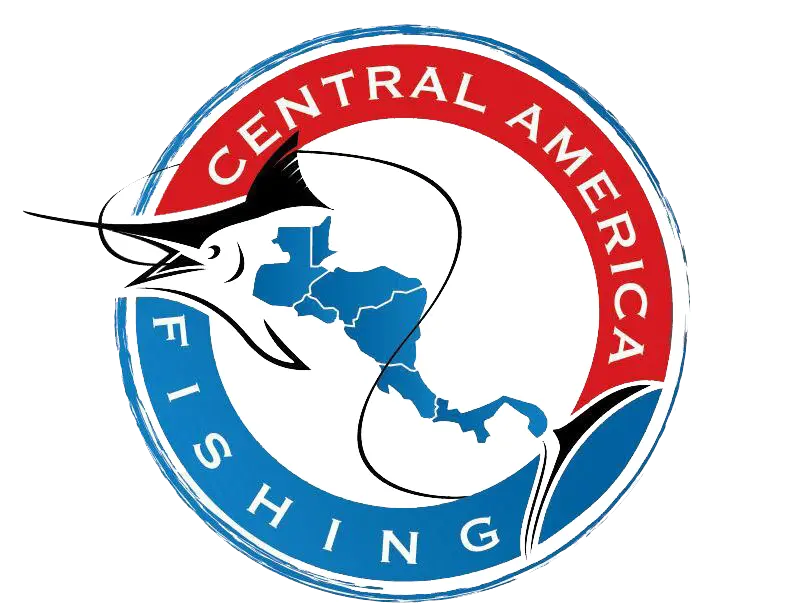Brazil Fishing Vacation
Packages
Seasons
Available Species
Fishing Info
Manaus
FAQ’s
After 18 years of planning fishing vacations throughout Central America, we are now very excited to be able to offer peacock bass fishing in Brazil. We’ve partnered with the most established and reputable operator in the Amazon, which boasts nearly three decades of experience fishing and navigating these waters, to ensure that your Brazil fishing vacation is unforgettable. Whether you are trying to catch 100+ fish in a day, collect a variety of Amazonian exotics, or trying to catch a trophy peacock bass, we can put you in the right spot at the right time to make it happen. All of our Brazil fishing vacations are fully all-inclusive, so anglers will enjoy private fishing boats, air-conditioned accommodations, amazing food including a three-course dinner each night, and a full open bar.
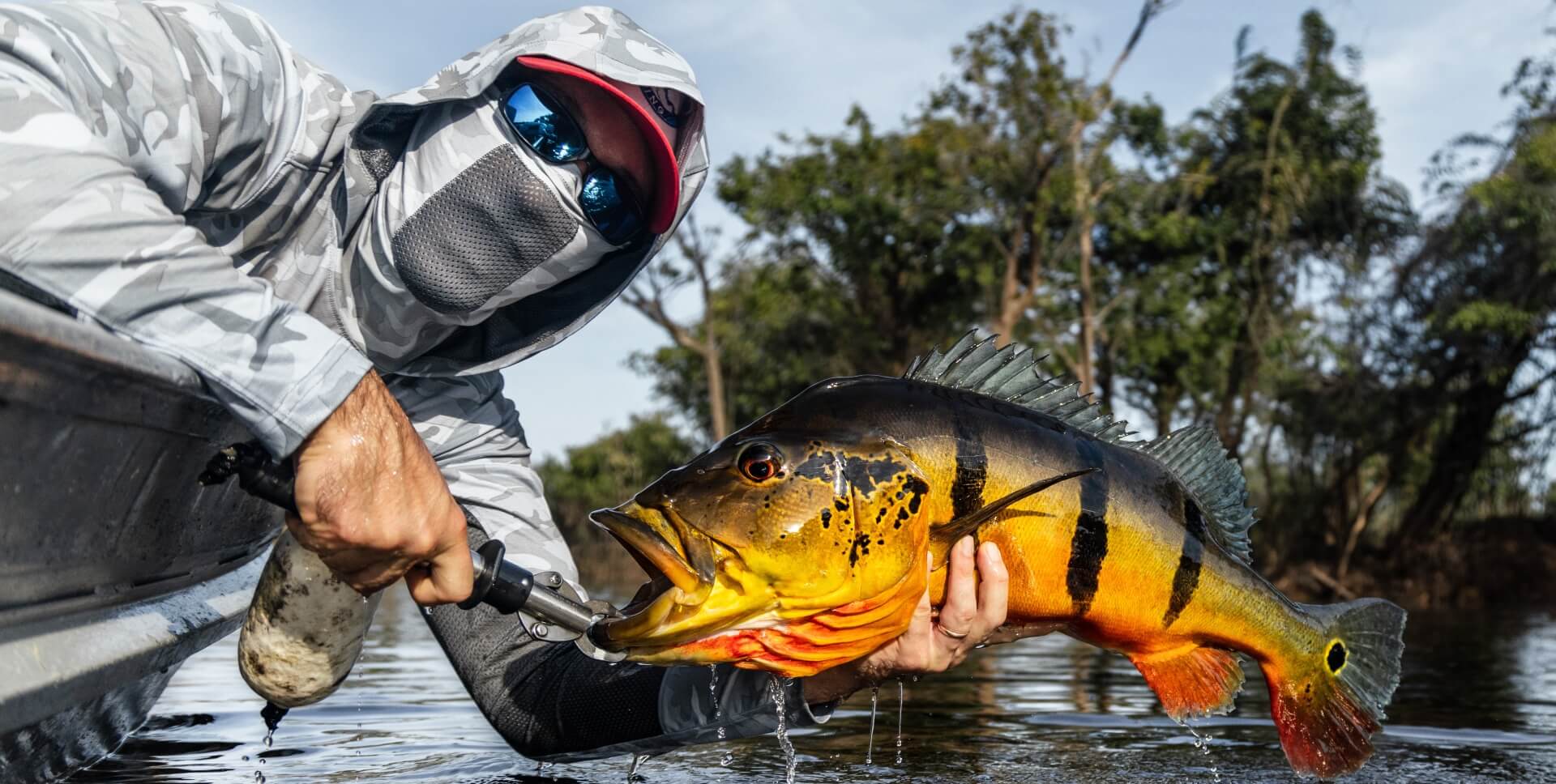
Brazil Fishing Packages
77′ Flagship Mothership
Highlights
- Spend your week on a floating fishing lodge, our 77′ Blackwater Explorer
- Custom-built mothership with a shallow draft can access parts of the Rio Negro that most operations can only dream of exploring.
- 10 air-conditioned rooms with two beds can fit up to 16 anglers
- All rooms feature 110V electrical outlets & private bathrooms (toilet & hot water shower)
- Enjoy a breakfast buffet, pack your own boat lunch, and a gourmet 3-course dinner.
- Full open bar with wine, liquor, beer, sodas, and bottled water included.
- Enjoy your meals in the large, air-conditioned dining hall or rooftop deck
- Fish for 6 days on the Rio Negro with your private, local guide
- 18 ft aluminum boats feature removable padded chairs & large casting platforms.
- All spinning tackle, baitcasters, and lures are included in your package.
- 2024 & 2025 Prices: $6,195 Double Room / $6,695 Single Room
Trip Summary
This is the quintessencial Brazil fishing vacation in the Amazon and a trip we recommend to everyone who wants to catch peacock bass. You’ll spend your week on our flagship liveaboard, the 77′ Blackwater Explorer. Her home is the famous Rio Negro, which is not only is this the largest tributary of the Amazon River, it’s also the world’s largest and best peacock bass fishery. This is the most productive and most consistent Amazon fishing package we offer as this trip features both high numbers and big sized fish. From October through March, the mothership will constantly move to guarantee that you are fishing in optimal river conditions every week of the season. Even your tackle is included: Shimano spinning reels & bait casters, Okuma Rods, and all necessary lures that have been curated for these waters over two decades of fishing.
Enjoy air conditioned rooms with private bathrooms, an air conditioned dining hall, and a huge open-air rooftop deck to take in the incredible surroundings. Your fishing package includes gourmet food, wine, and a full open bar. You’ll fish for six days with your private guide on an 18′ aluminum bass boat specifically designed to fish on the Rio Negro.
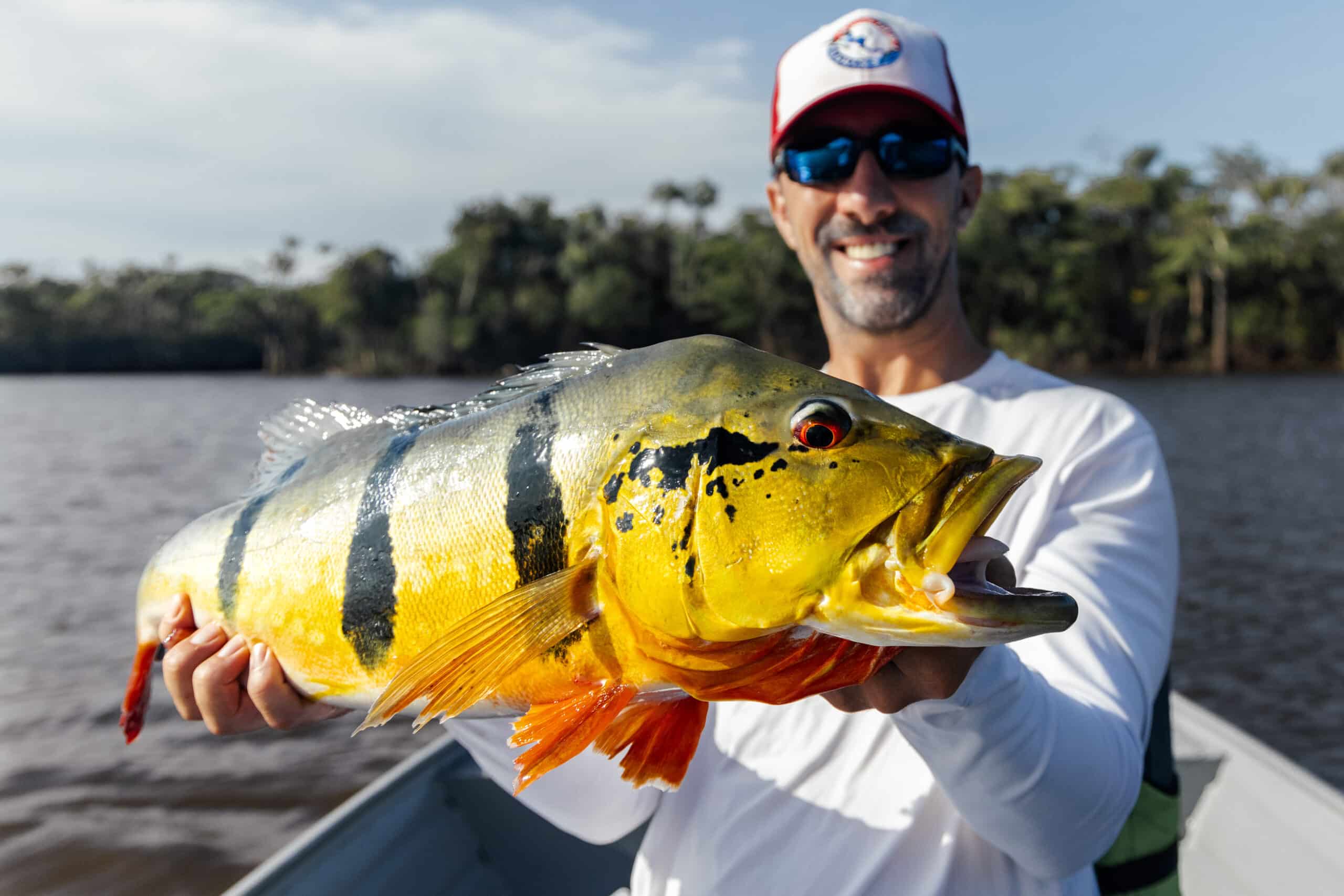
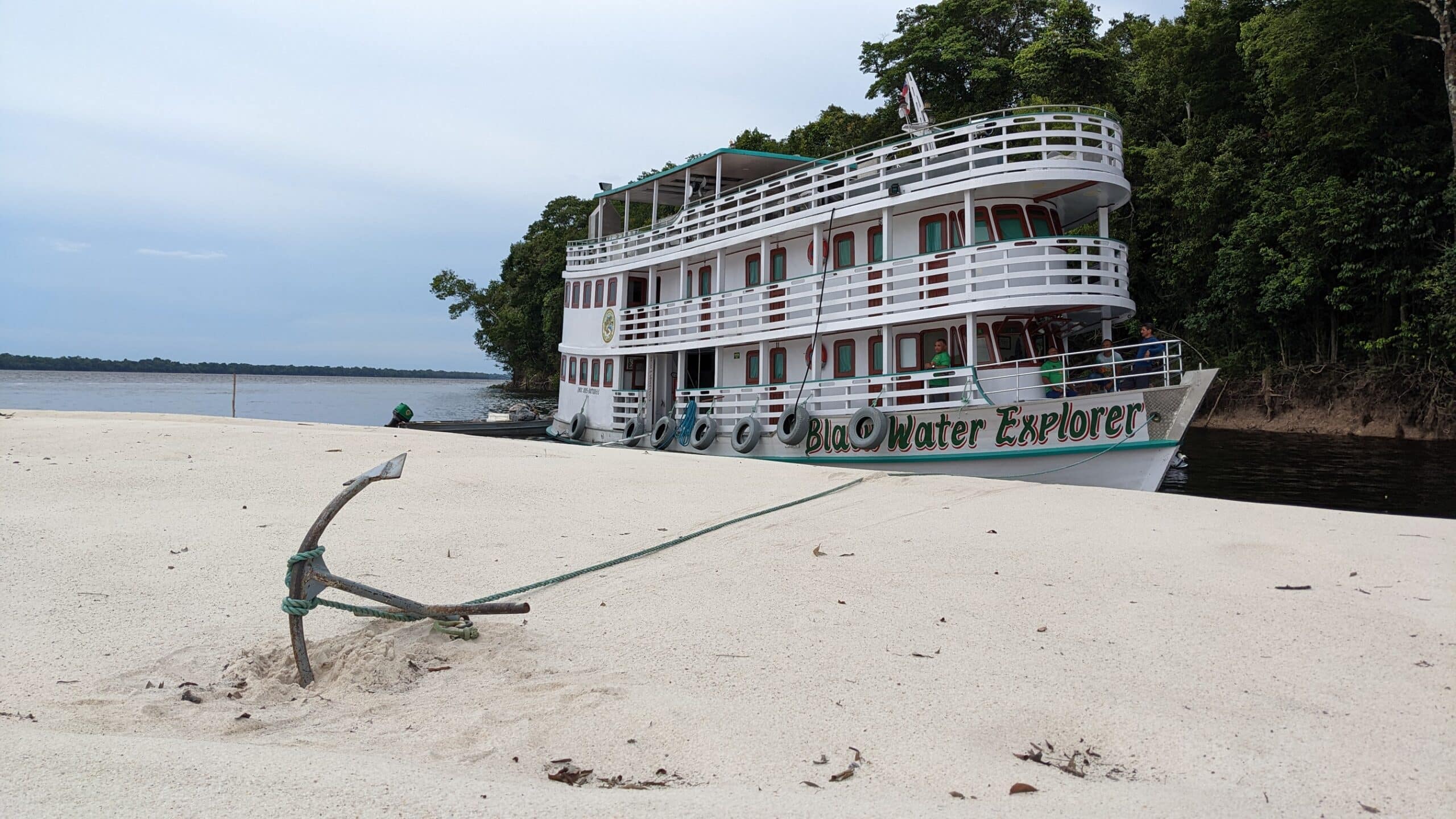
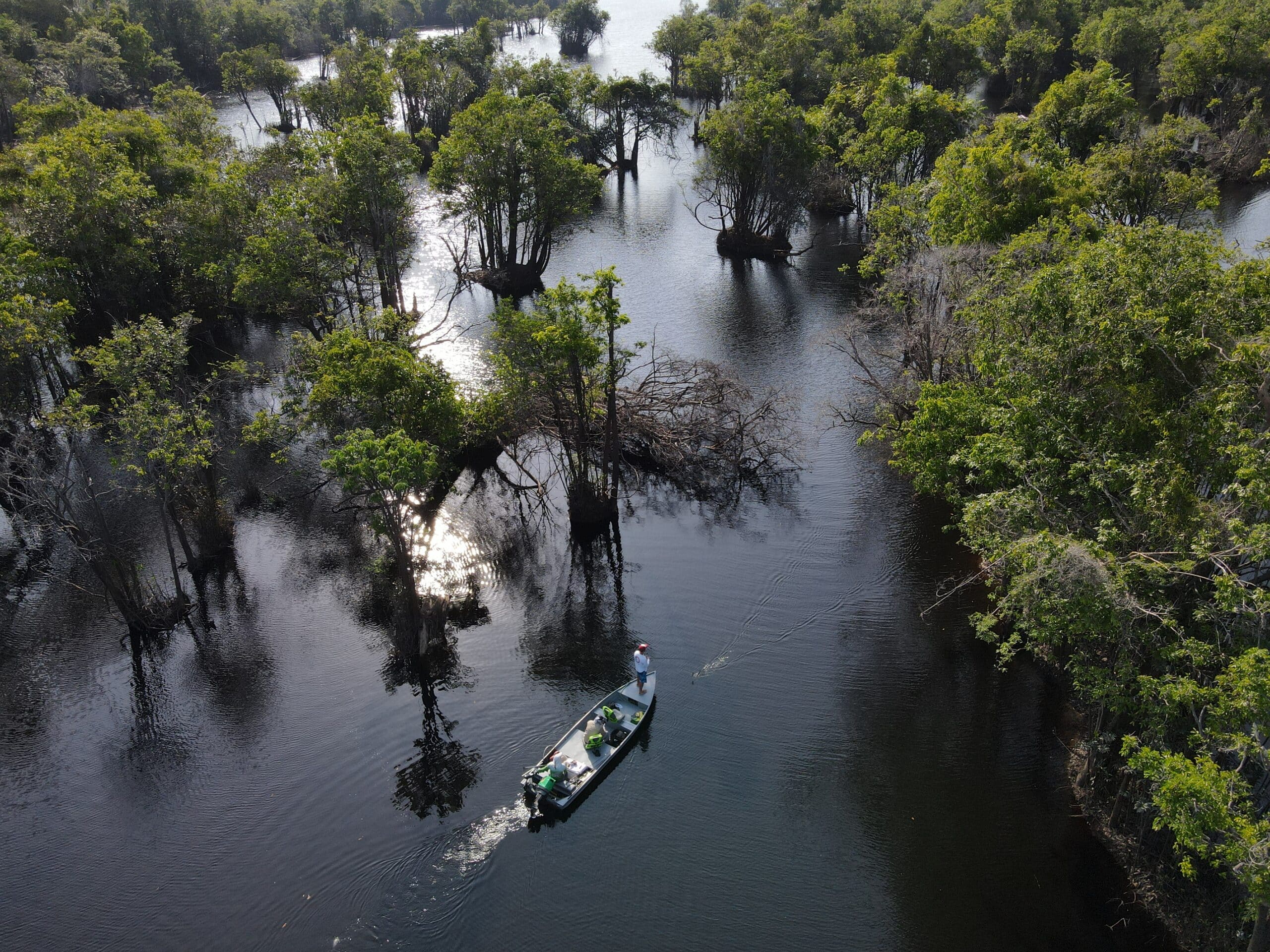

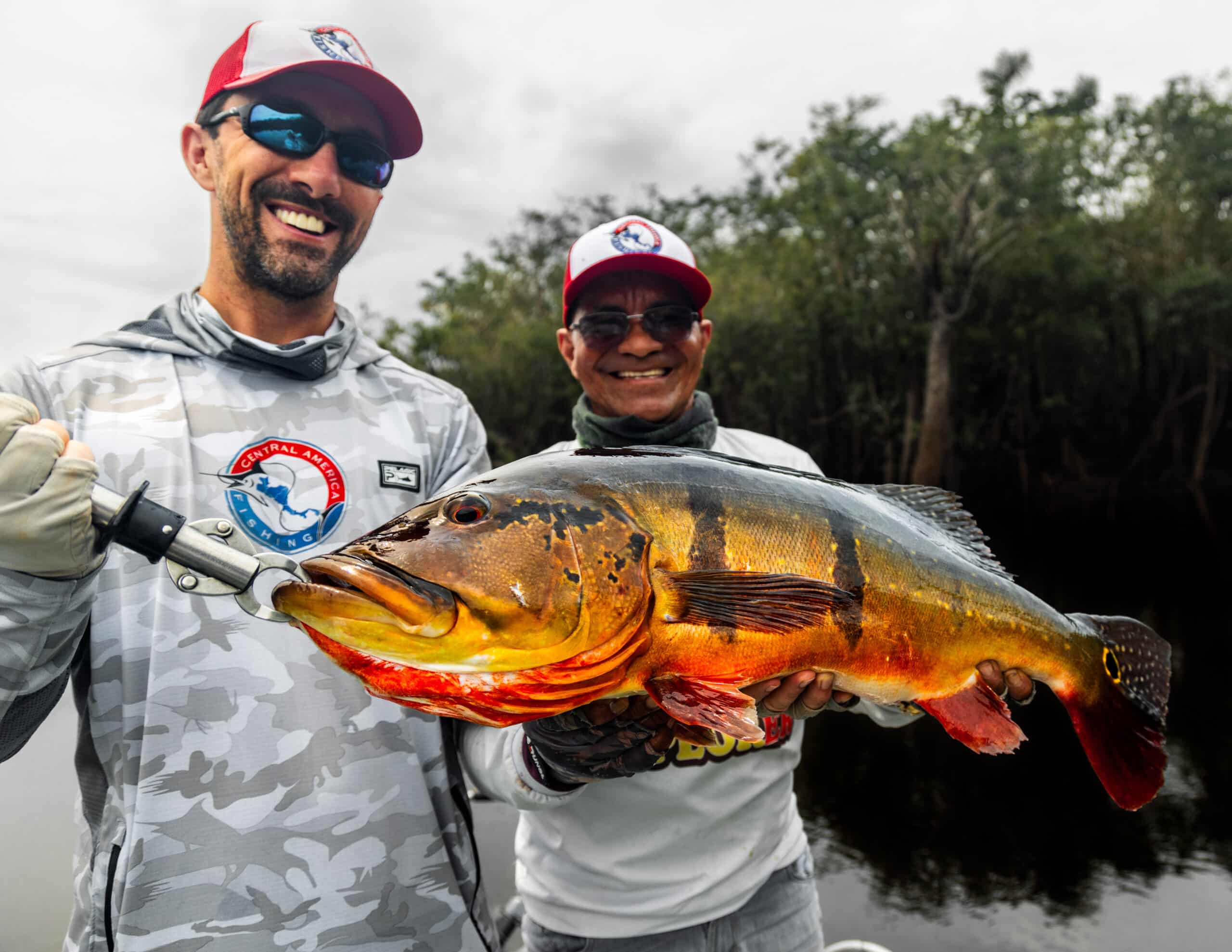
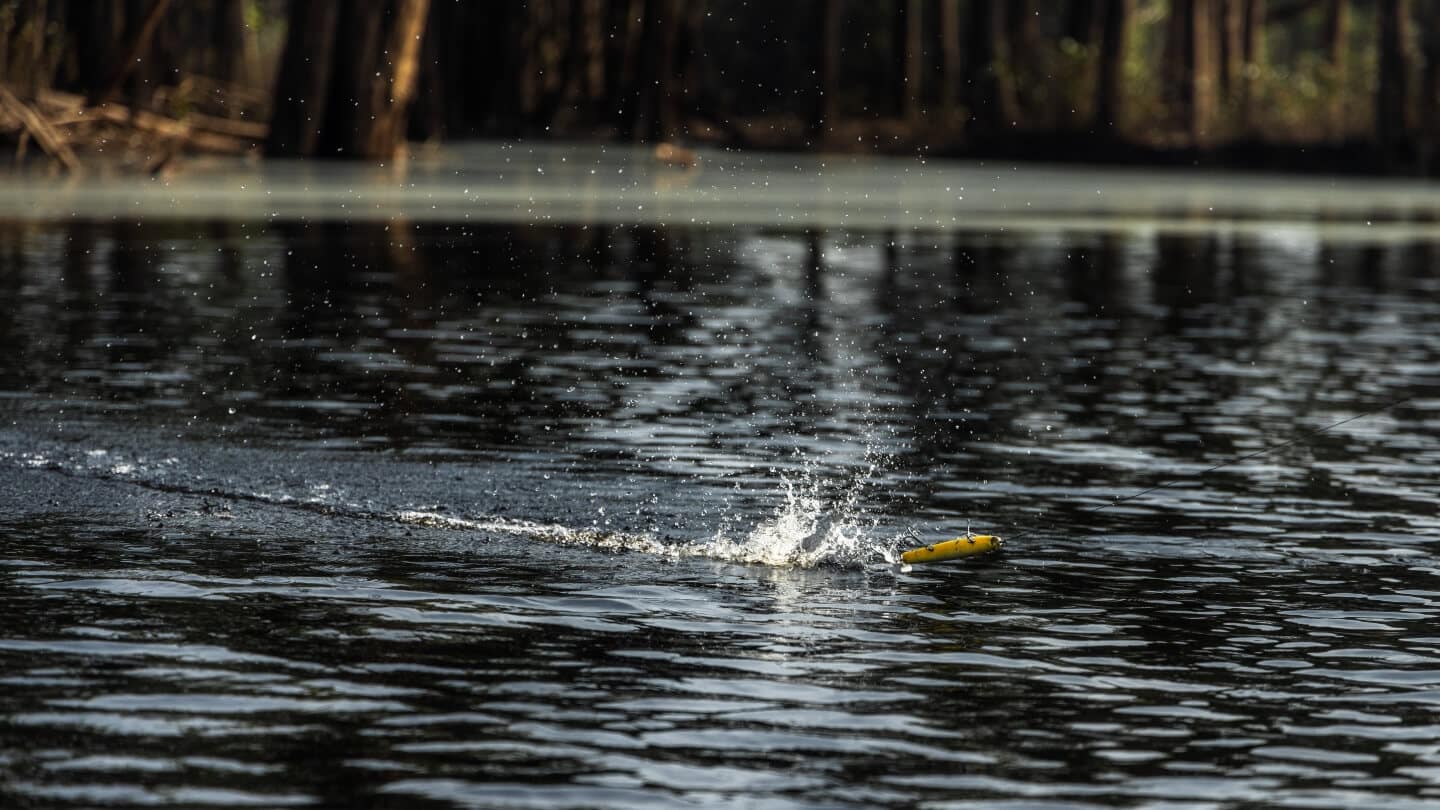
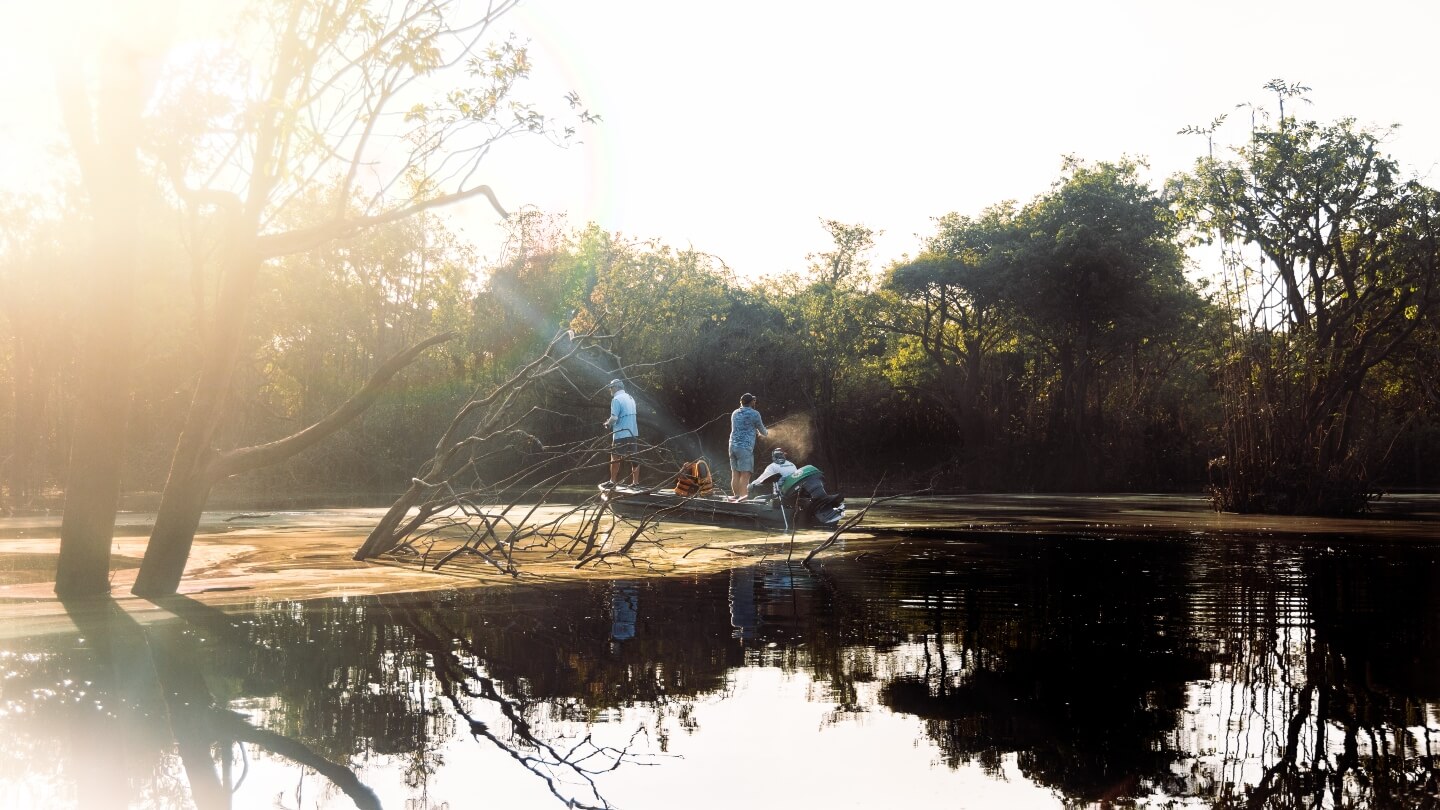
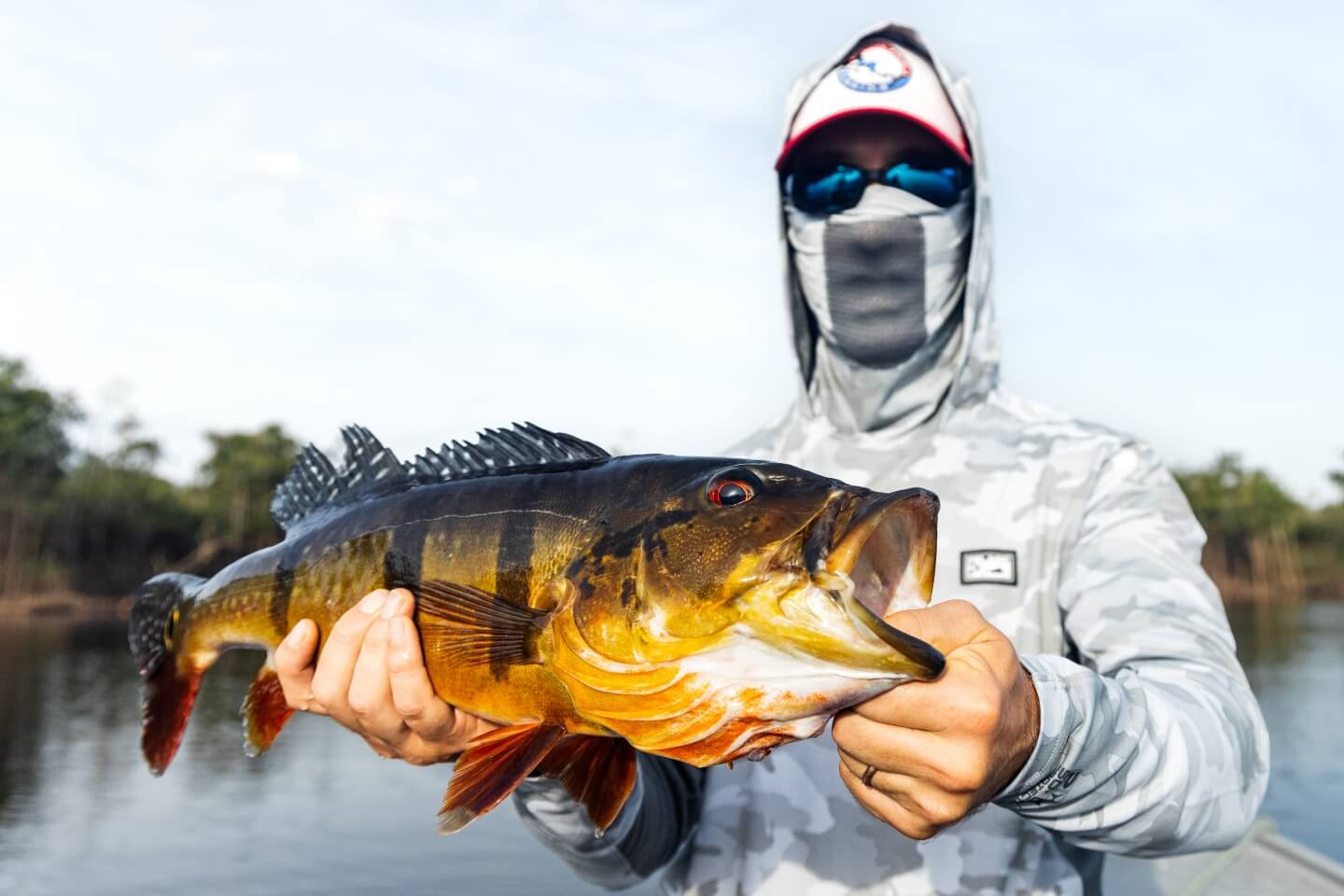
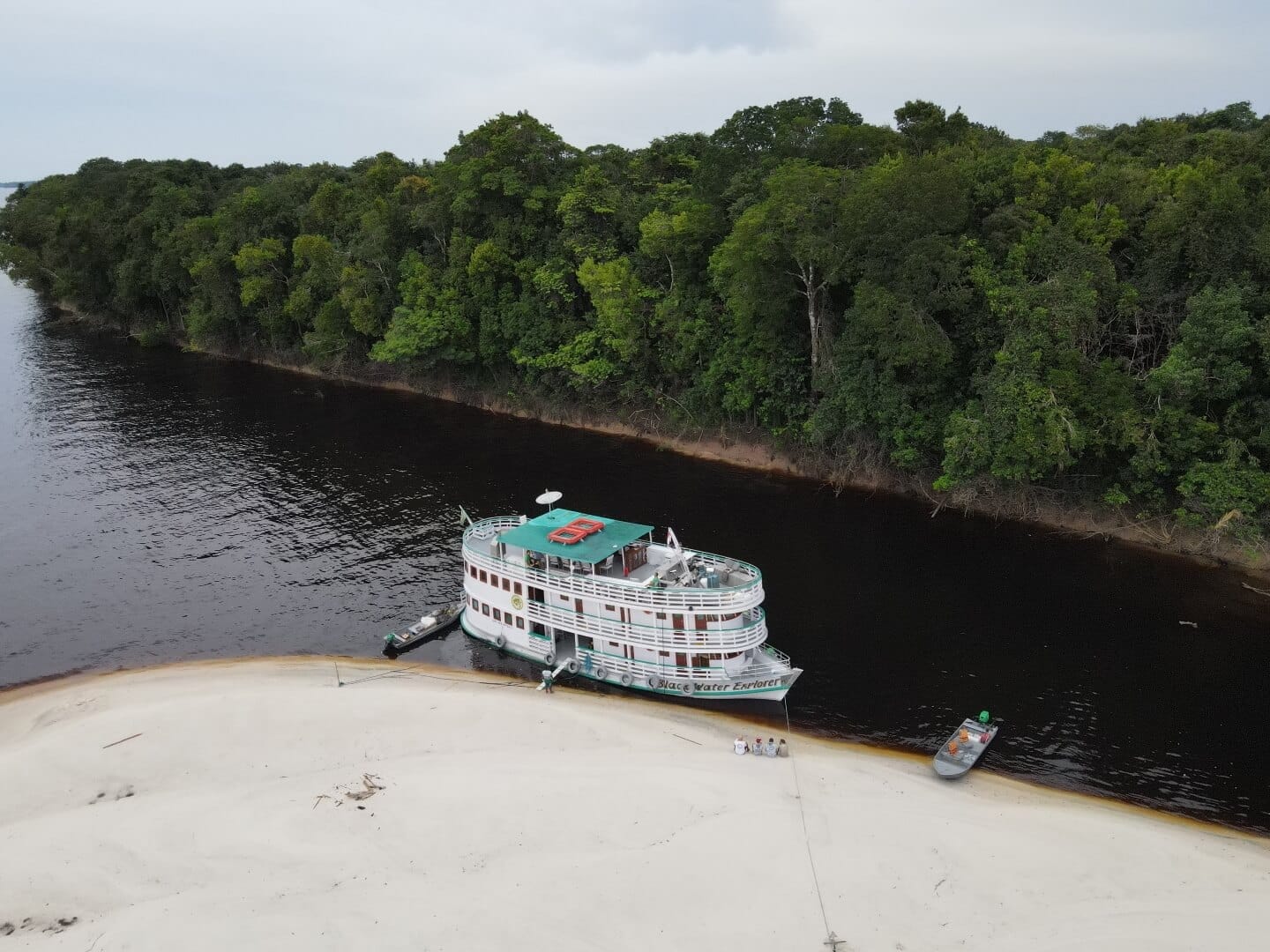
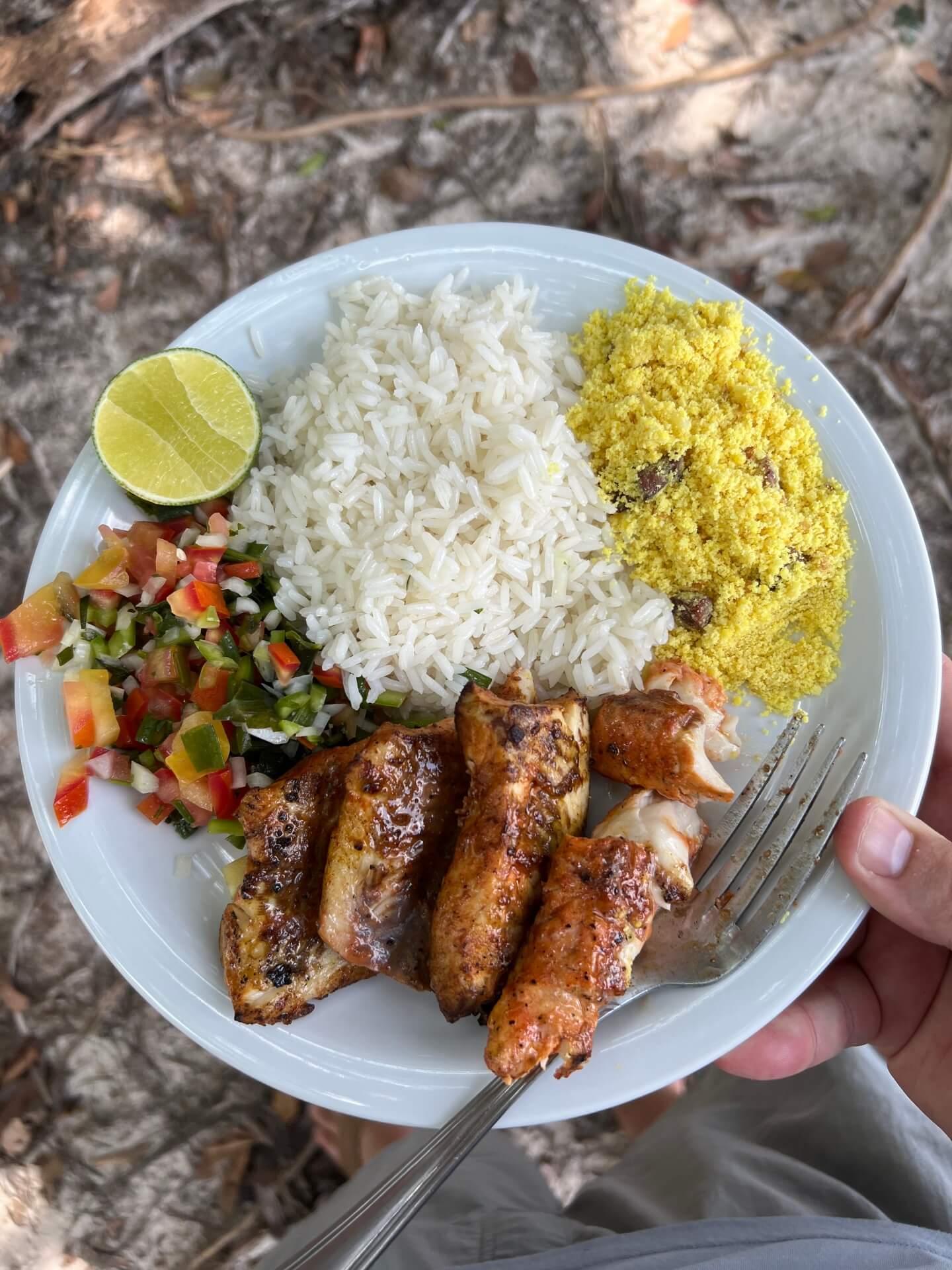
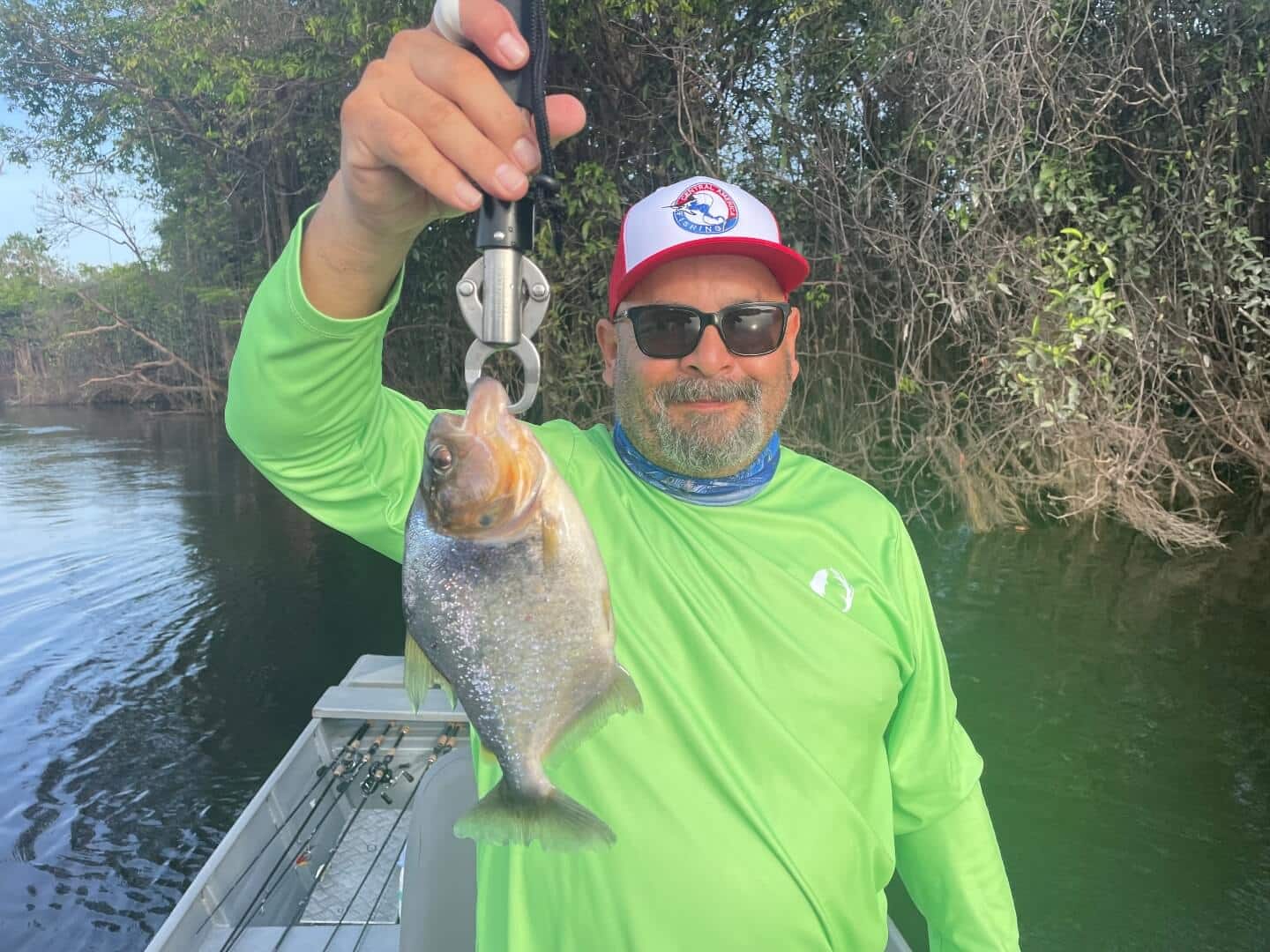
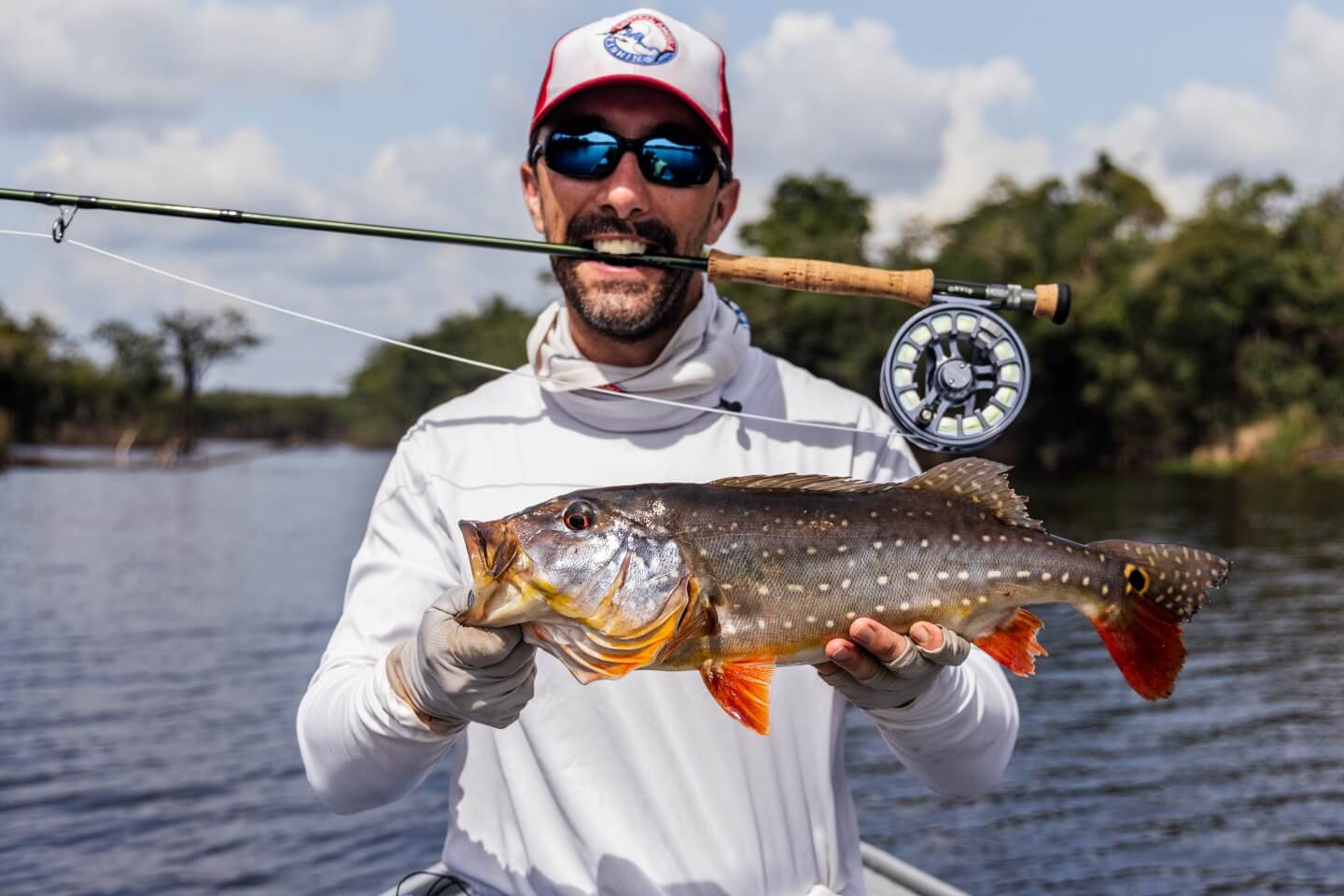
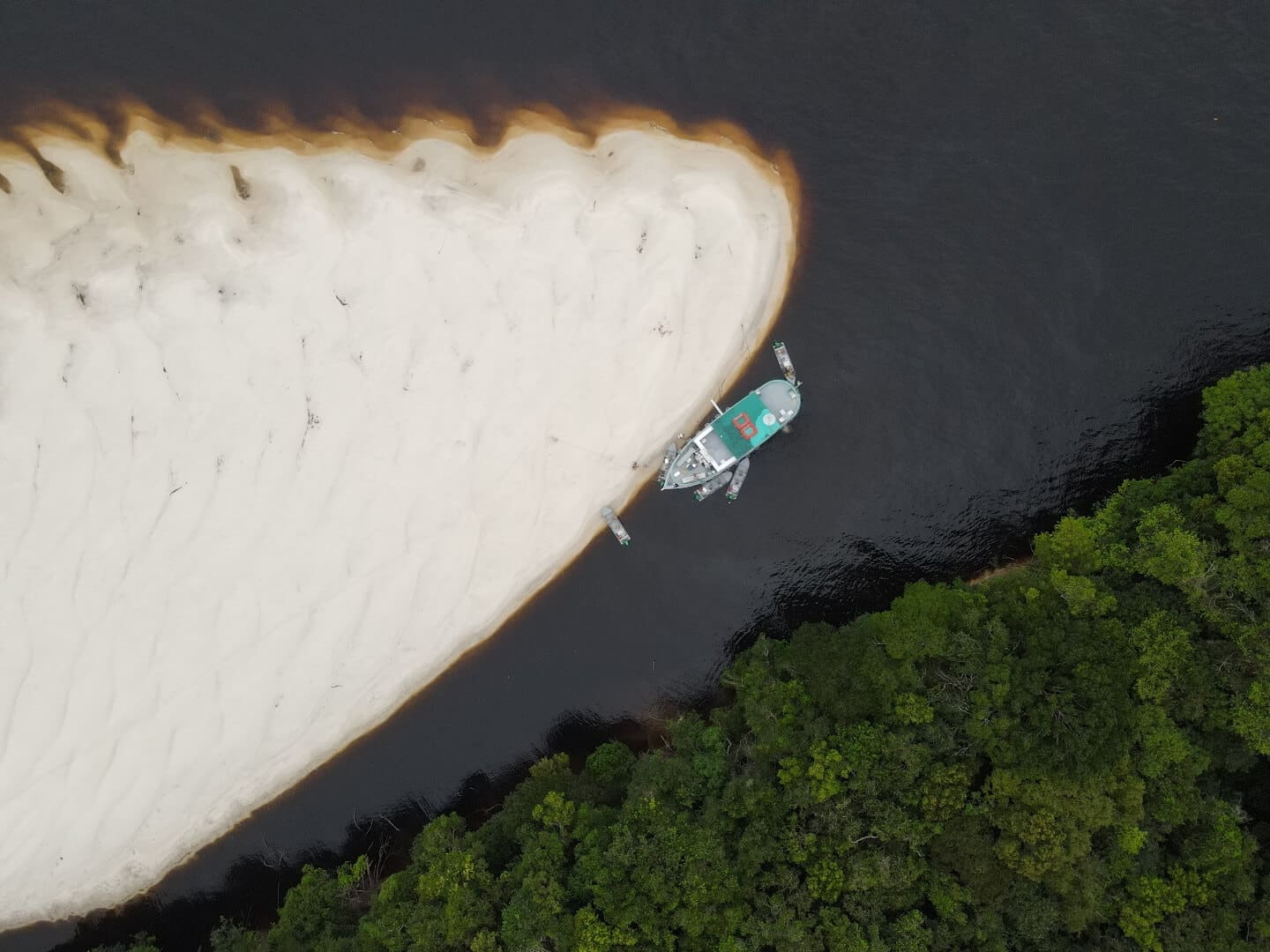
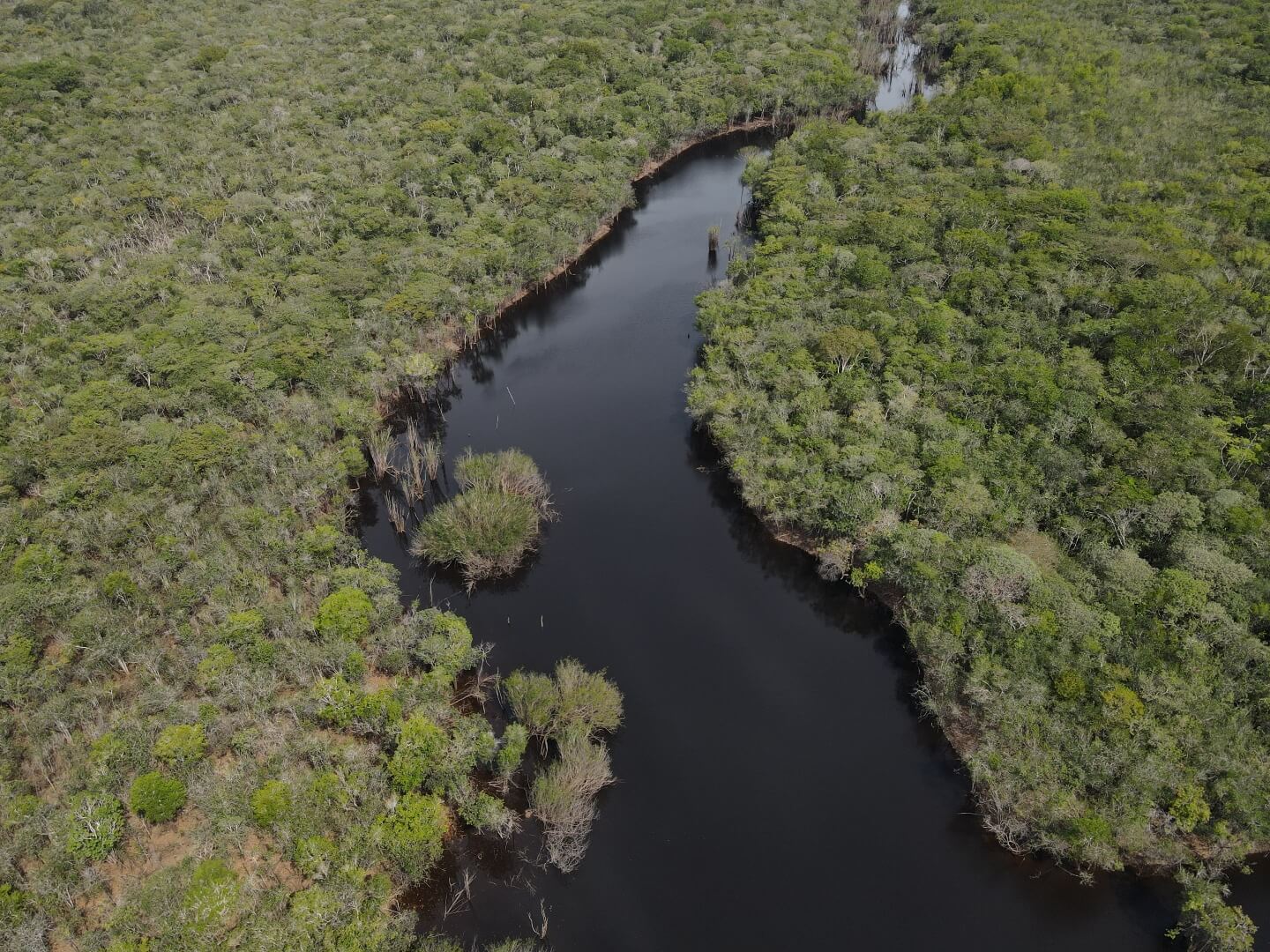
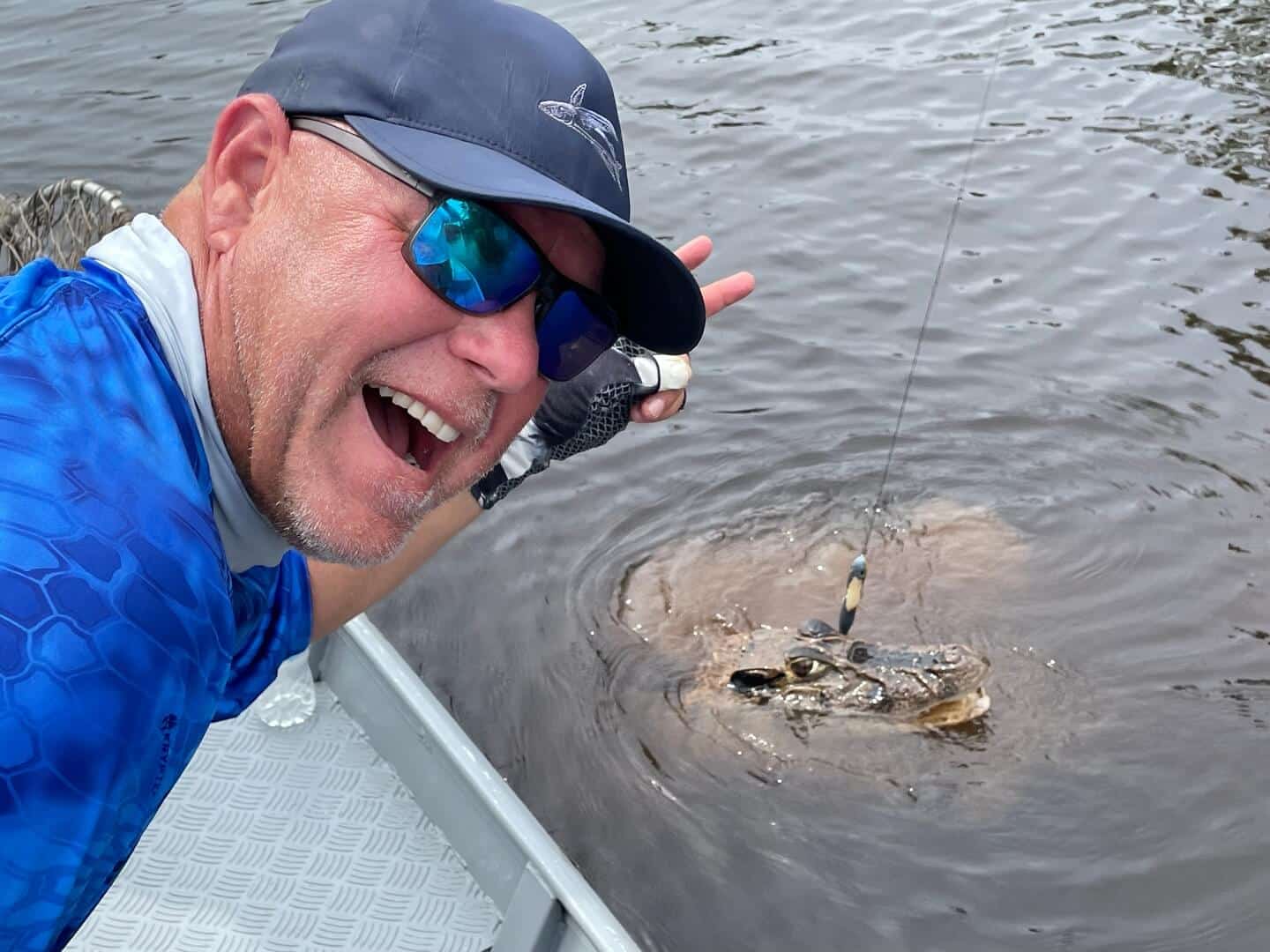
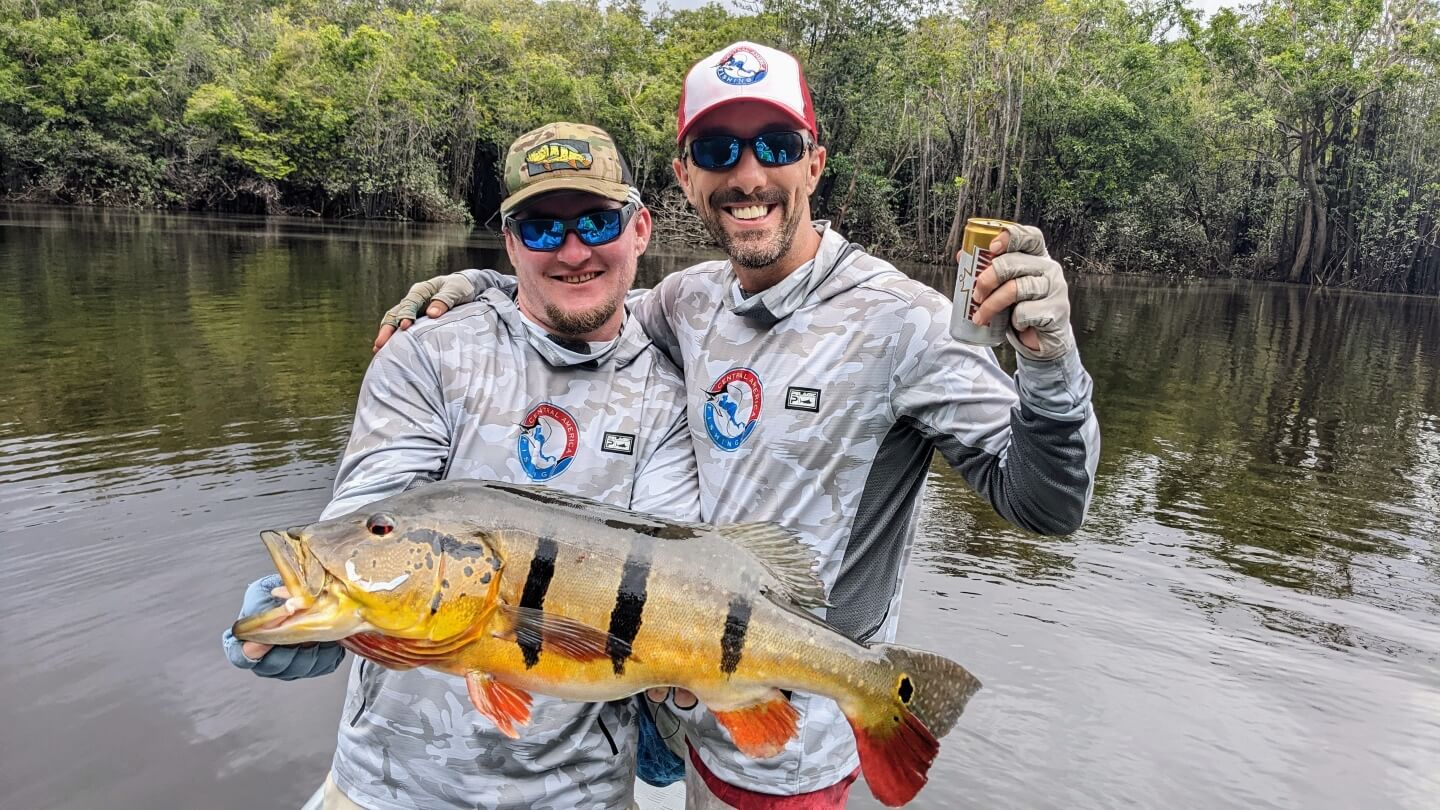
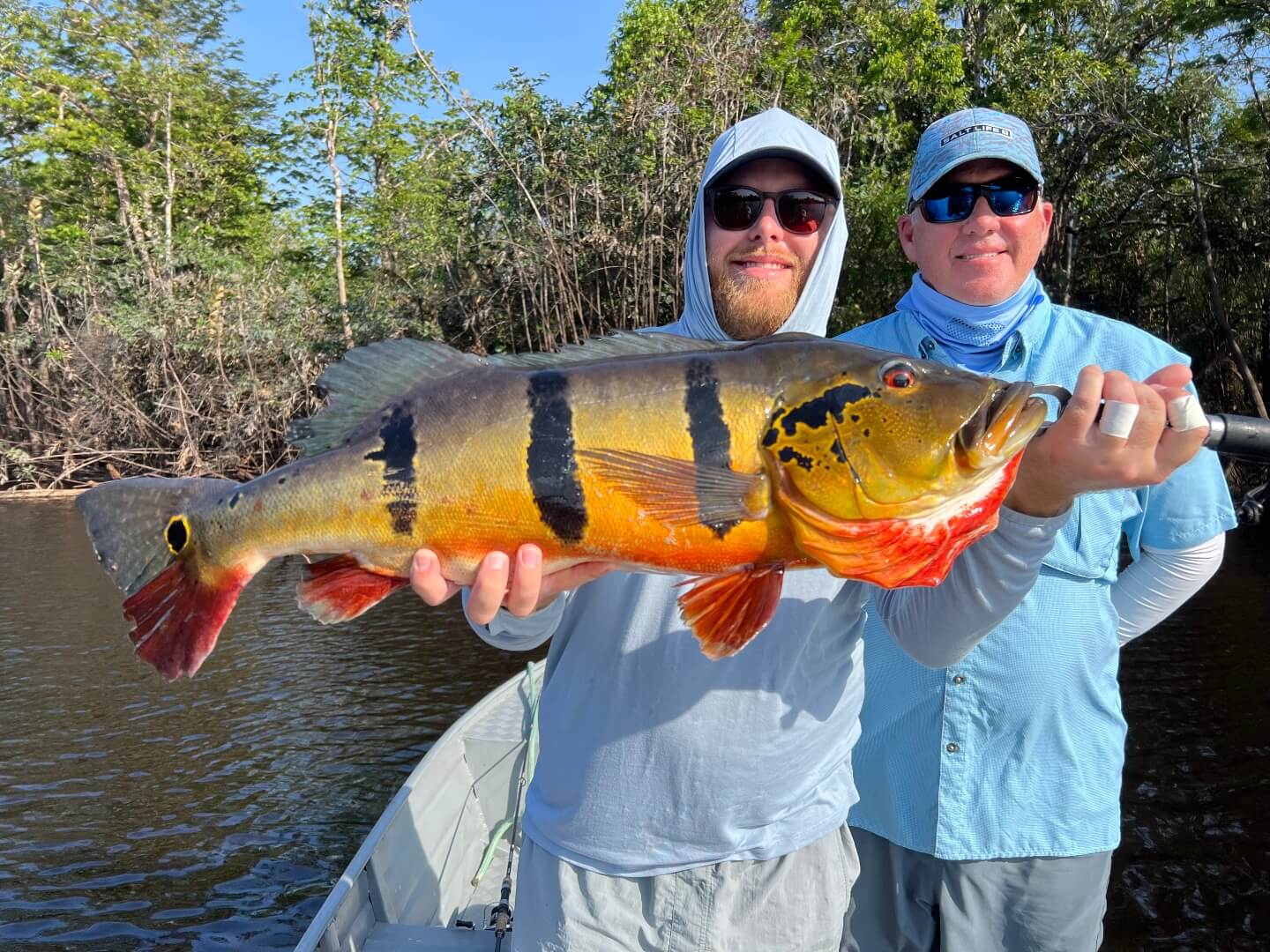
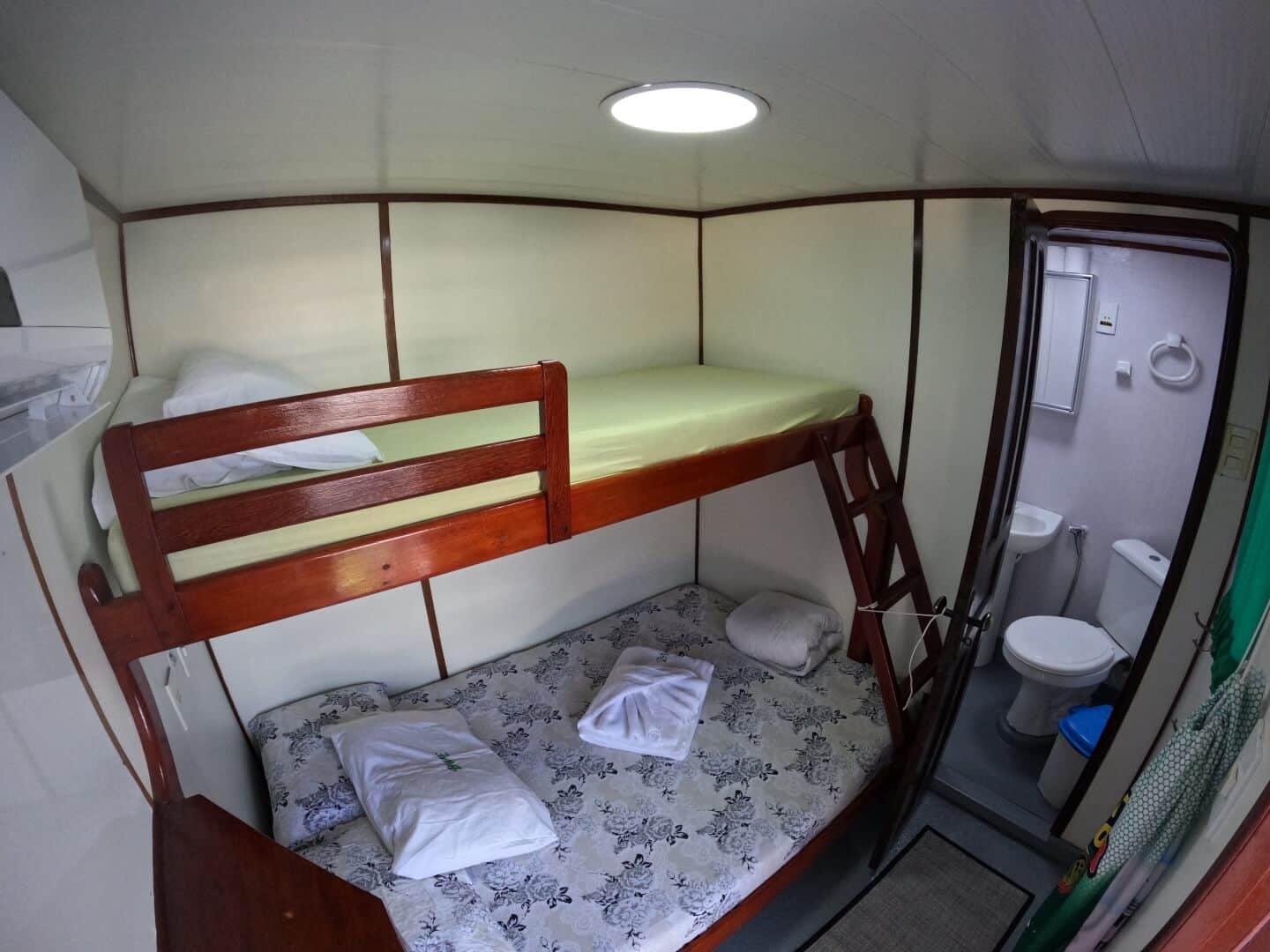
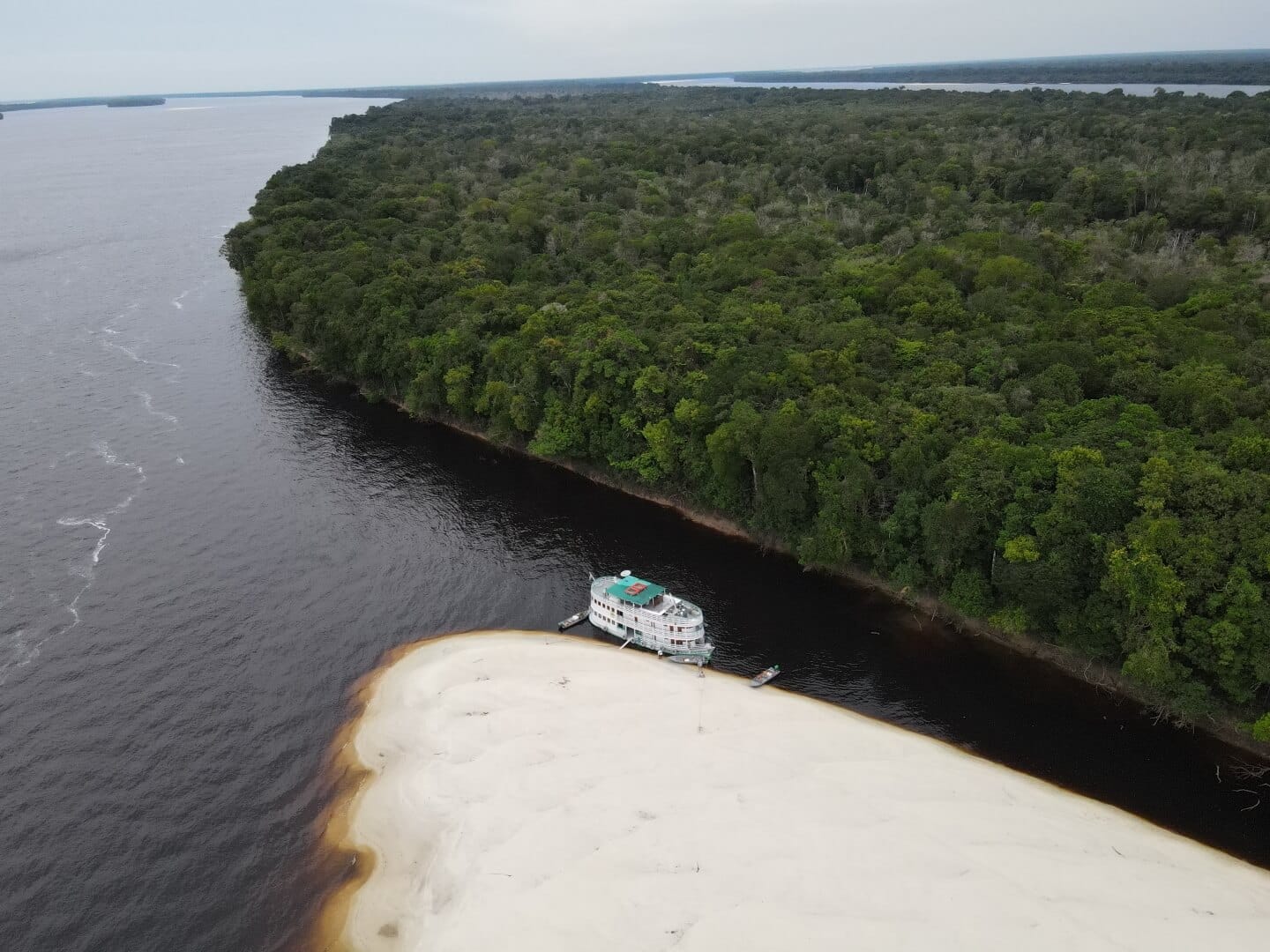
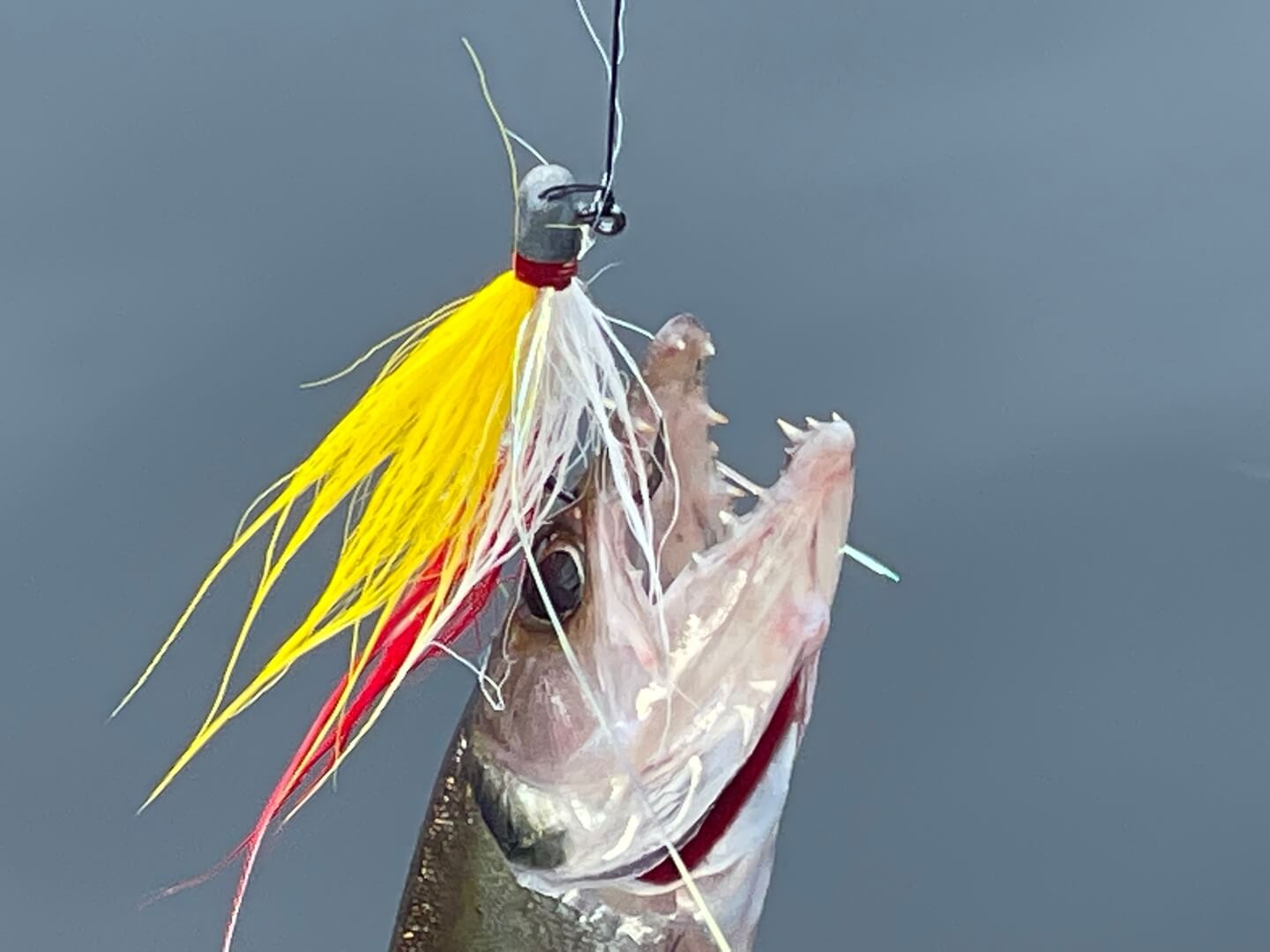
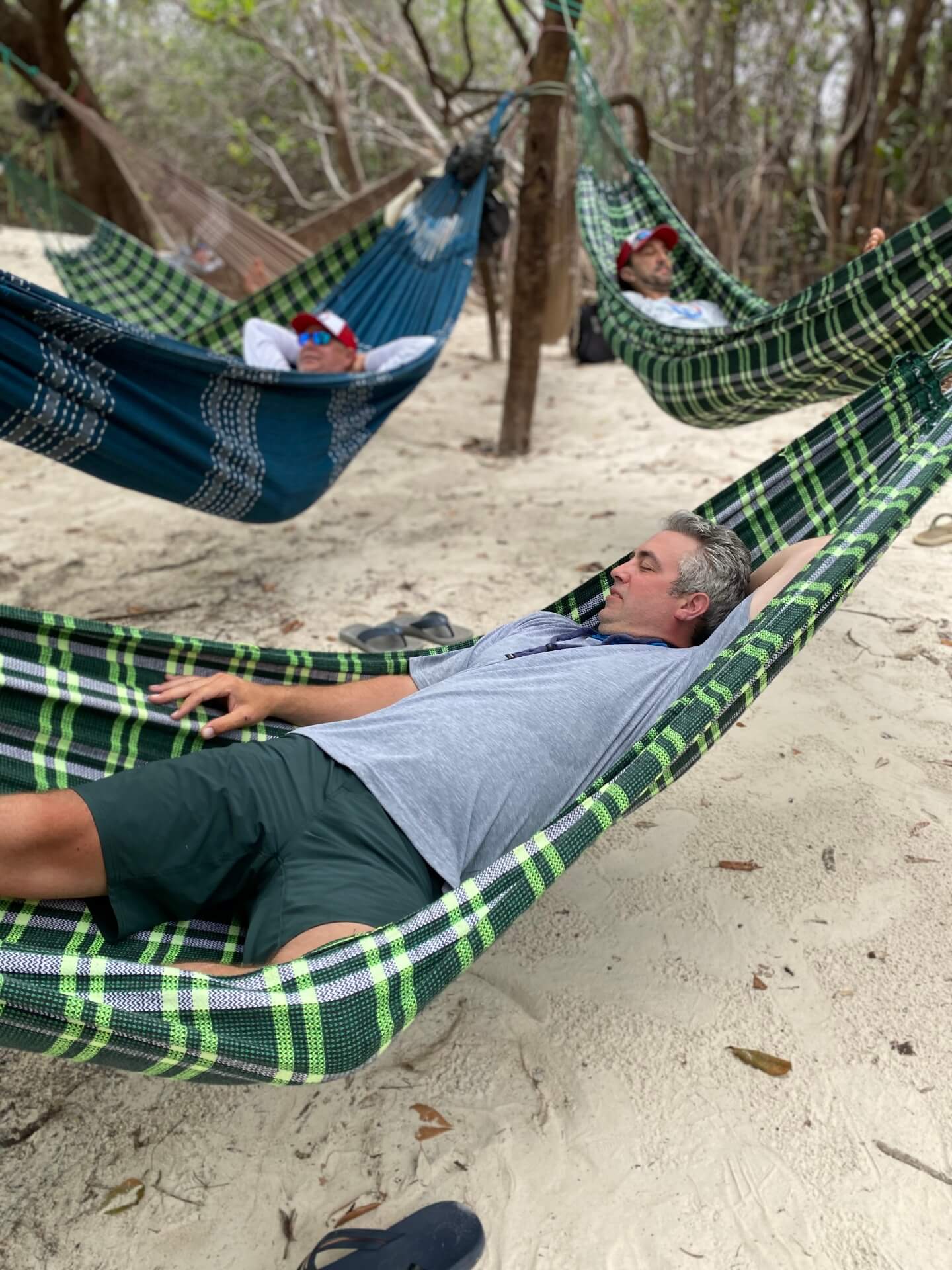
80′ Luxury Liveaboard
Highlights
- Our newest and most luxurious mothership features just 8 suites
- This is a great trip for 20 lb trophy fish while also producing good numbers.
- Custom-built for this fishery, she features just a 16″ draft
- Each suite features a king bed and private bathroom.
- Rooms are equipped with 110V electrical outlets to charge phones & batteries.
- Enjoy a breakfast buffet, pack your own boat lunch, and a gourmet 3-course dinner.
- Full open bar with wine, liquor, beer, sodas, and bottled water included.
- Enjoy your meals in the large, air-conditioned dining hall or rooftop deck
- Fish for 6 days on the Rio Negro with your private, local guide
- 18 ft aluminum boats feature removable padded chairs & large casting platforms.
- All spinning tackle, baitcasters, and lures are included in your package.
- 2024 & 2025 Prices: $6,995 for a single occupancy suite.
Trip Summary
Enjoy a week of peacock bass fishing in Brazil on our newest and most luxurious mothership. The Blackwater Adventurer was custom-built to fish in remote regions of the Rio Negro, and to do so with an exclusive group of lucky anglers. Despite her size, she has just a 16″ draft so she can put you into waters that many never even try to reach. Accessible only by float plane, this trip offers a good average daily catch rate of 20-40 fish per day as well as many fantastic opportunities at 20 lb trophy fish. With a six-month fishing season from October to March, the mothership will move more than 1,000 miles each season to ensure that you are fishing in the most productive region of the river.
Her eight, air-conditioned suites all feature a king bed so this trip is for anglers who want private accommodations and/or couples. Each suite also has a private bathroom with a sink, toilet, and hot water shower. The rooms are also equipped with 110V electrical outlets to charge phones, batteries and run CPAP machines. All conventional and spinning tackle is already icluded as part of our all-inclusive fishing package.
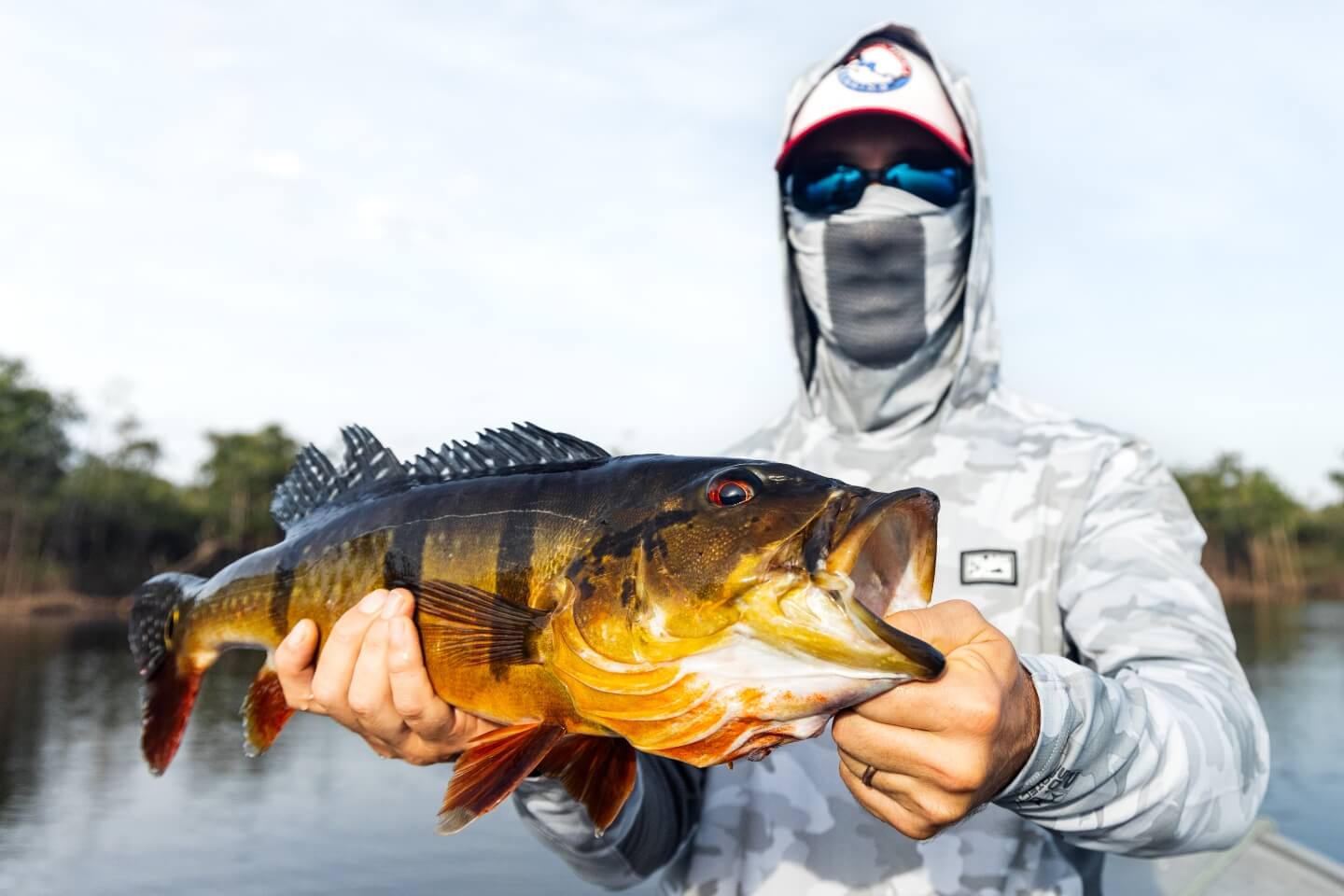
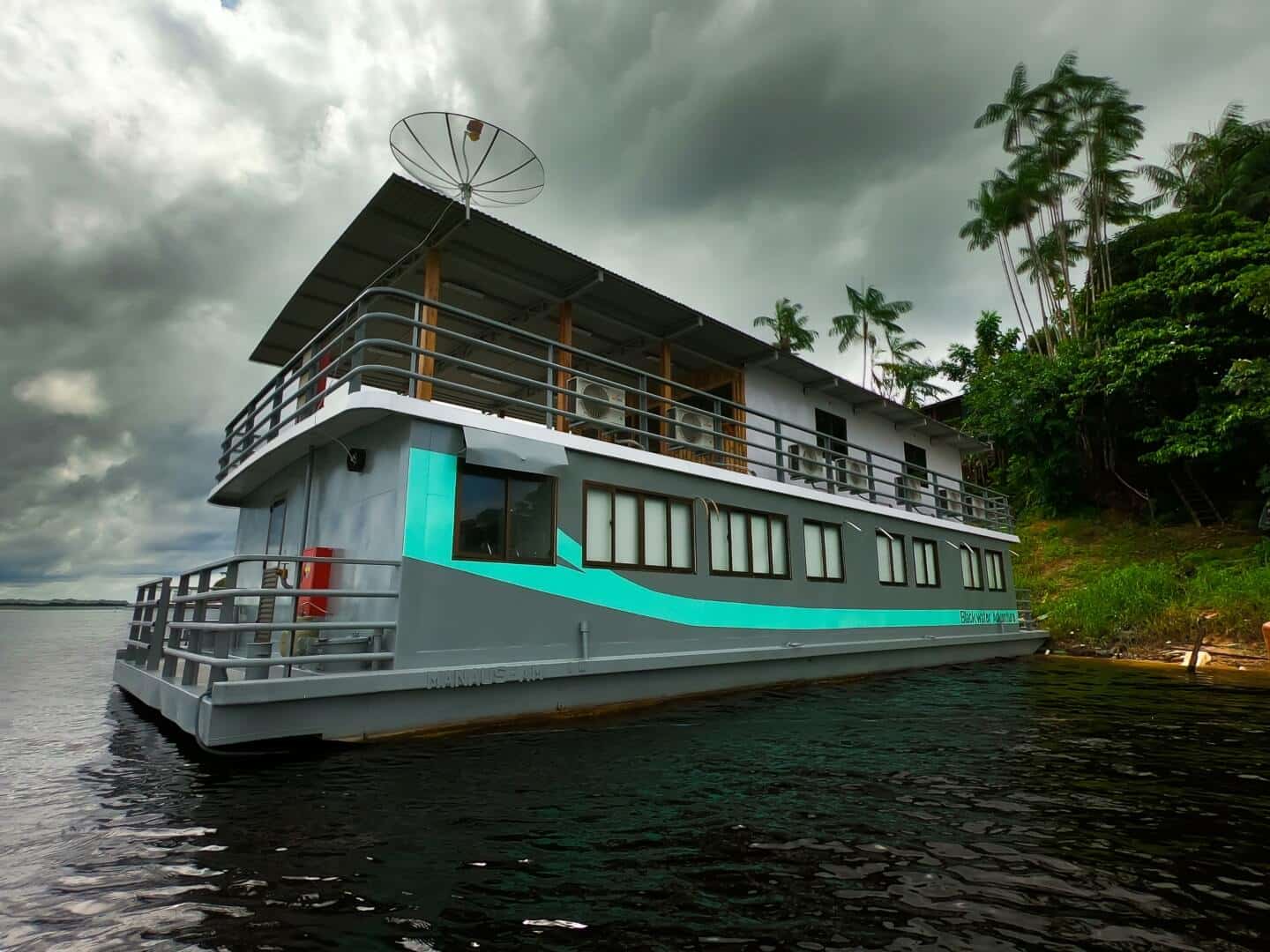
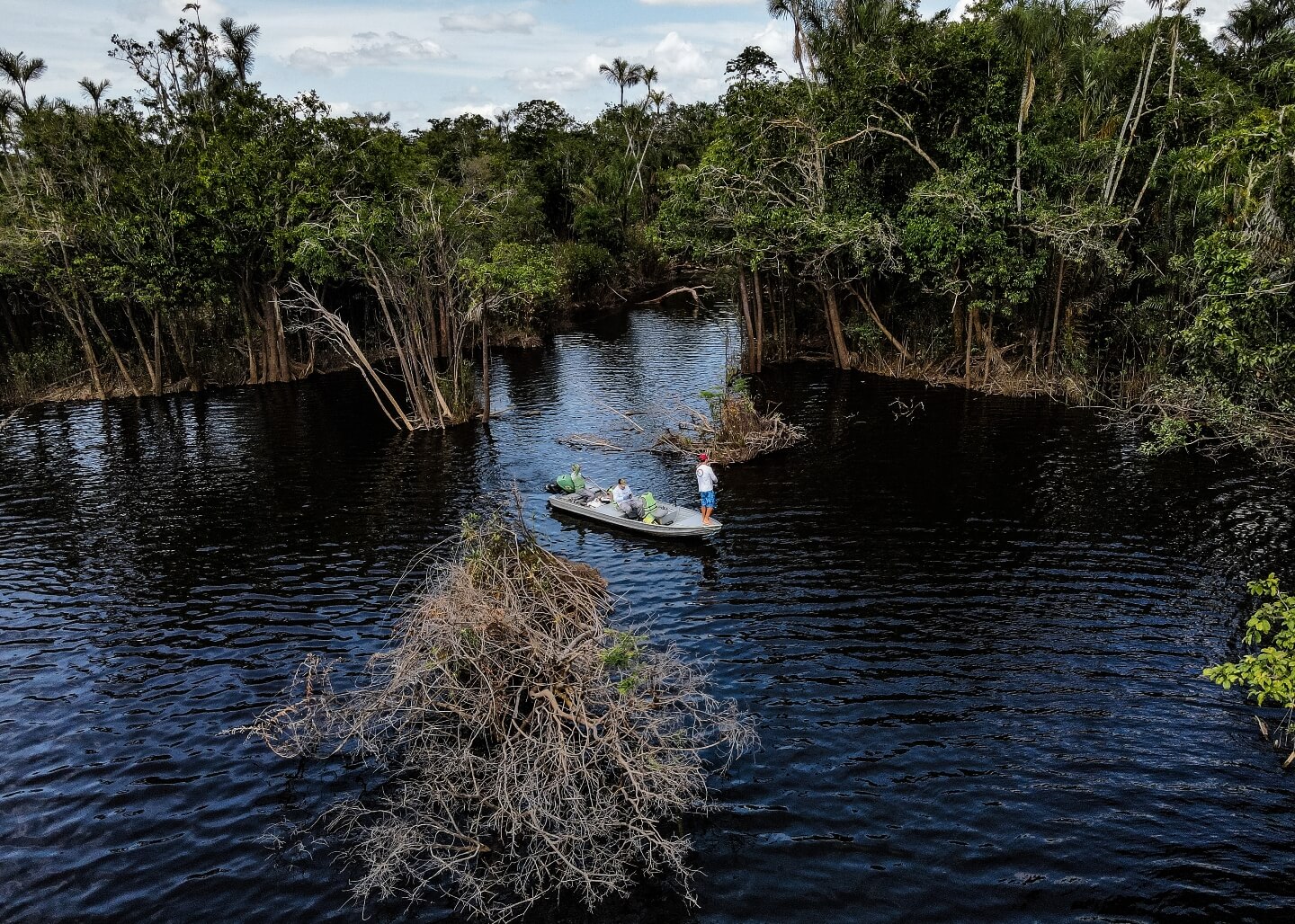


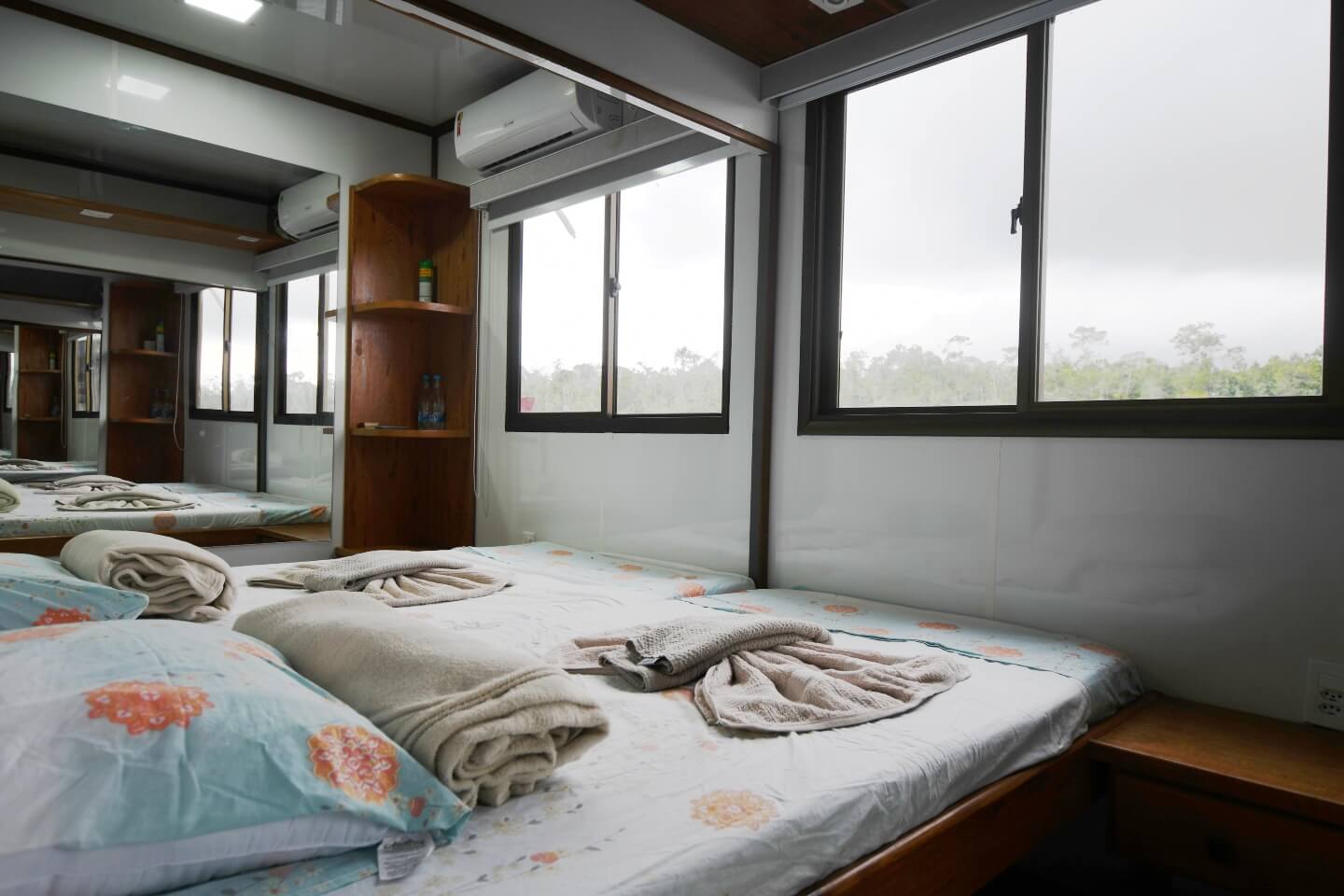
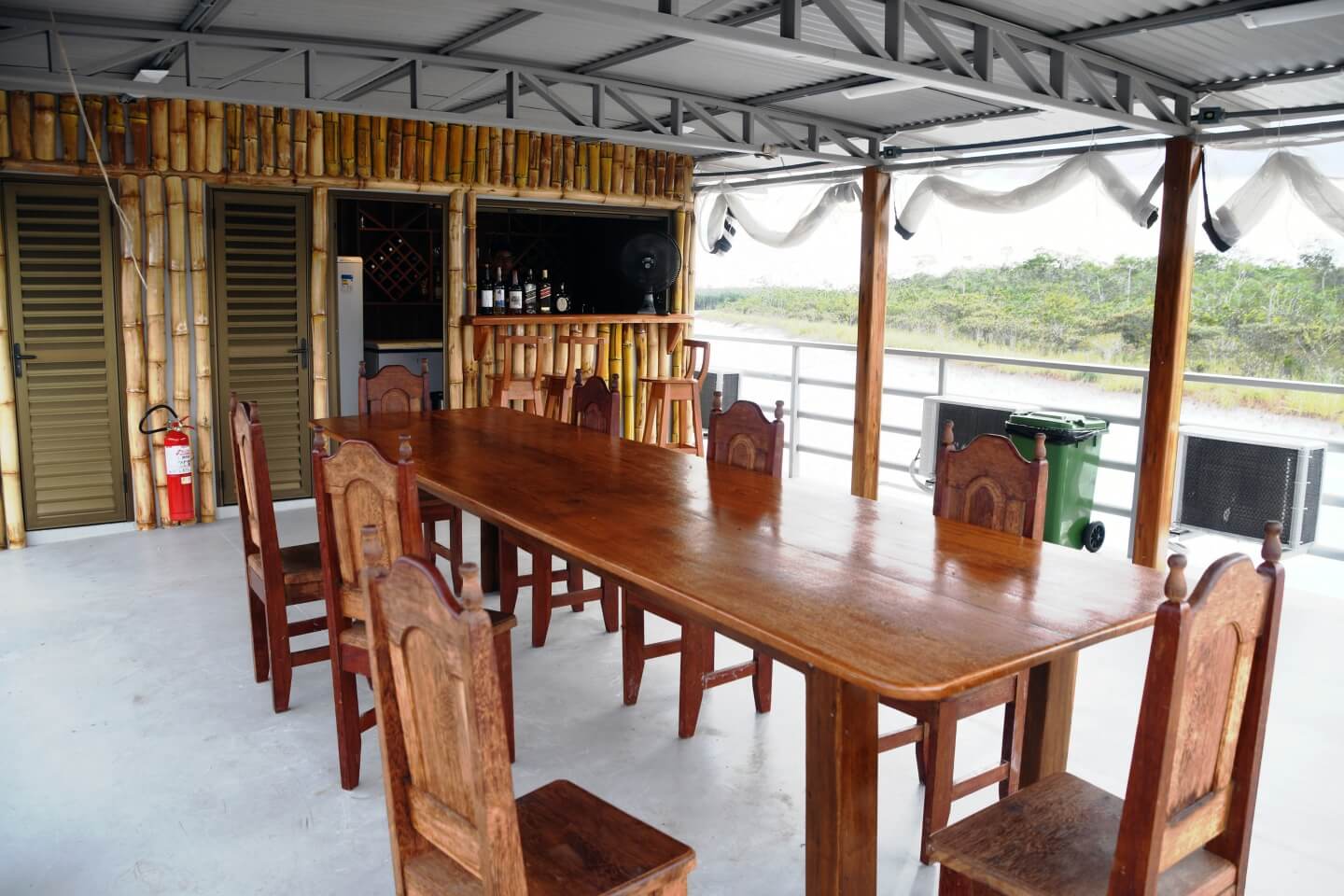
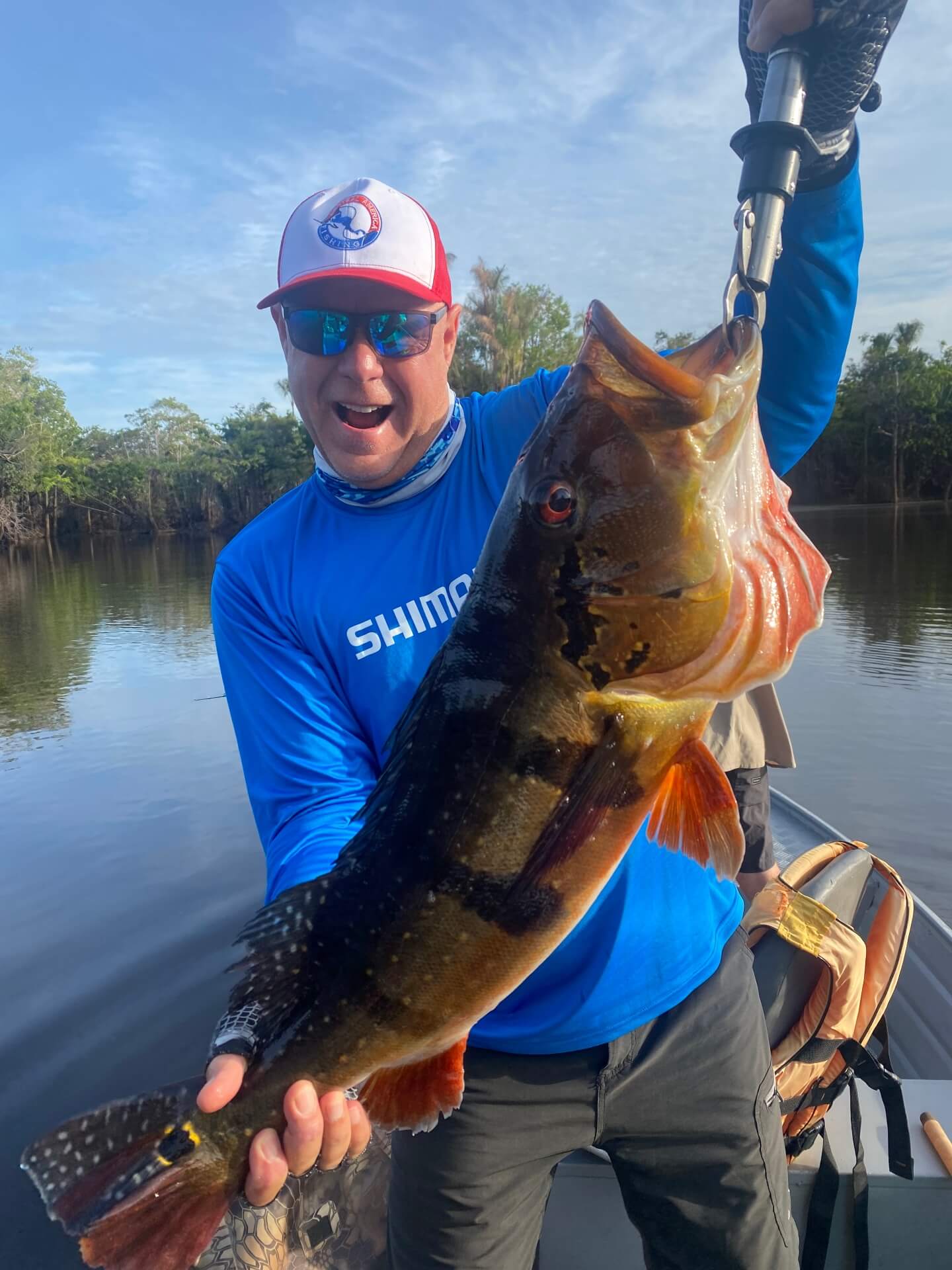
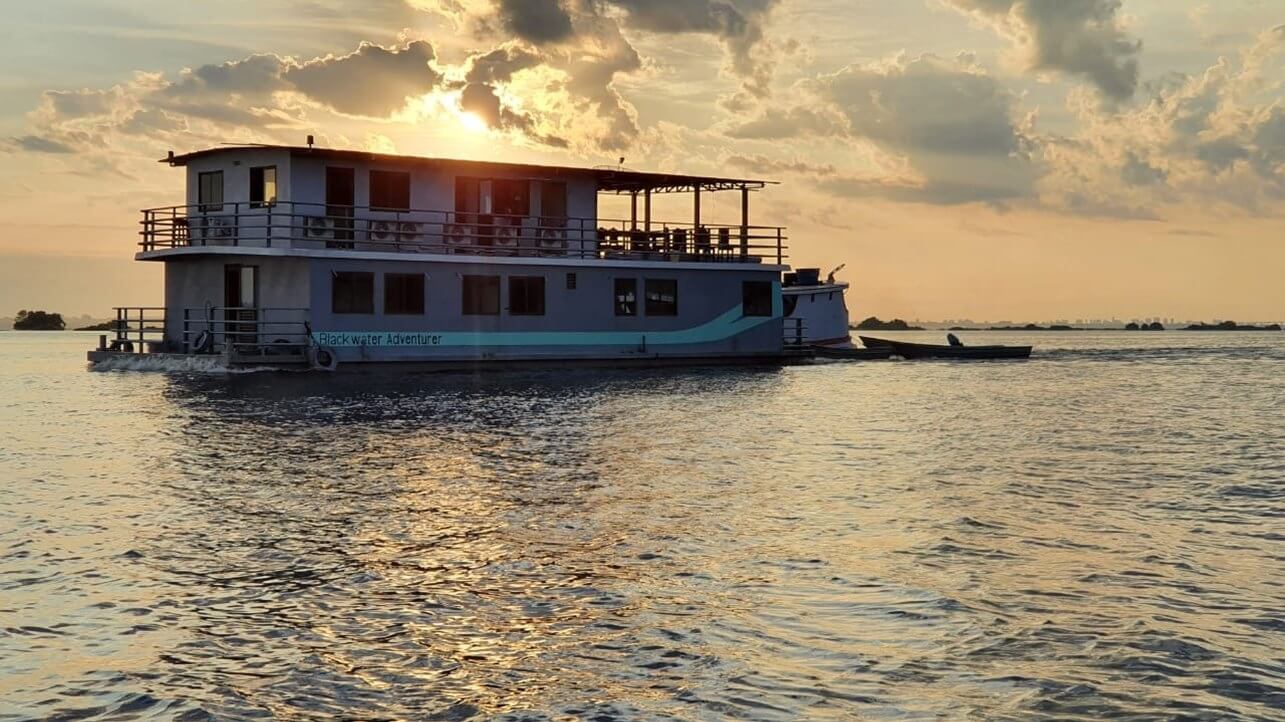
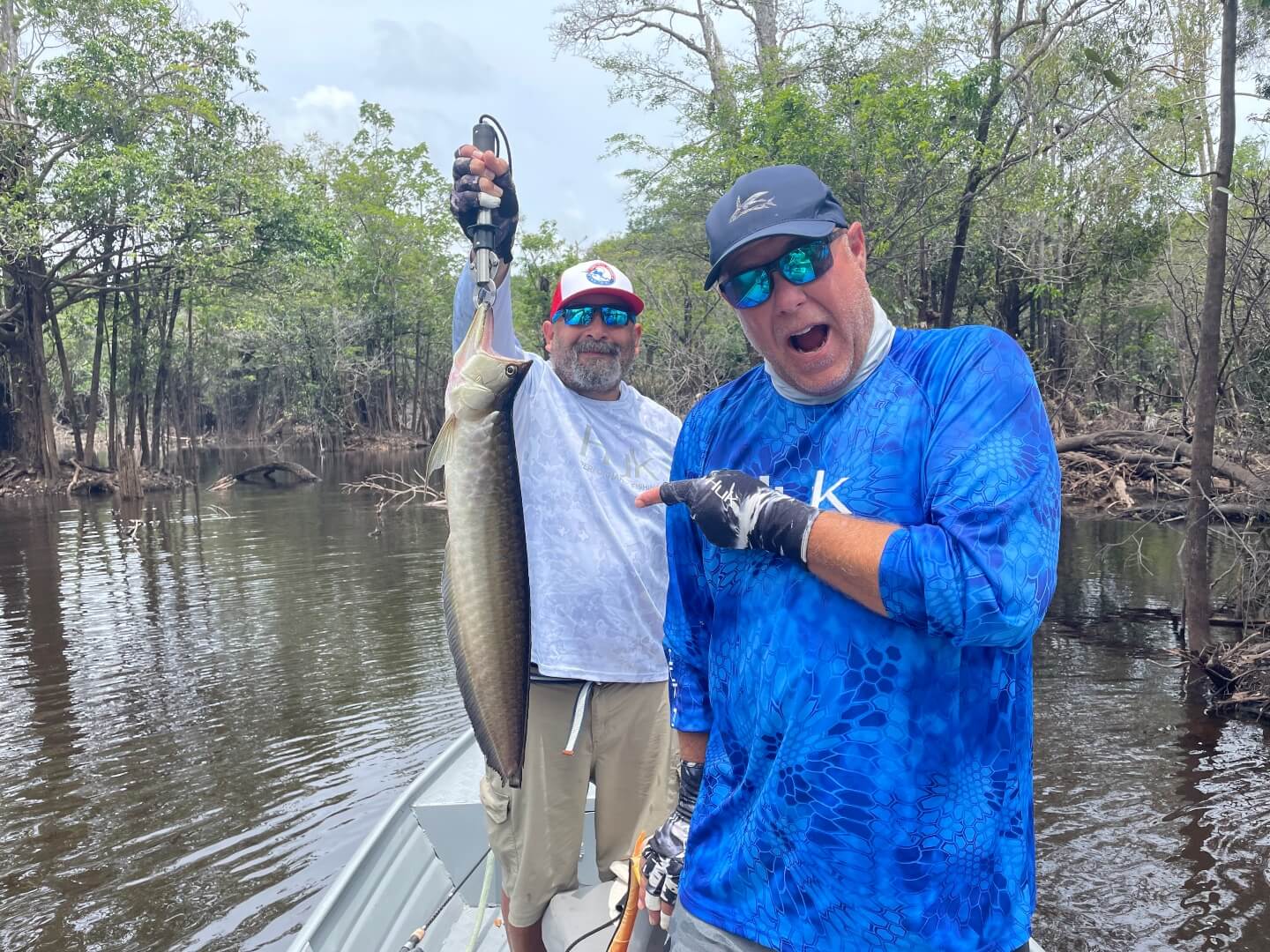
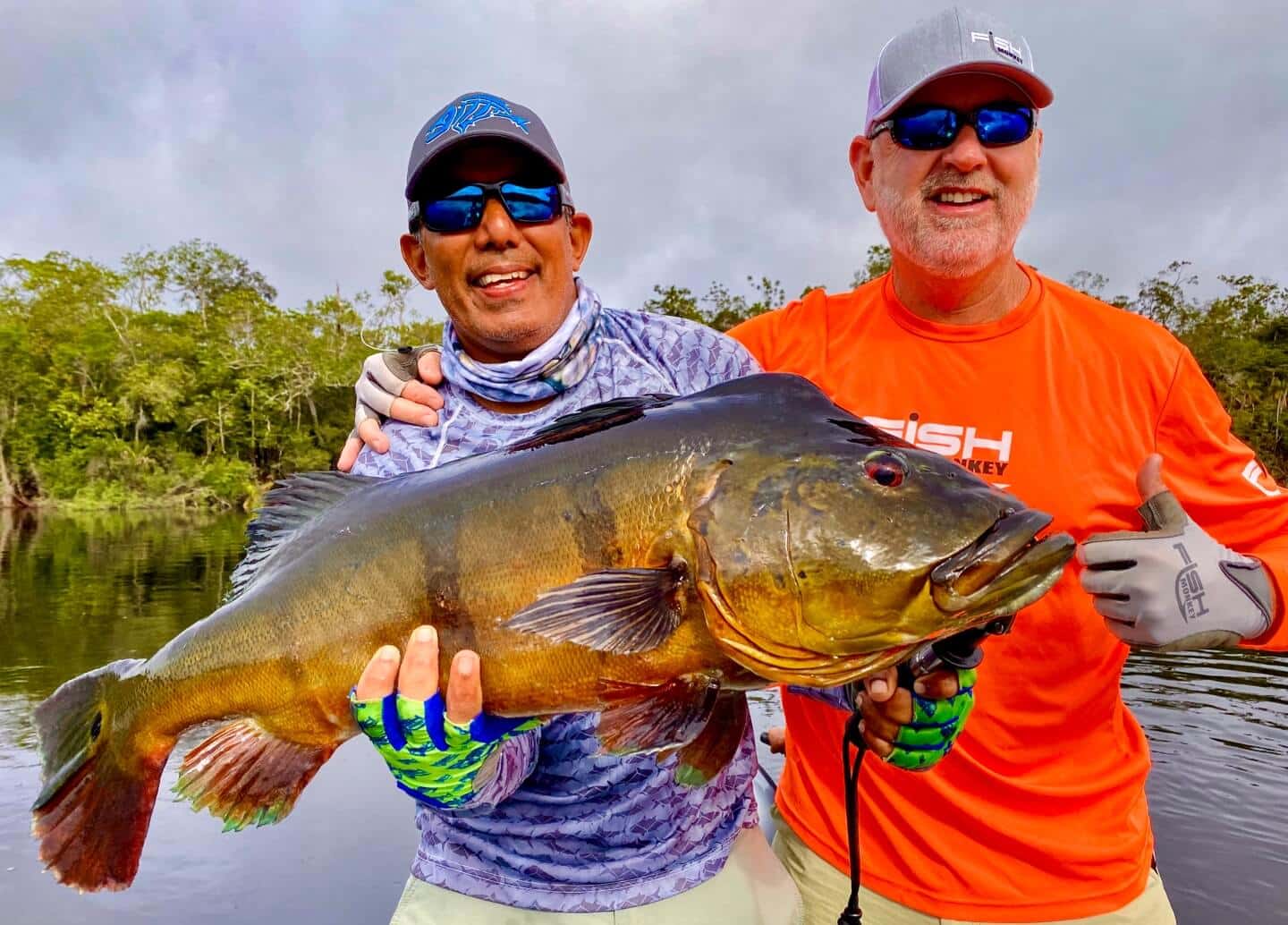
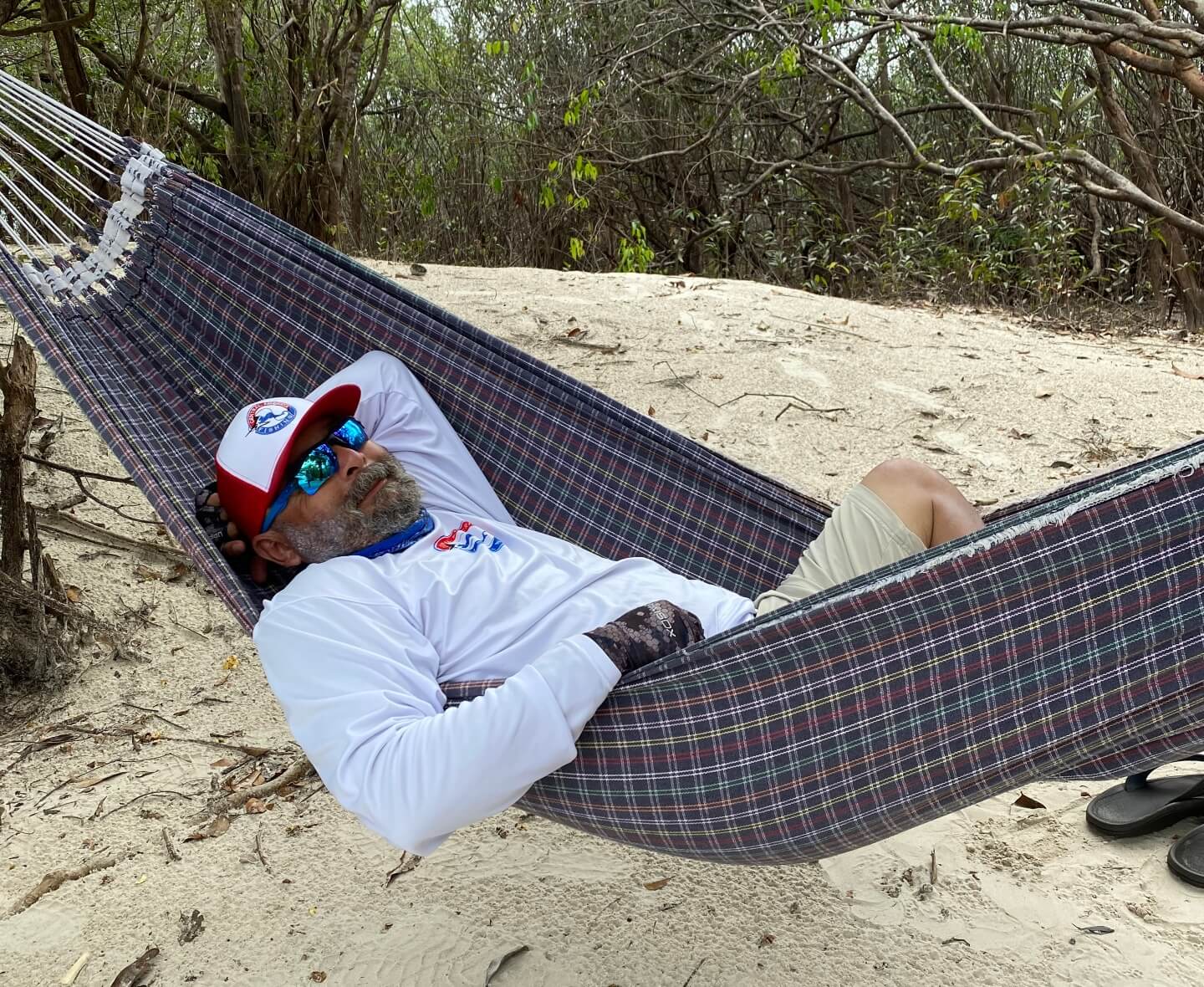
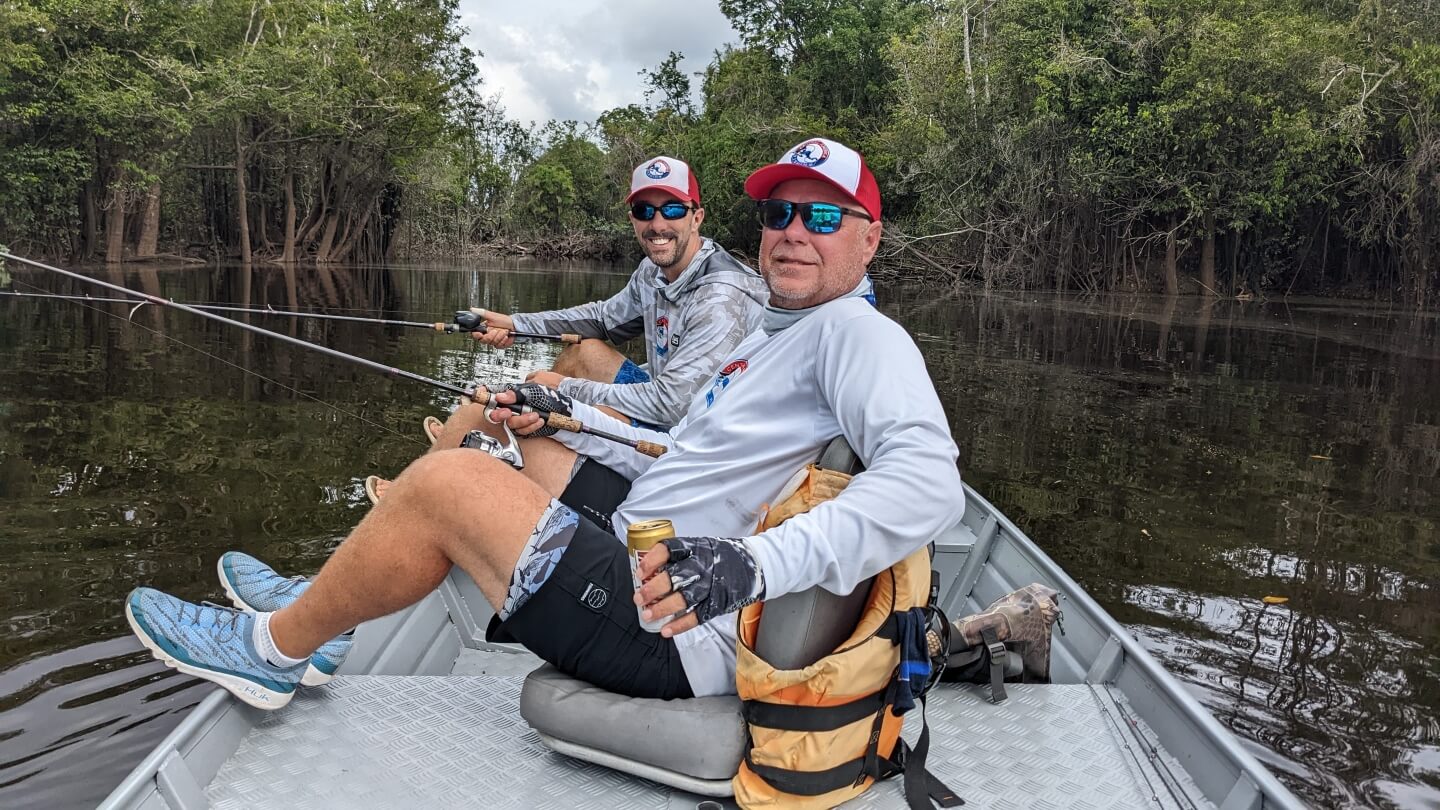
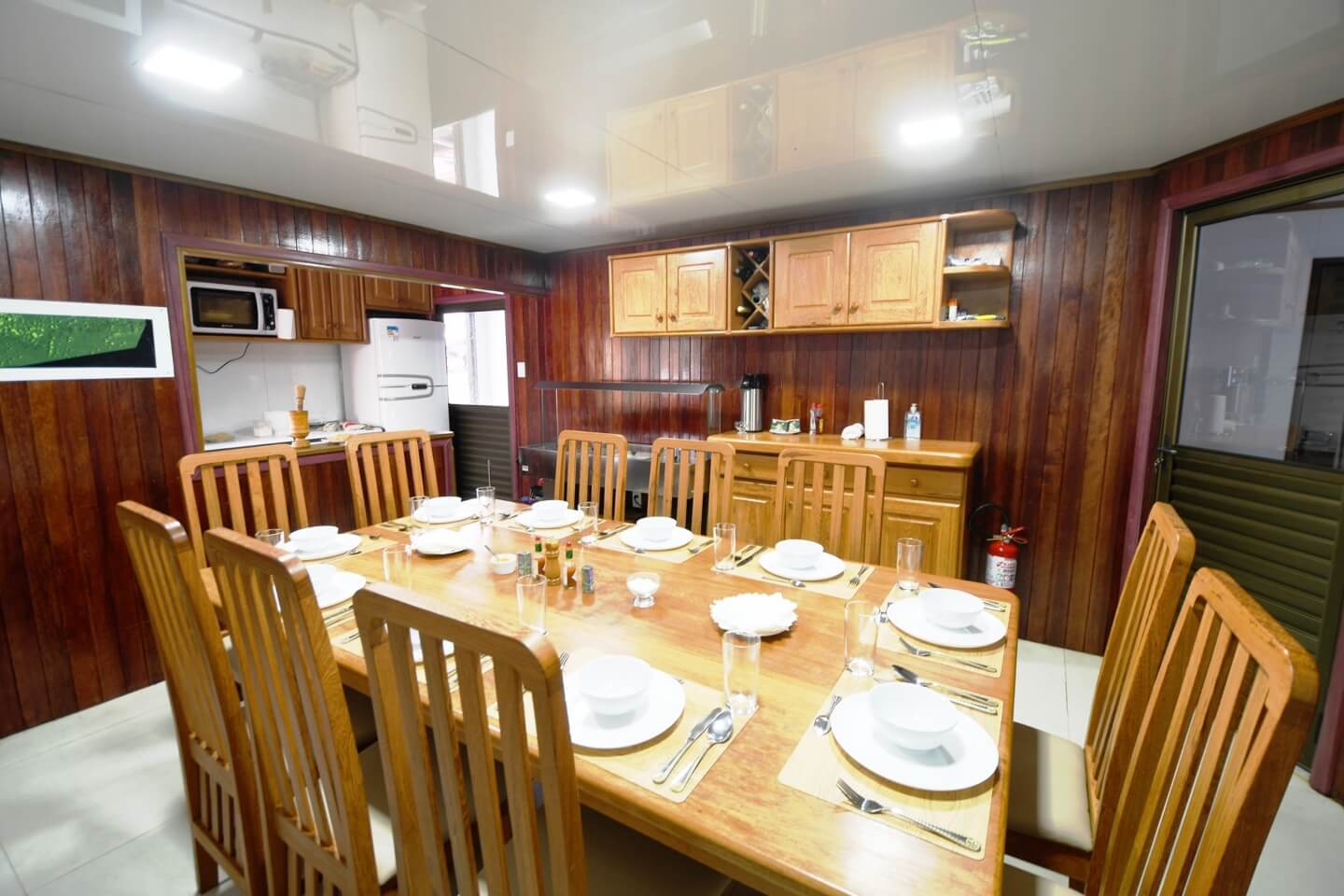


Floating Bungalows
Highlights
- Exclusive trip features just 4 floating bungalows
- This is a great trip to focus on trophy bass as well as huge catfish
- Each bungalow features air-conditioning, two beds, and a bathroom with shower.
- Bungalows draft less than a foot of water, giving you access to remote waters
- Meals can be enjoyed in the air-conditioned main bungalow or on the beach.
- Enjoy a breakfast buffet, pack your own boat lunch, and a gourmet 3-course dinner.
- Full open bar with wine, liquor, beer, sodas, and bottled water included.
- Enjoy your meals in the large, air-conditioned dining hall or rooftop deck
- Fish for 6 days on the Rio Negro with your private, local guide
- 18 ft aluminum boats feature removable padded chairs & large casting platforms.
- All spinning tackle, baitcasters, and lures are included in your package.
- 2024 & 2025 Prices: $5,795 Double Room / $6,395 Single Room
Trip Summary
Our floating bungalow operation is one of the most unique ways to fish the Amazon River. Drafting less than a foot of water, the four bungalows and the “main lodge” bungalow can access tributaries and headwaters that no one else can reach. In addition to being miles away from competing operations, the bungalows are extremely mobile so it’s common to stay in different secluded lagoons each night. While the average daily catch rate here is still 15-20 fish per day, this is one of the best trips to target a trophy 20 lb peacock bass. From our bungalows we can also go fishing for the giant red-tailed catfish that call these waters home.
Each of the four bungalows has two twin beds, so there are a max of eight anglers on this trip each week. The bungalows are equipped with air-conditioning, 110V electrical outlets, and a bathroom with your private toilet and hot water shower. You can enjoy your buffet breakfast and gourmet dinner either in the comfort of the air-conditioned ‘main lodge’ bungalow or al fresco as you dine on one of the many white sand beaches of the Rio Negro.
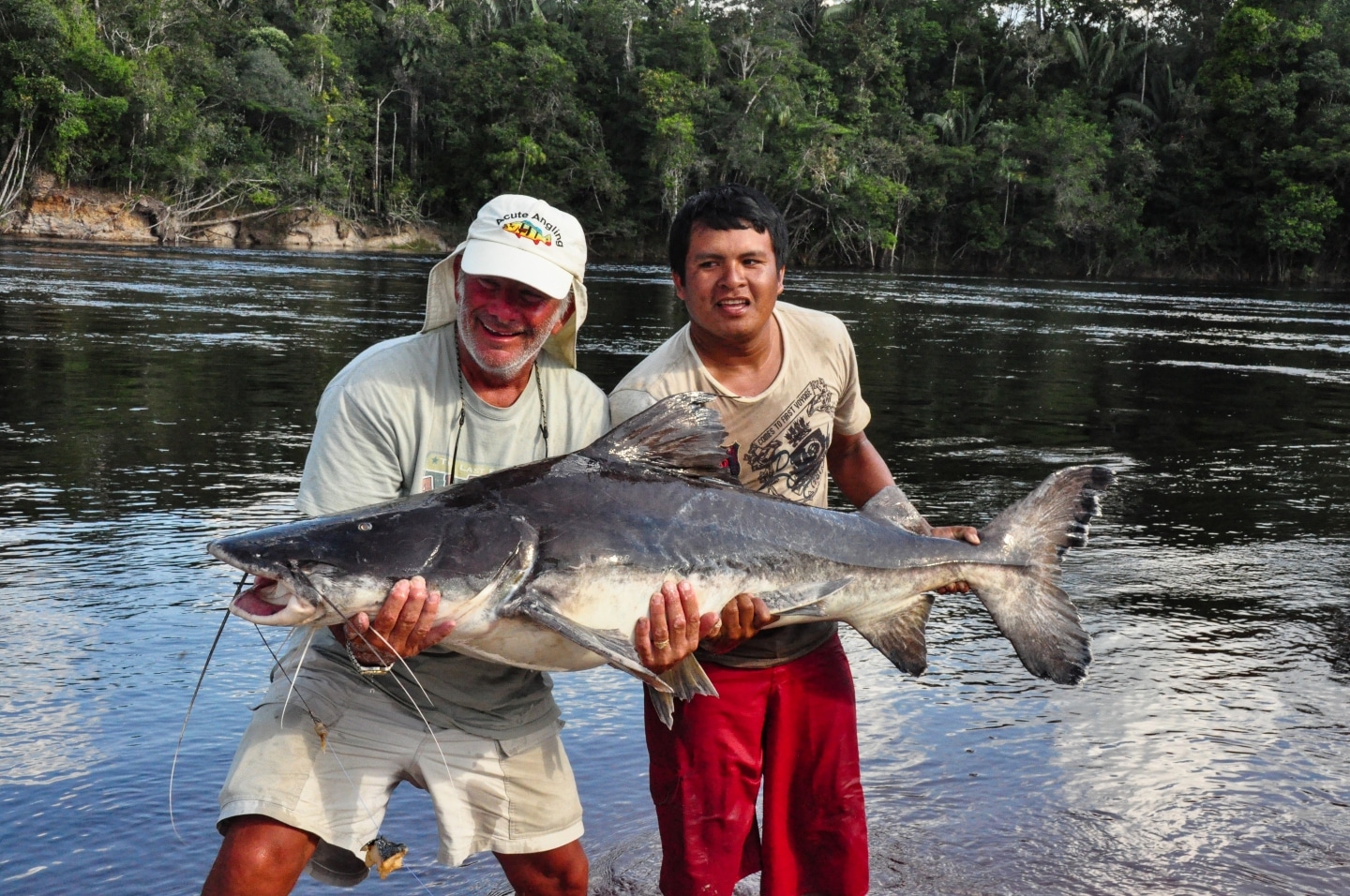
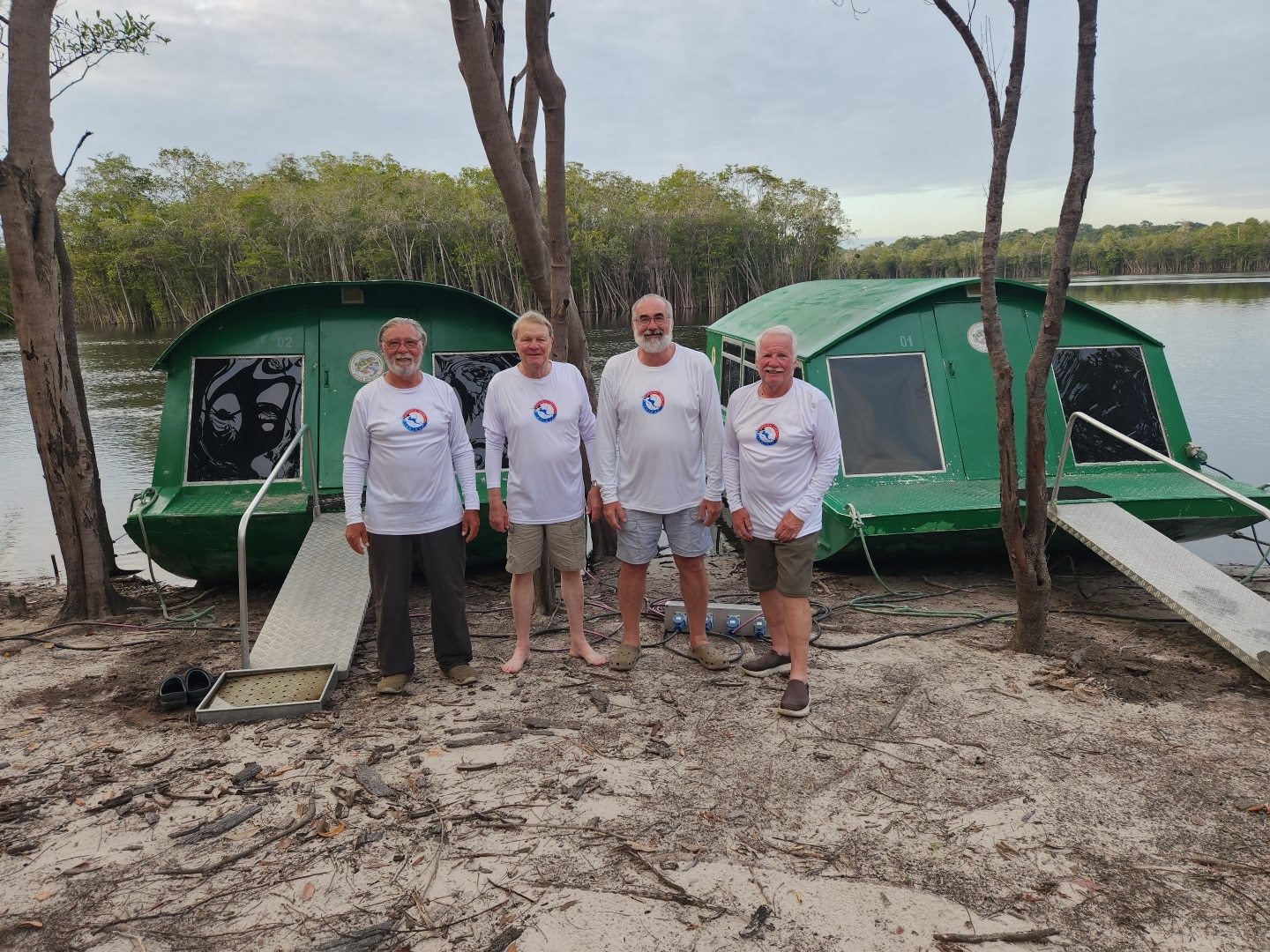
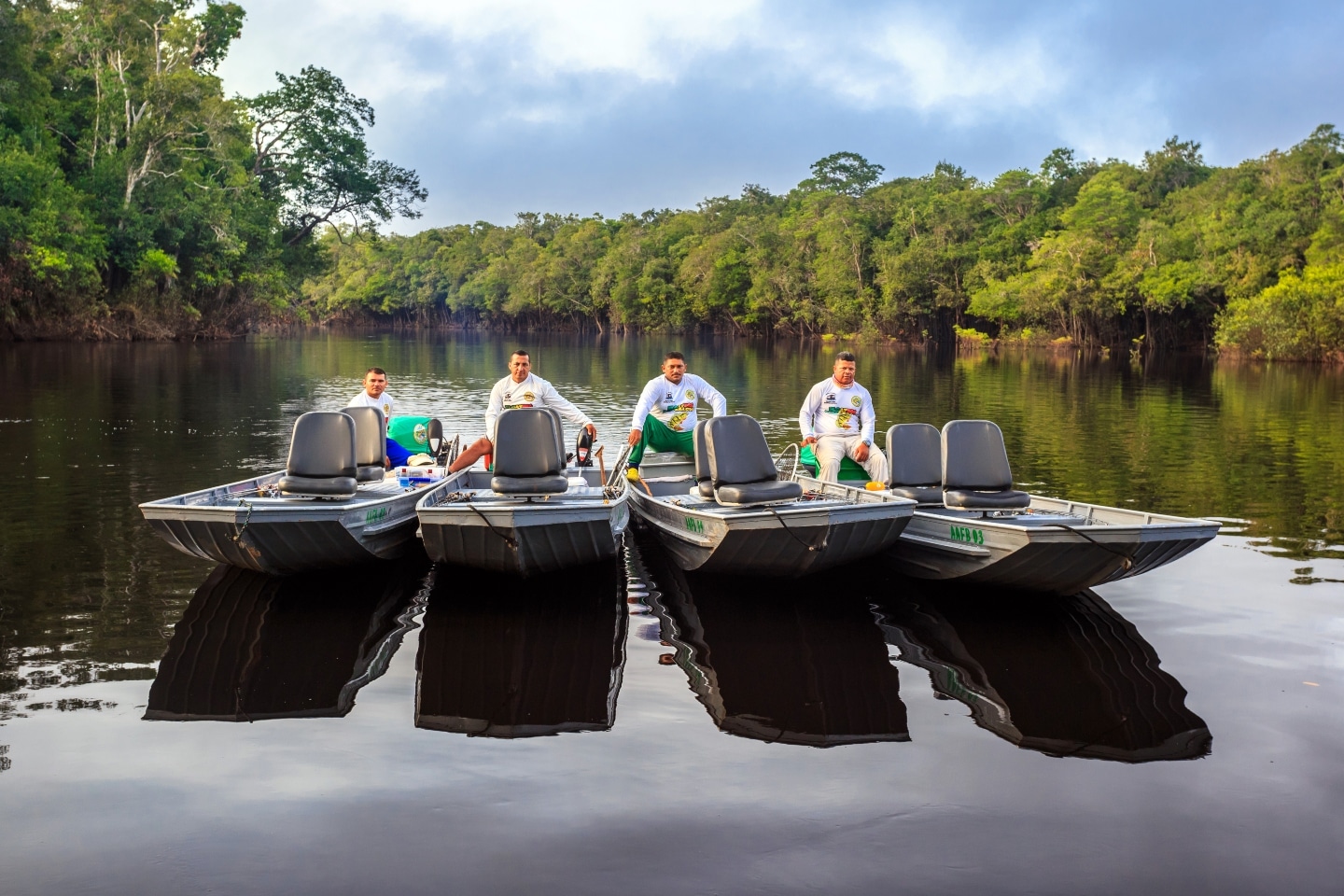
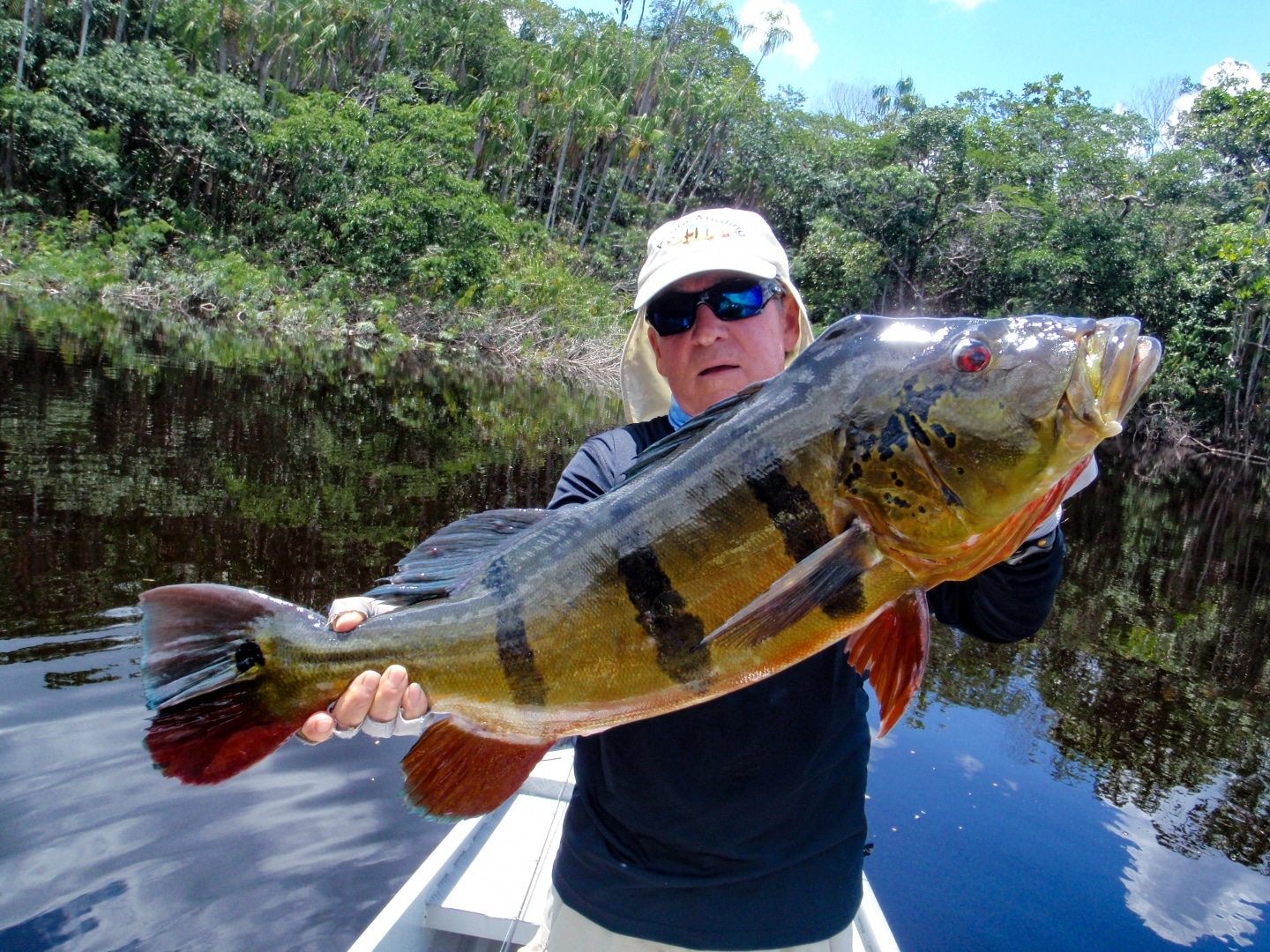
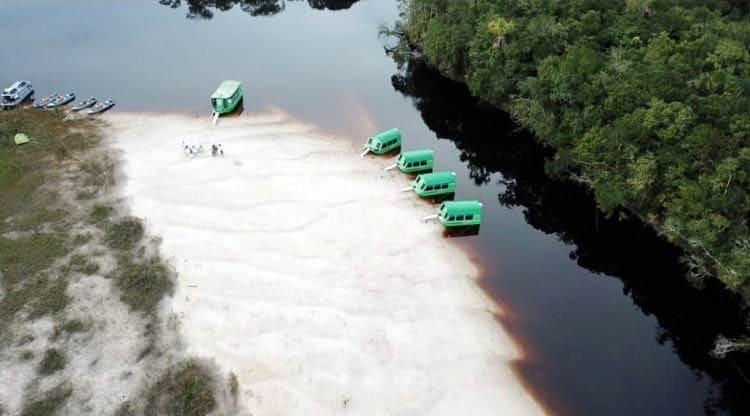
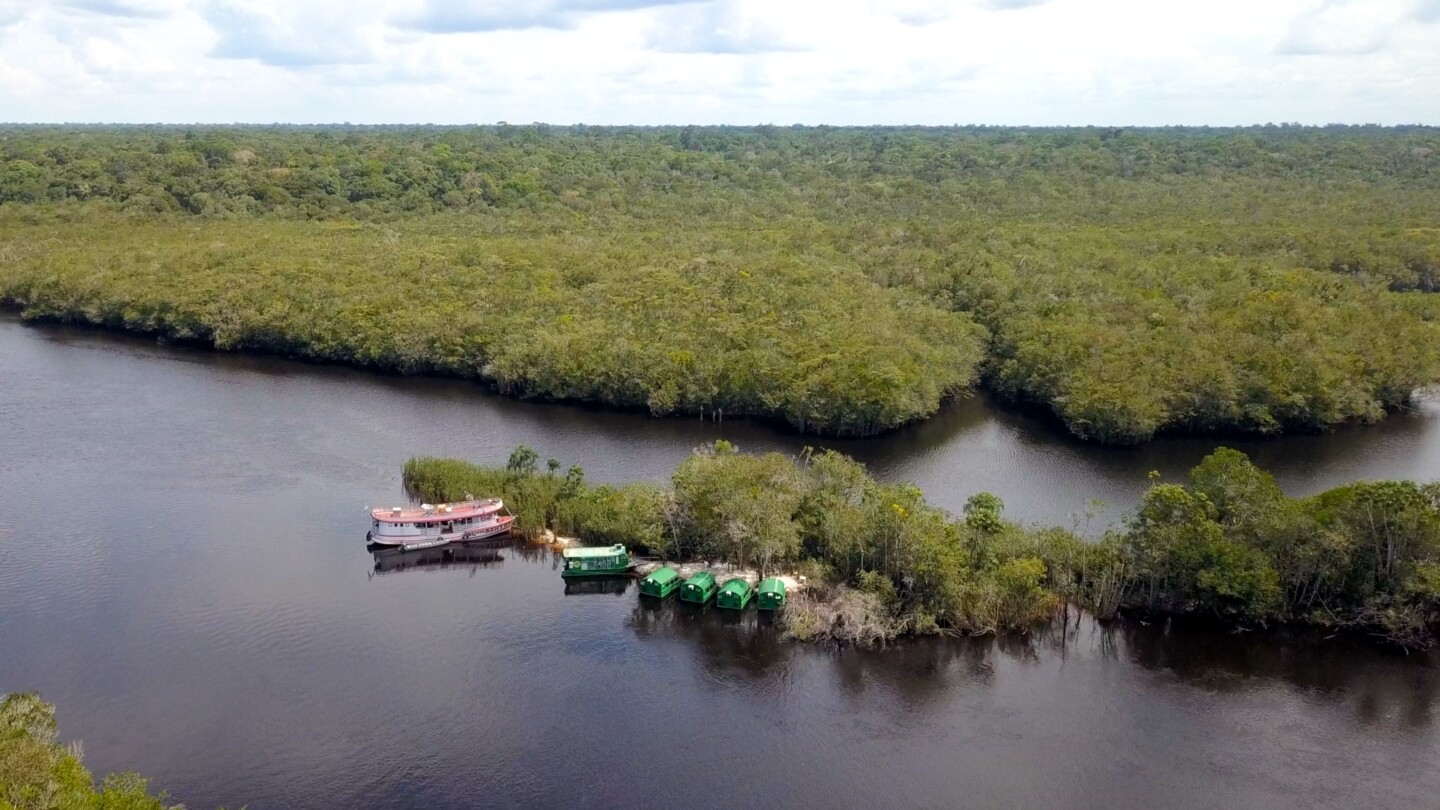
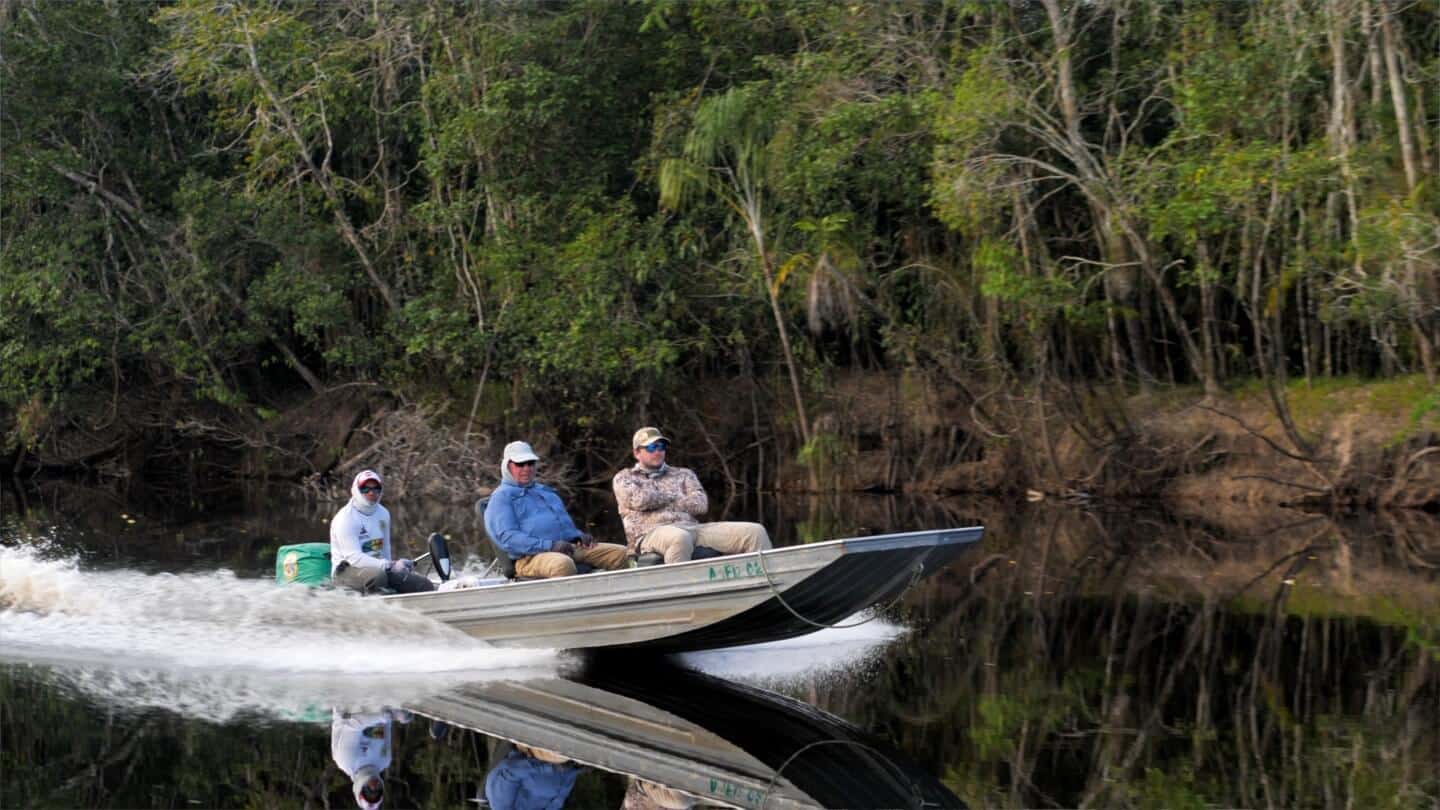
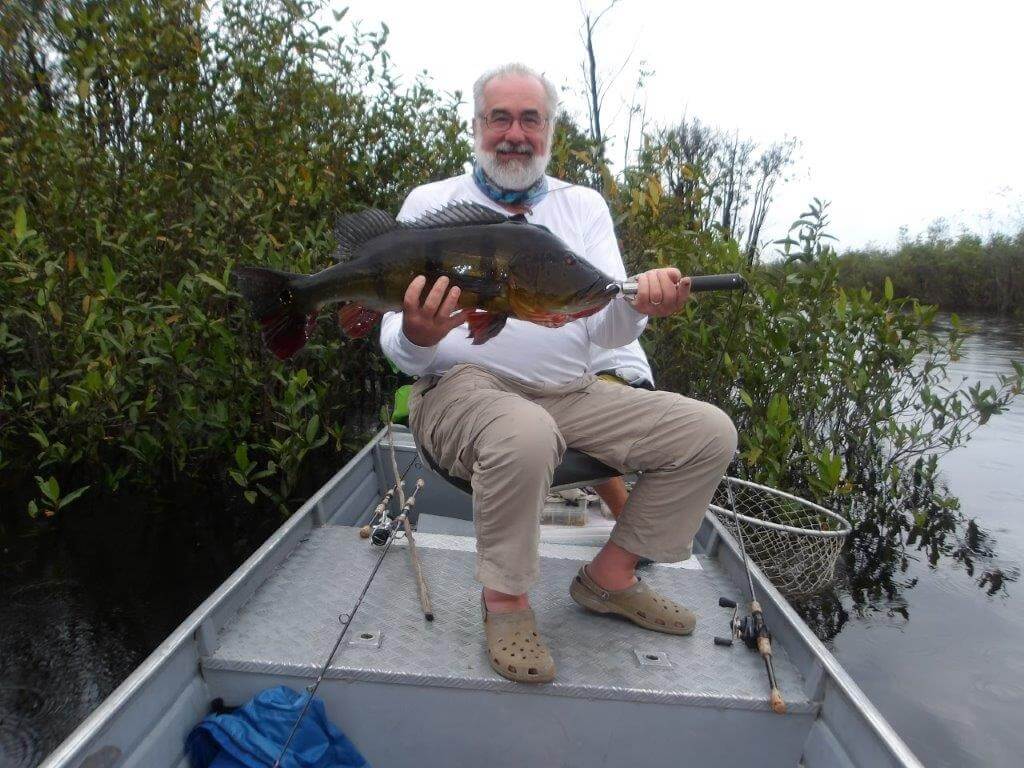
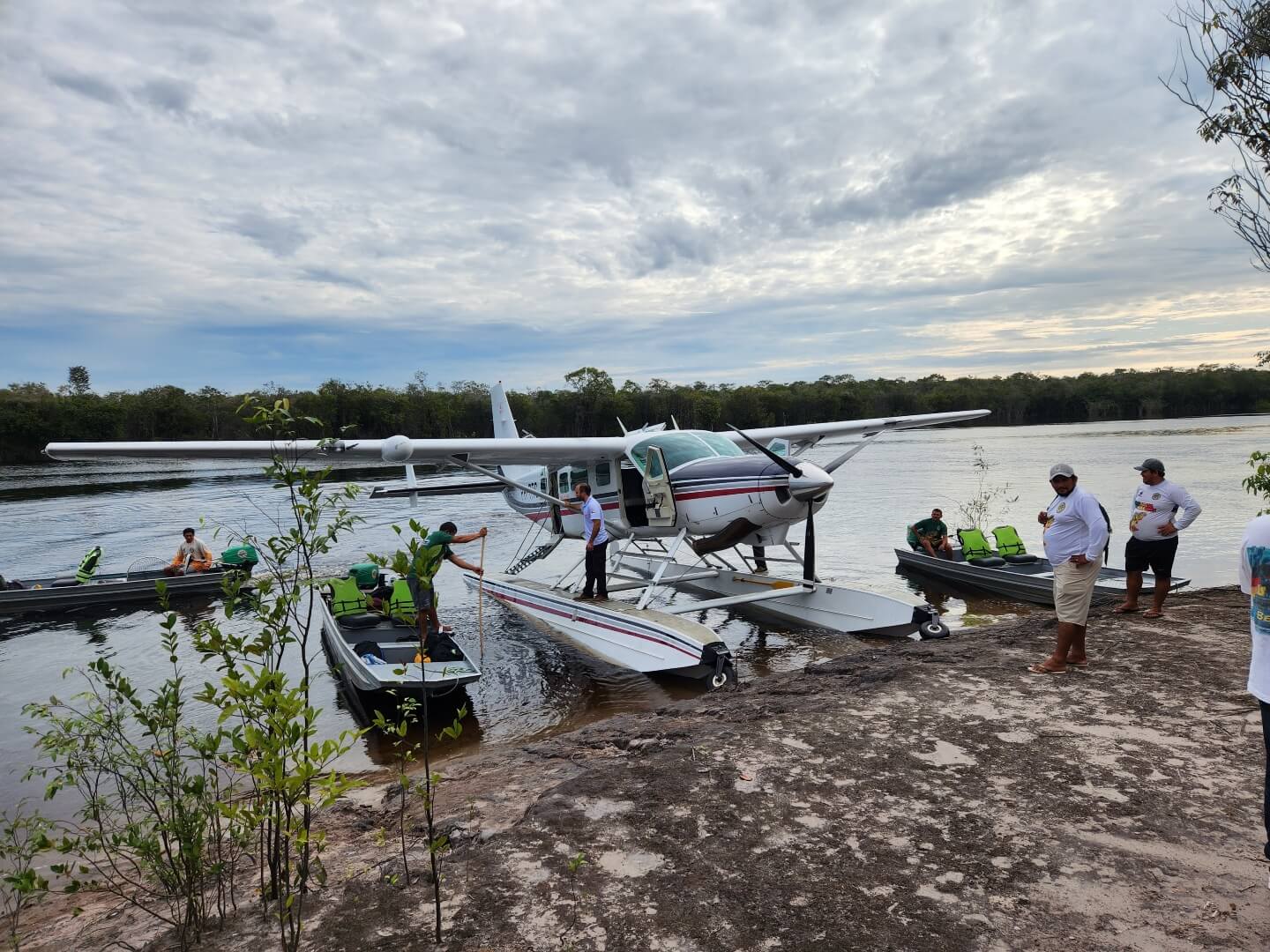
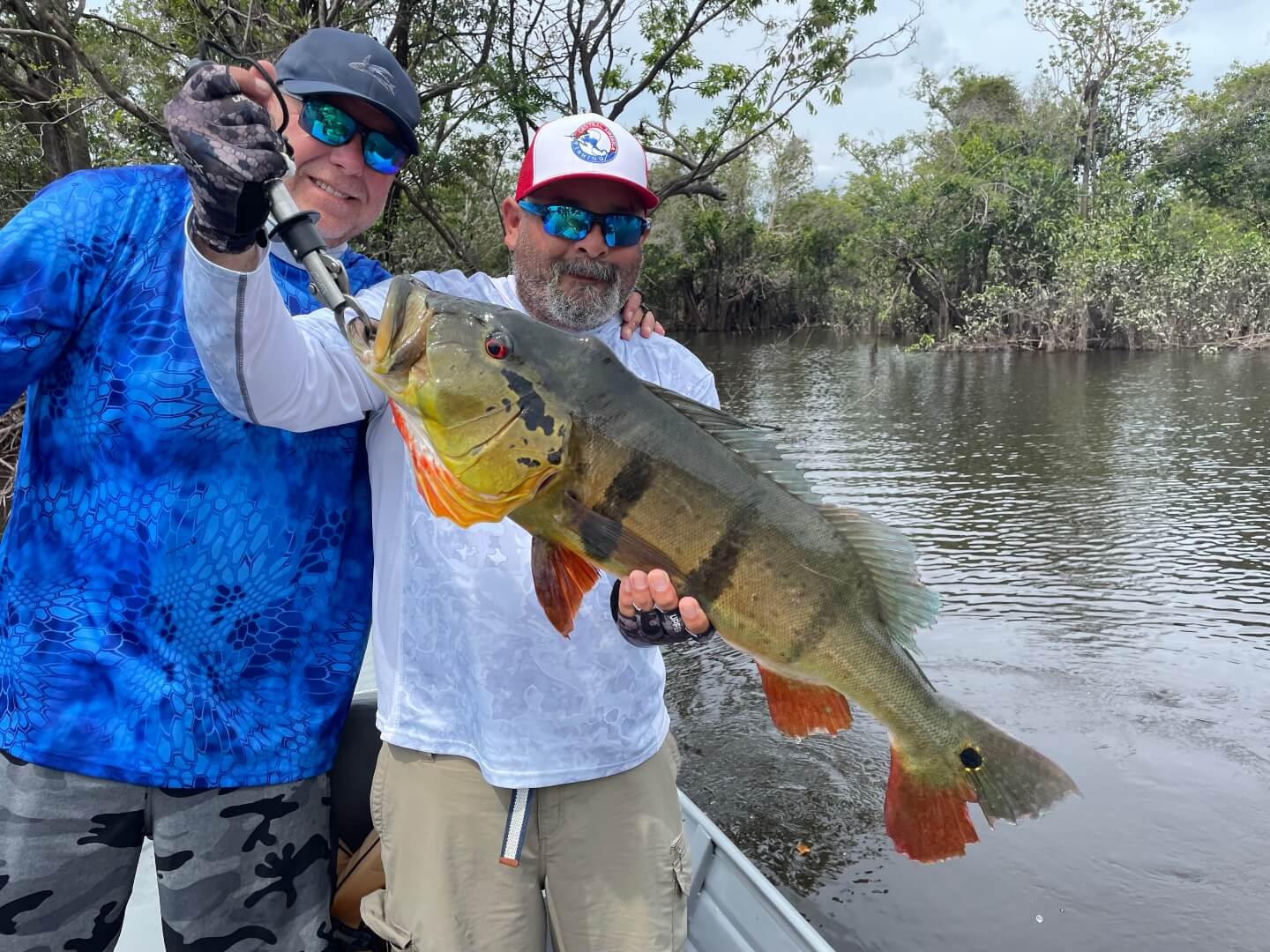
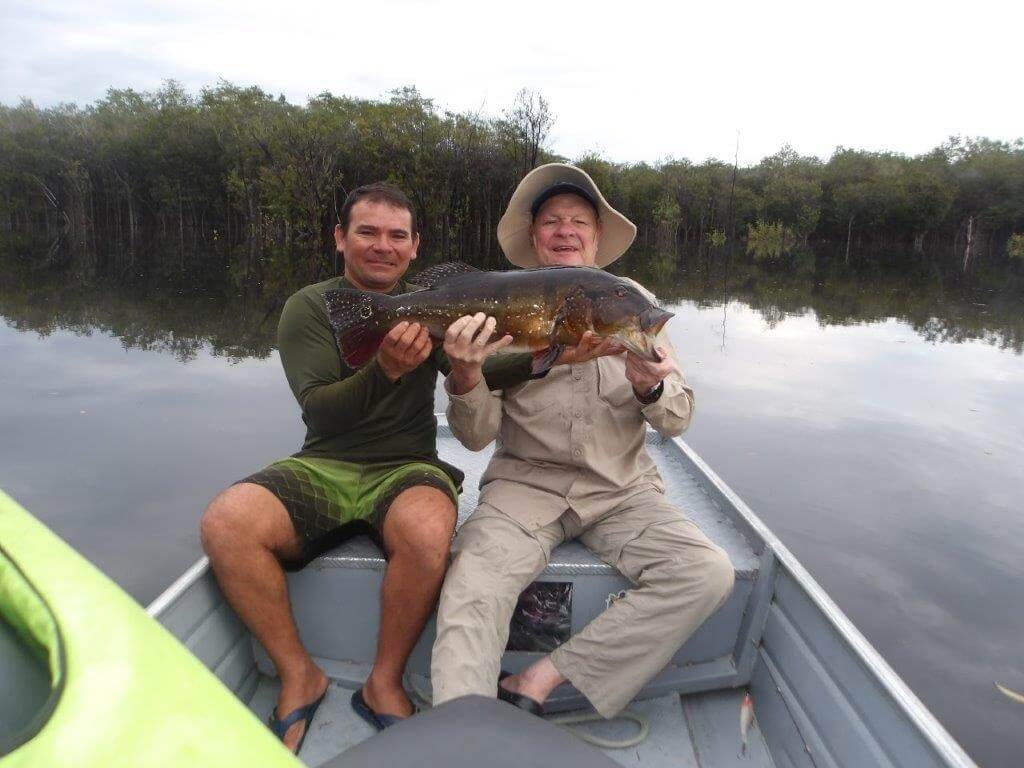
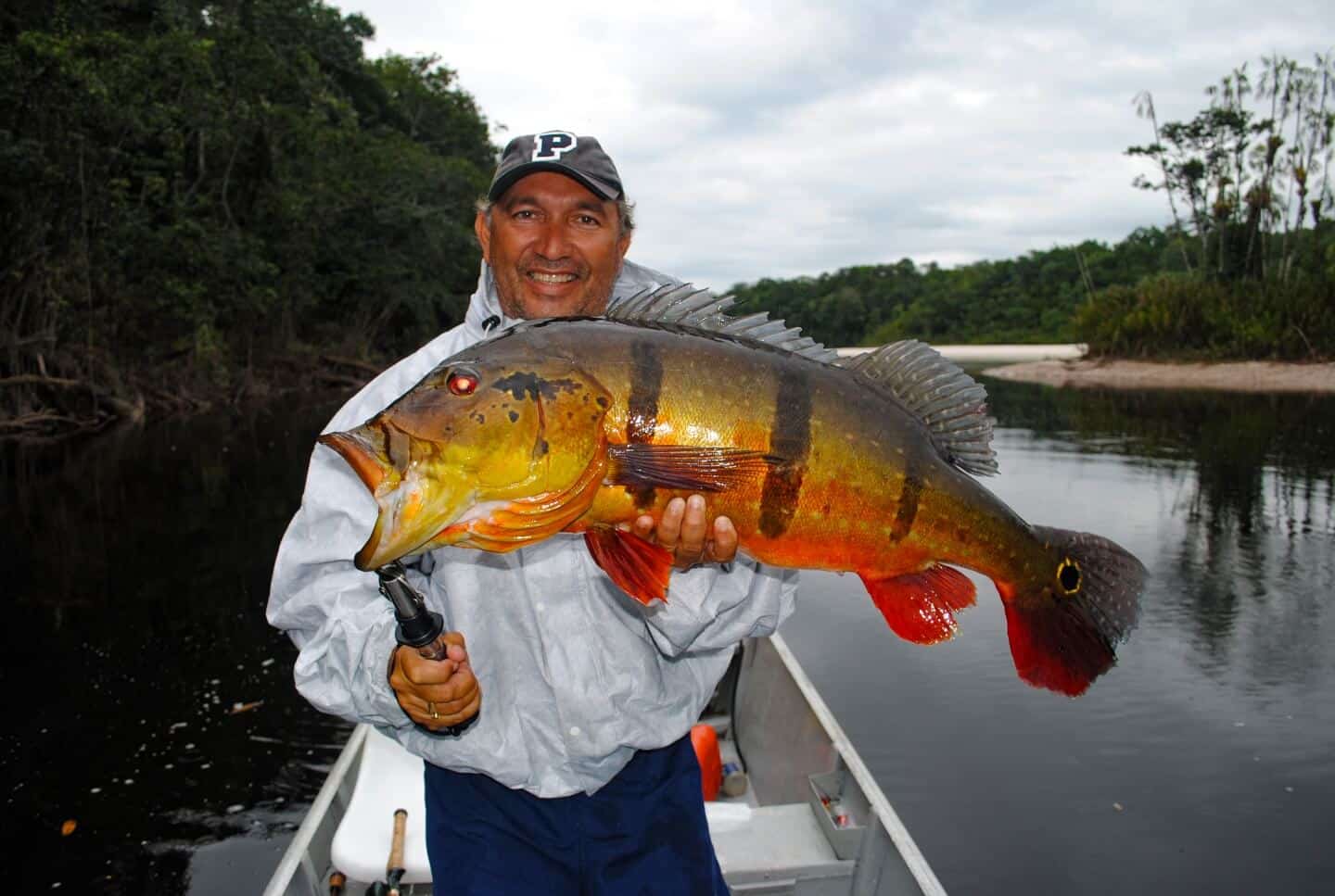
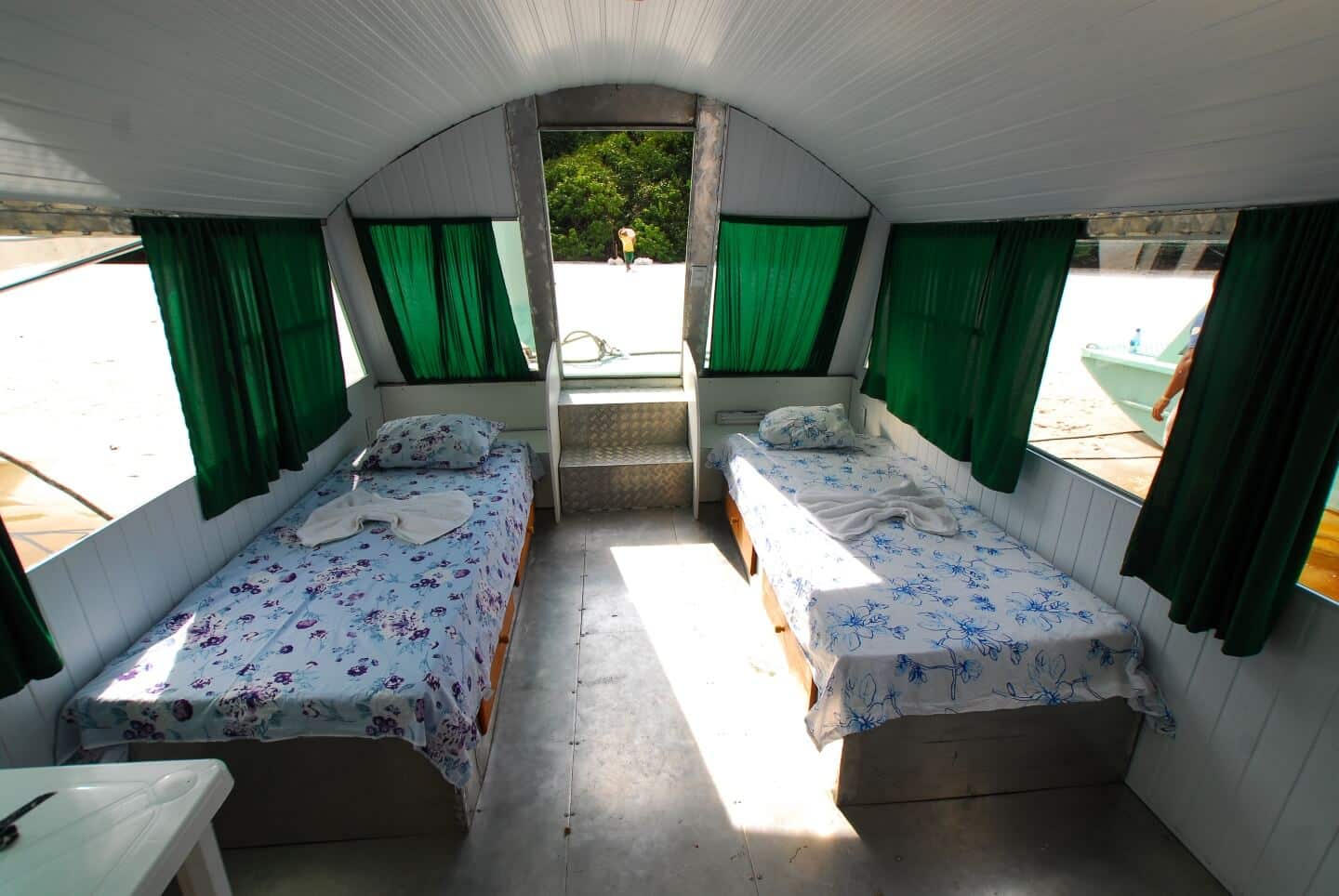
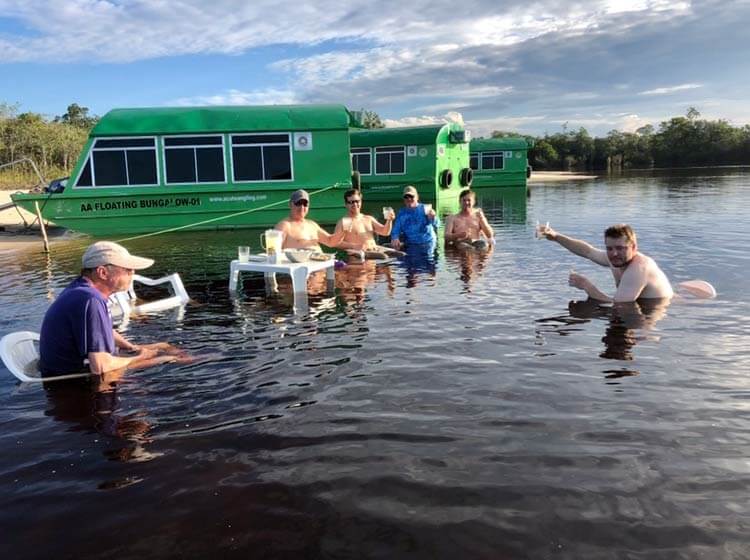
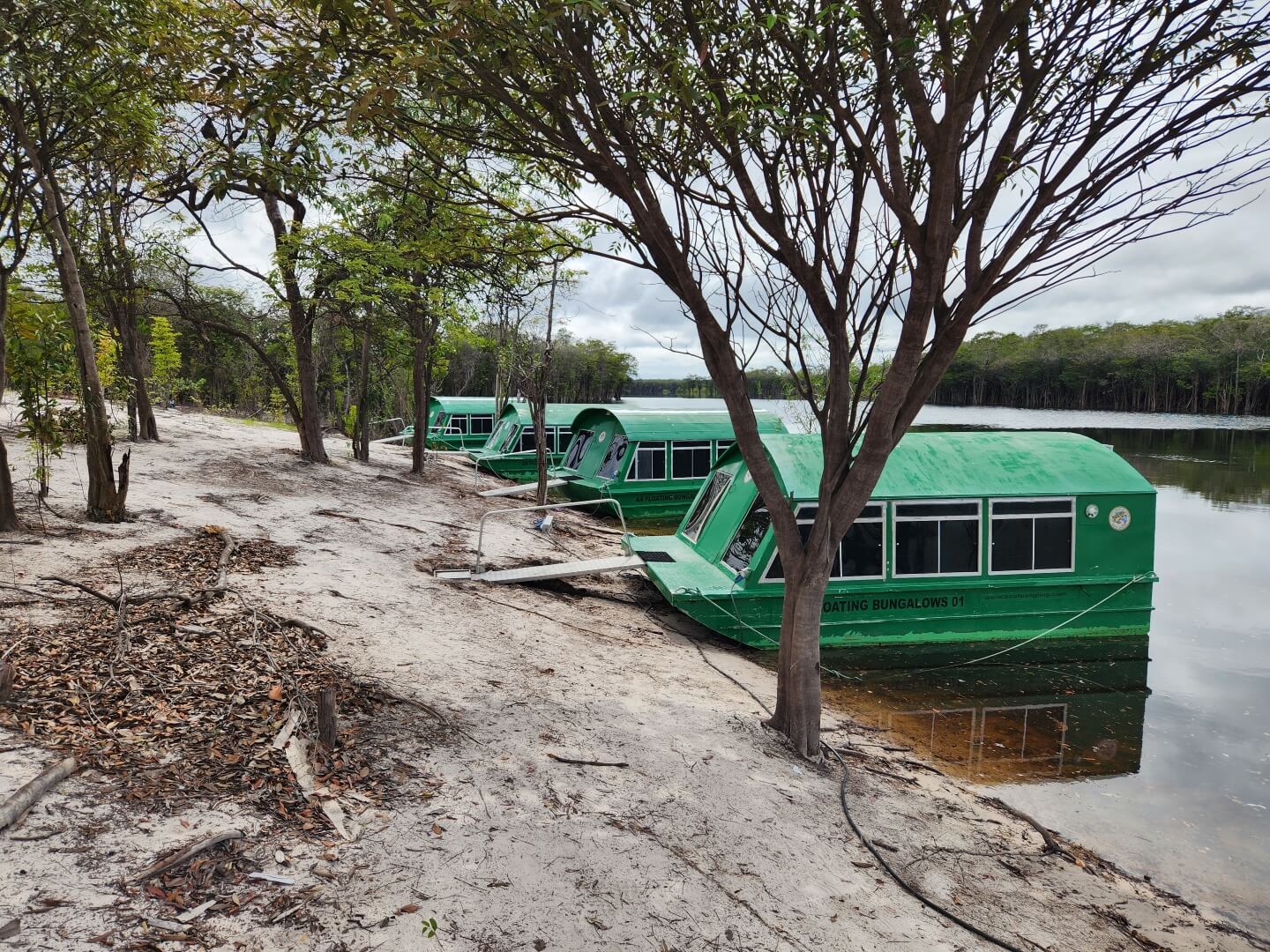
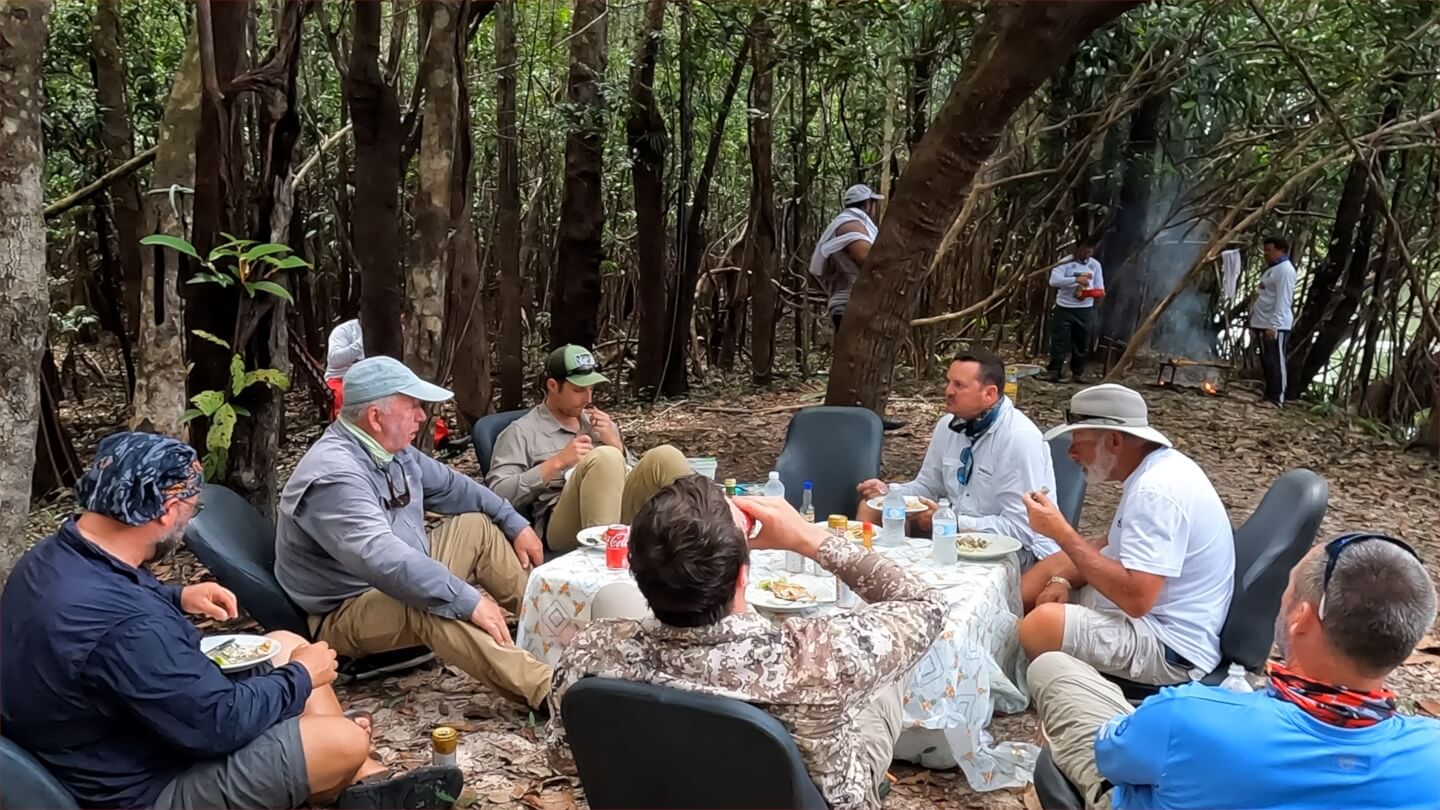
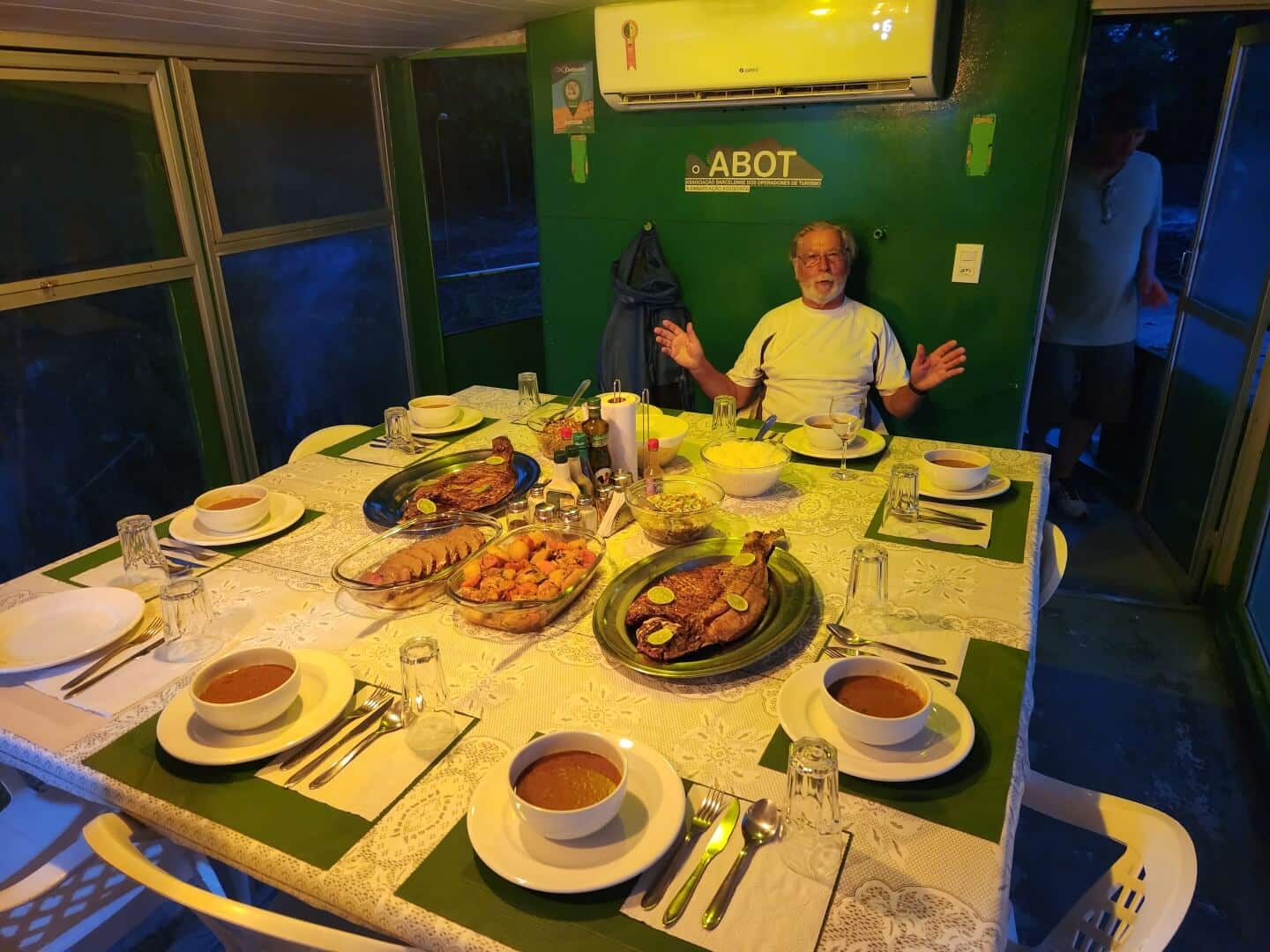
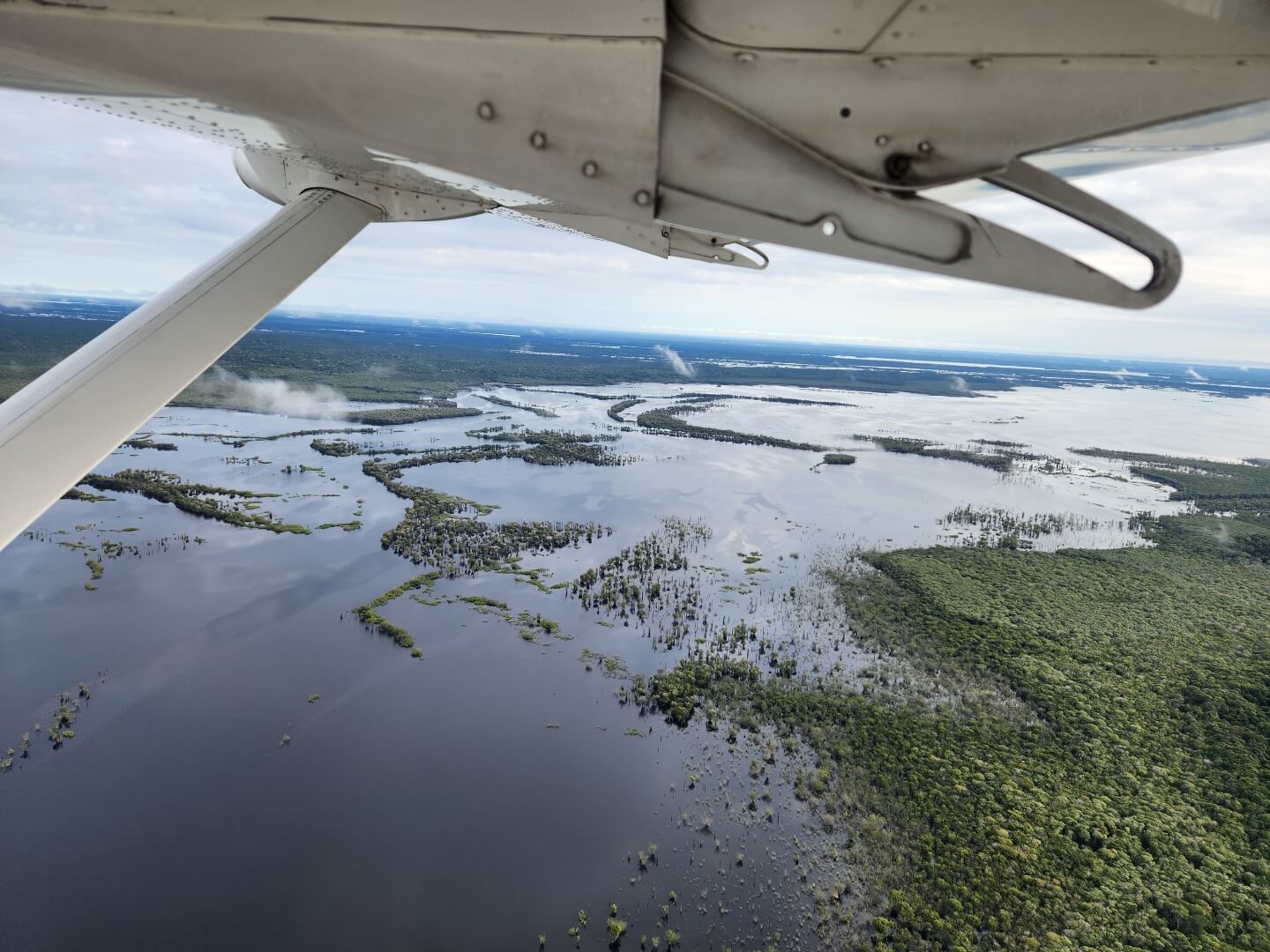
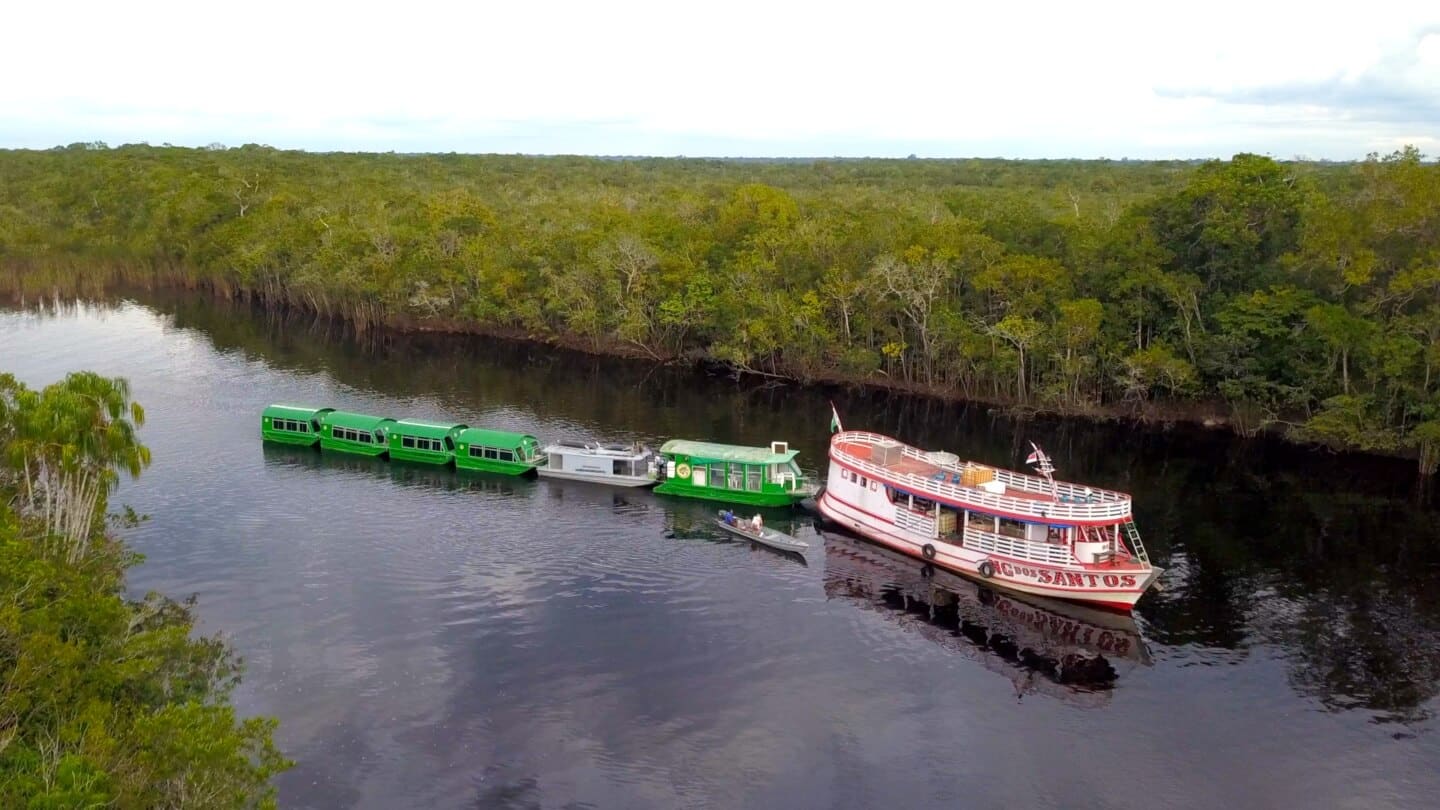
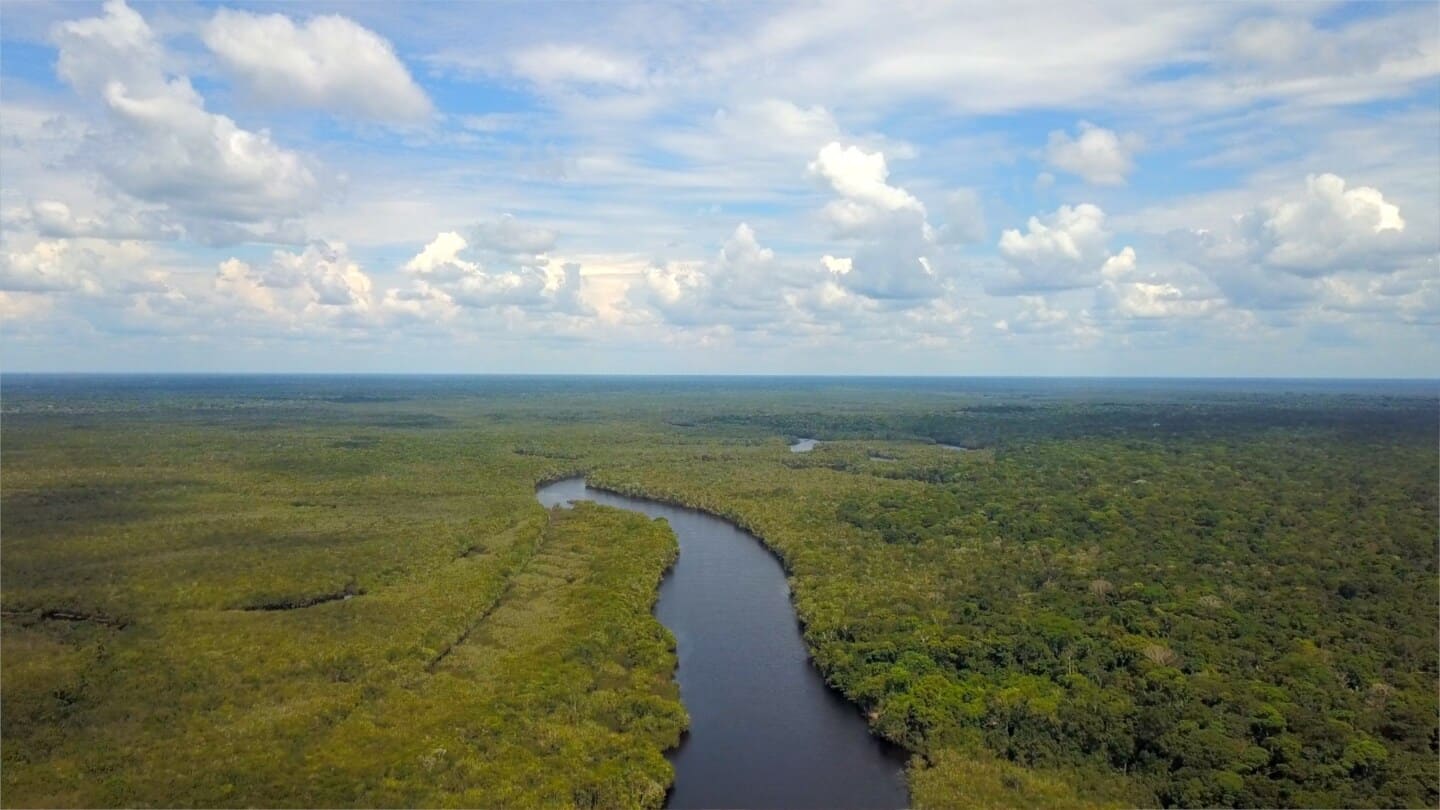
When is the Best Fishing in Brazil?
Fishing the world’s largest river is no easy task, but visiting during the wrong time can make it near impossible. Each year during the rainy season, water levels can rise by as much as thirty to forty feet (10-12 meters). When this happens, the river easily jumps its banks and covers vast low-elevation floodplains, which in turn opens incredible swaths of new territory to the fish. During the dry season months of June to October, the water levels – as well as the baitfish – retreat from the floodplains and return to the confines of the riverbanks. The fishing is best when the water levels are dropping because the peacock bass are ravenously feeding in preparation for mating season. Once the water level reaches its lowest point, they begin to spawn and vigorously protect their nests, so the fish simply have more important things to do than chase after your lure.
At 1,400 miles long, which is roughly the same distance as Miami to New York City, it’s not possible to name which month(s) offer the best fishing as different parts of the Rio Negro experience their peak fishing seasons at different times. The full fishing season runs from August to March, with the best fishing moving from south to north along with the dry season weather and dropping water levels. Knowing when to visit and where to go is the key to a successful Amazon fishing trip, and the ability of our operations to move and continually allow you to fish in the best river conditions is indispensable.

The Best Gamefish in the Amazon
With over 3,000 species of fish found in the Amazon River system, we don’t need to spend a lot of time explaining why we are so excited to offer fishing trips to Brazil. The list includes thunderous arapaima, giant piraiba catfish that can reach up to 300 lbs, payara with teeth so intimidating they’ve earned the nickname ‘vampire fish’, and of course the piranha of Hollywood lore (twenty different species of them, to be exact). At the top of the list for almost every angler however is the Cichla Temenisis, the famous giant peacock bass.
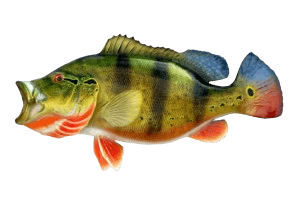
Peacock Bass
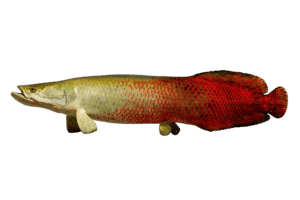
Arapaima
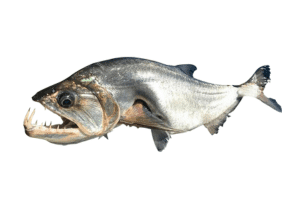
Payara
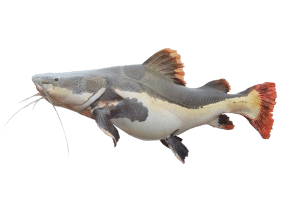
Red-Tailed Catfish
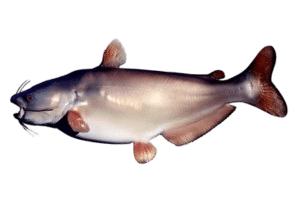
Piraiba
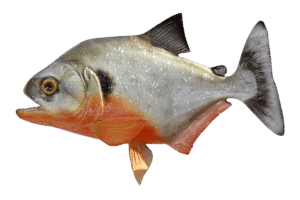
Piranha
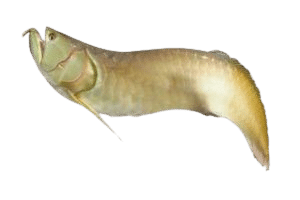
Aruana
Guide to Fishing in the Brazilian Amazon
The Amazon River and its tributaries create one of the most magnificent ecosystems in the world. In addition to 1,300 species of birds and 430 species of mammals, the Amazon River is home to an estimated 3,000 different species of fish. There are few destinations in the world that offer the sheer quantity of fish that the Amazon can, and fewer still that are freshwater fisheries. The allure of traveling deep into the world’s most exotic rainforest and fishing the world’s biggest river, never knowing what is around the next corner or what will attack your latest cast, is what makes the Amazon the best freshwater fishery in the world.
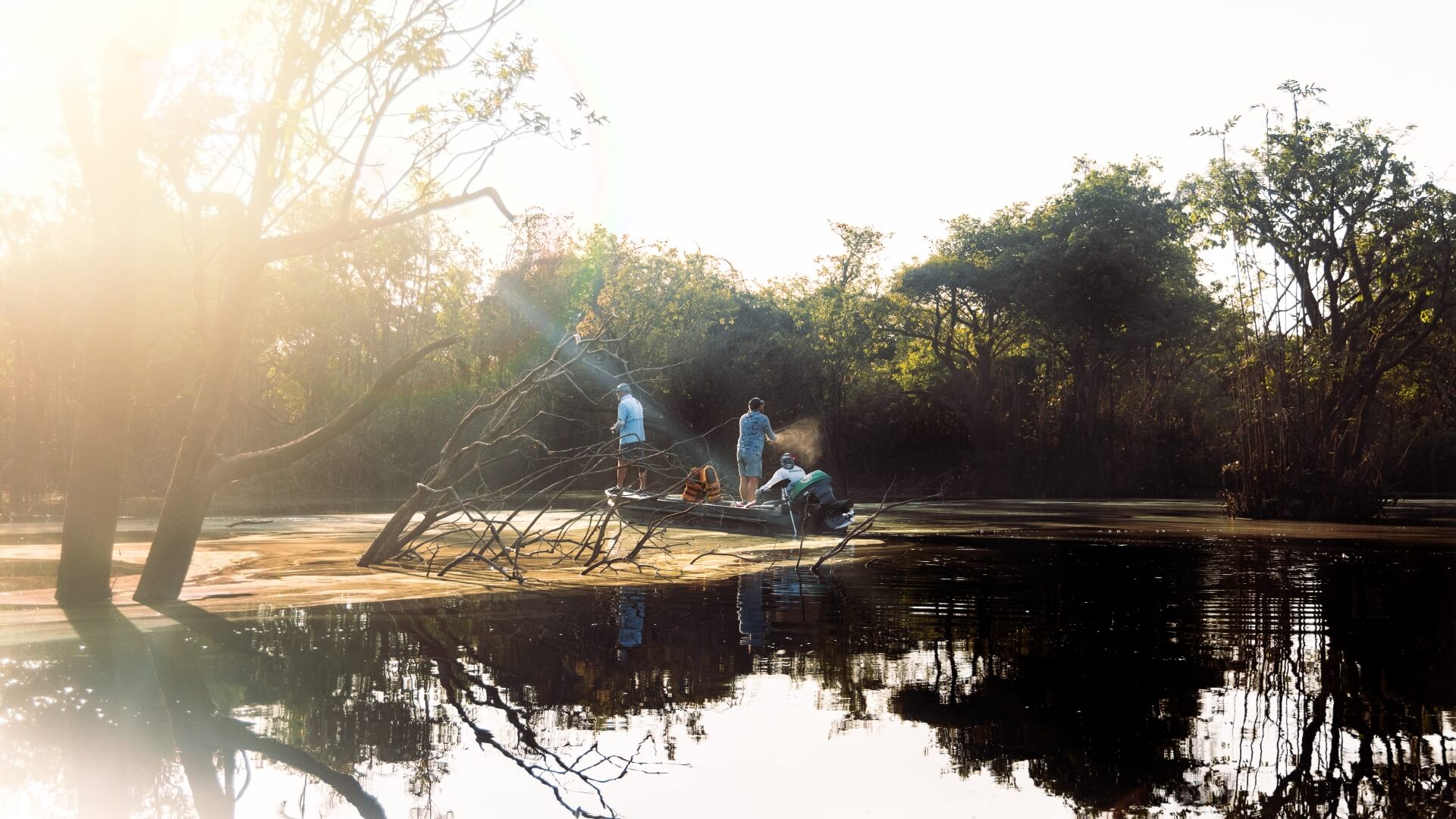
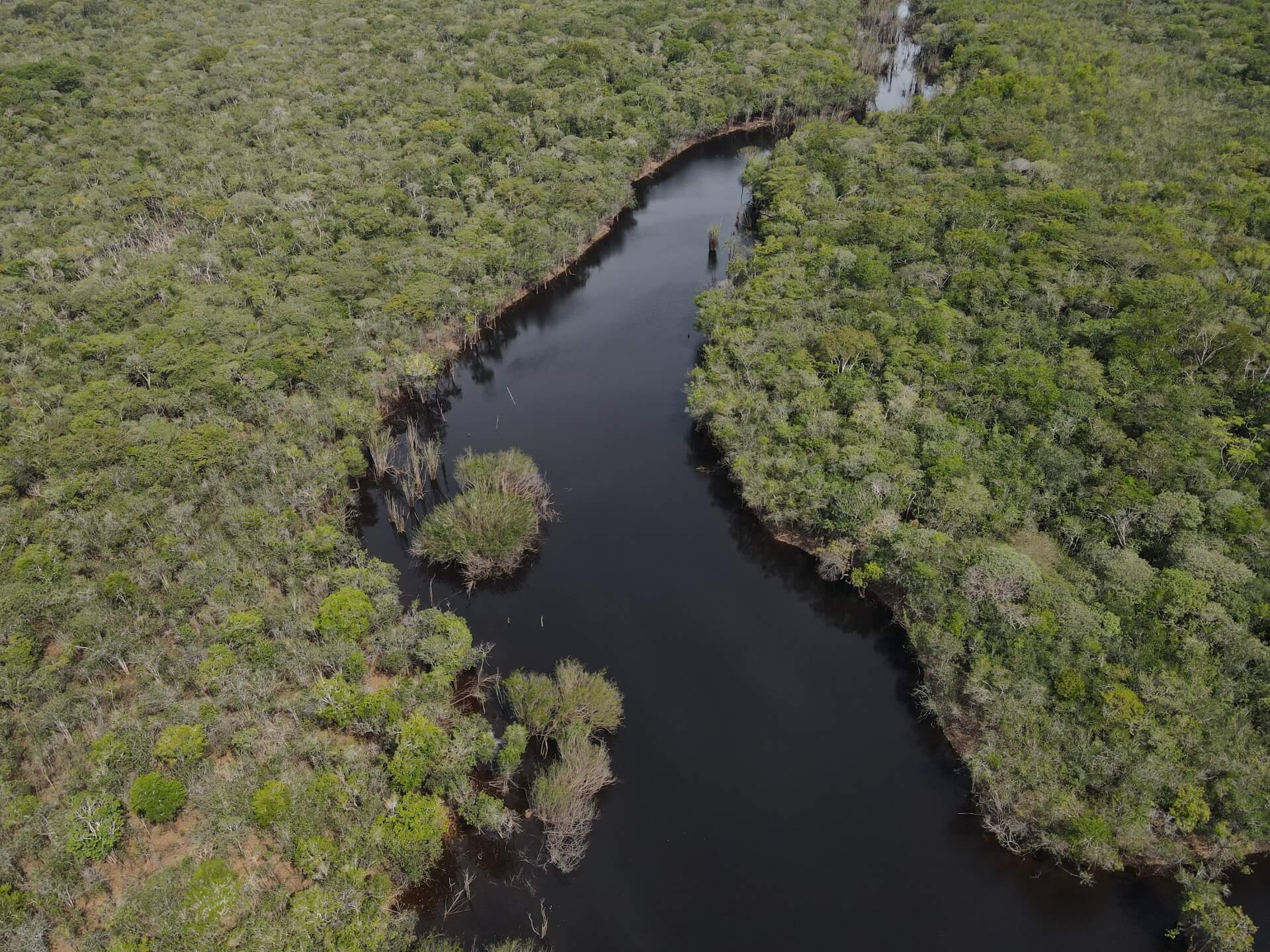
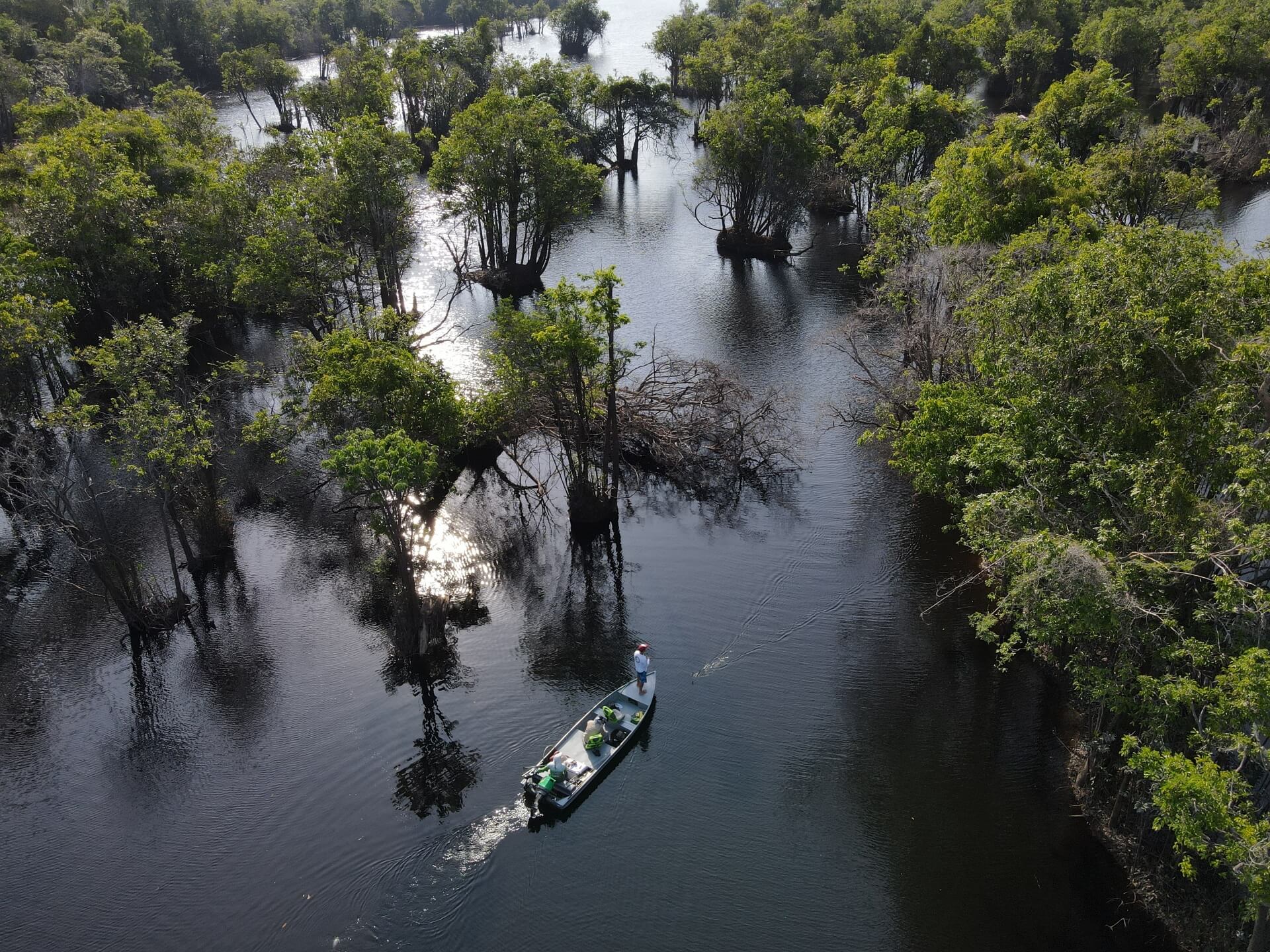
Where We Fish
The Amazon River is the second longest river in the world at 3,970 miles, but the largest river in terms of sheer volume. Fed by over 1,000 tributaries, the river spans six different countries across South America. Of course we don’t fish every inch of the river, instead our local operation has identified the most productive waters in the vast Amazon River Basin so that our anglers are always fishing the most productive waters. As the dry season moves from south to north, so do our fishing operations to maintain the best fishing conditions for our anglers. In any given season it’s possible that our motherships will travel over 1,200 miles to put you on the fish.
All of our trips originate from Manaus, which is located 900 miles from the Atlantic Ocean. From here we have access to the best tributaries, hidden lagoons, countless miles of creeks, and even private indigenous reserves in the area. With that said, the vast majority of our time will be spent fishing on the Rio Negro, which is the largest tributary of the Amazon River at over 1,400 miles long. To give you an idea of the incredible size of this fishery, the Rio Negro on it’s own is one of the Top 20 longest rivers in the world and one of the Top 10 in terms of volume – and it’s merely a tributary of the mighty Amazon River.
While Manaus serves as the starting and ending point to all of our fishing vacations in Brazil, it is merely a staging site for our actual Amazon fishing operations. Far too busy with shipping freighters and commercial fishing, the fishing is better the farther away we get from the major population center. Many of our trips will start with a private charter flight to the town of Barcelos, which is 250 miles northwest of Manaus. Depending on water levels and the time of year, some of our fishing trips start at Santa Isabel, which is nearly 400 miles northwest of Manaus. Both of these towns feature a population of around 25,000 people and offer paved airstrips to fly in and out of. Of course if we find a great fishing spot and don’t want to move, we don’t have to – that’s one of the many benefits to our floating fishing lodges. When this happens, it’s possible to take a float plane from Manaus and land right on the river itself where our mothership is anchored. Wherever you fish across the globe, it’s hard to find a more efficient way to put you on the fish than that!
The map below shows the state of Amazonas in Brazil, then in a close up the various sections of the Rio Negro and other tributaries that we most commonly fish in the Brazilian Amazon.
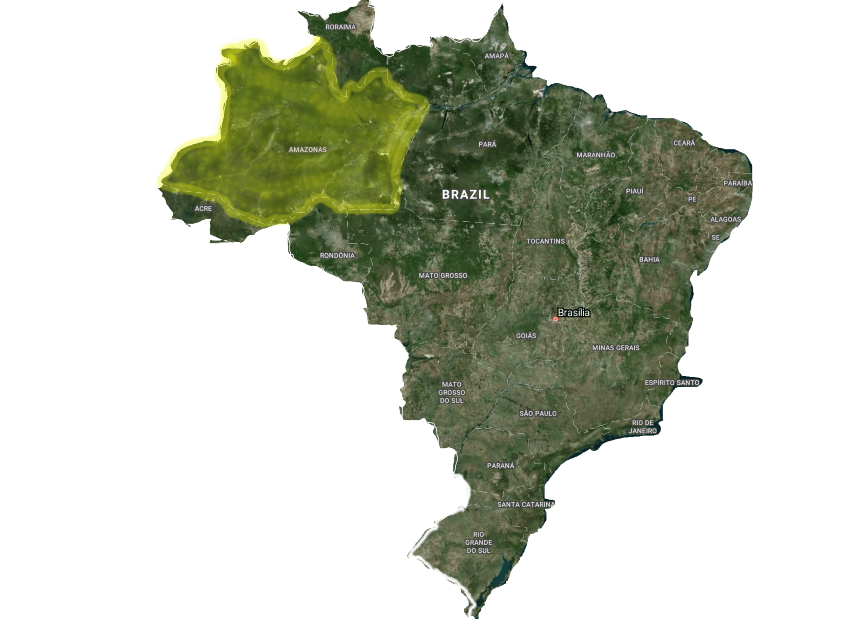
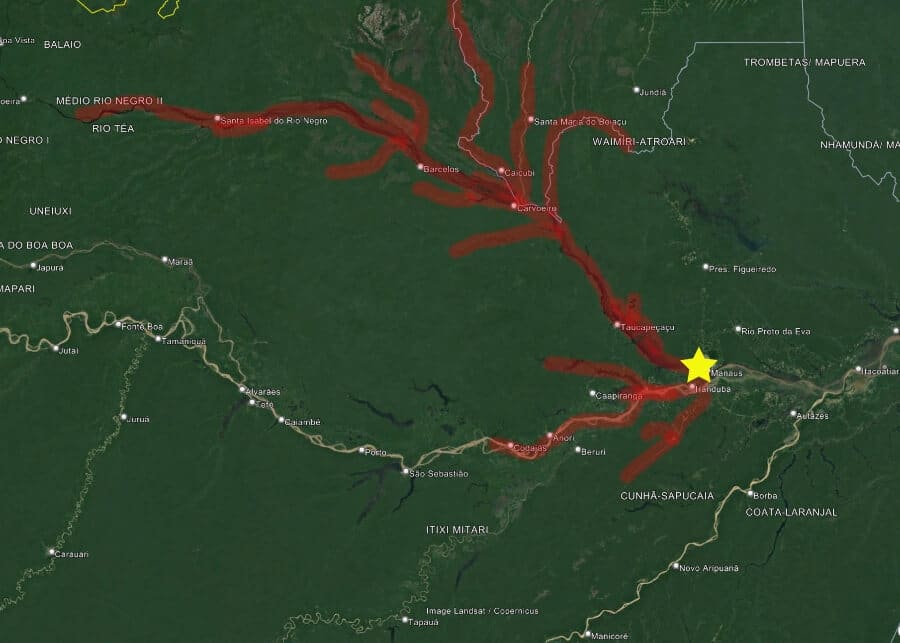
Recommended Fishing Tackle for the Amazon
With all of these exotic species to catch, including several IGFA world record fish, the suggested tackle for peacock bass fishing in Brazil is surprisingly simple. Our standard set up is to send anglers out with just two rods: a medium/light rod with a spinning reel and a medium/heavy rod with a baitcaster reel. Reels are spooled with 65 lb braid, as anything else can easily get snapped by the aggressive strikes of large peacock bass. These outfits have been tried and tested for over 20 years, and are not only dialed into the most productive lures, but also the fish we catch.
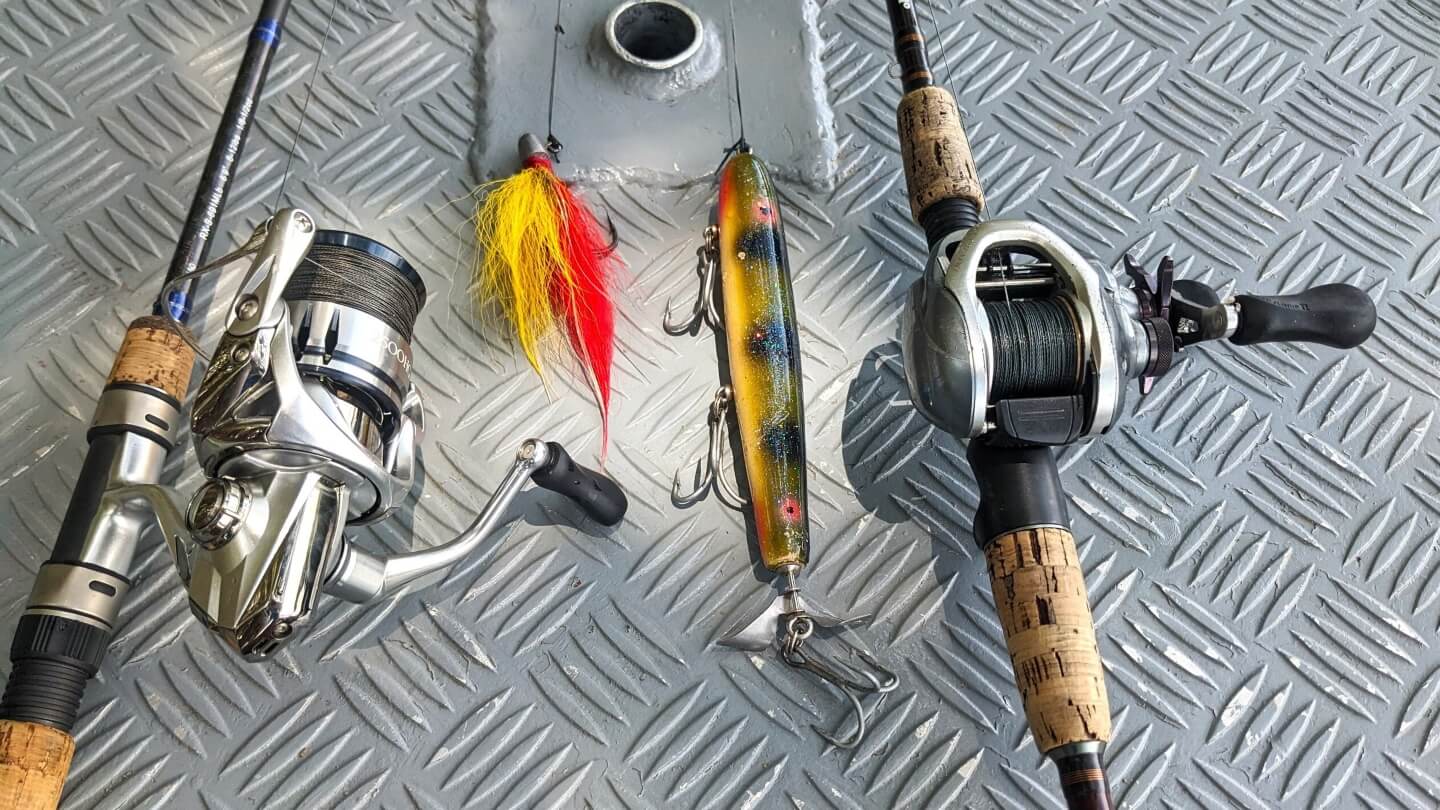
Our Brazil fishing operation also includes the most productive lures as part of your Amazon fishing package. The lure that is going to catch the most amount of peacock bass, week after week, is a simple bass rattle jig that you cast and speed retrieve with your spinning rod. A ½ ounce lead head and a 6/0 hook do the heavy lifting, while the feathers make the headlines. It seems that every trip, the most effective color combo is yellow with red. It’s entirely possible that a trophy peacock bass will inhale the jig if it sees it, casting this lure all day with your spinning rod tends to lead to more quantity than size of fish. For better or worse, piranha, bicuda, and aruana will also strike the jig throughout your week.
While larger peacocks will happily take the jig if they see it, if you are specifically targeting a trophy 15-20 lb peacock bass the best way to elicit a bite from a giant is the famous wood chopper. A simple buzz bait, few lures will get struck harder than a wood chopper that is ripping apart an otherwise glass-calm water surface. You’ll catch fewer fish this way versus the bass rattle jig, but the trade off is that most that do try to eat a six inch surface plus will be 8 lbs or bigger. A collection of these are also included in your all inclusive package.
Of course with six full days to fish the Amazon, you’ll have ample time to try any lure you wish. While you do not need to bring down any of your own tackle or lures, few places can serve as better testing grounds than the mighty Amazon River. Feel free to bring a collection of your own poppers, swim baits, stick baits, and jigs and see how they perform in the ultimate freshwater fishery.
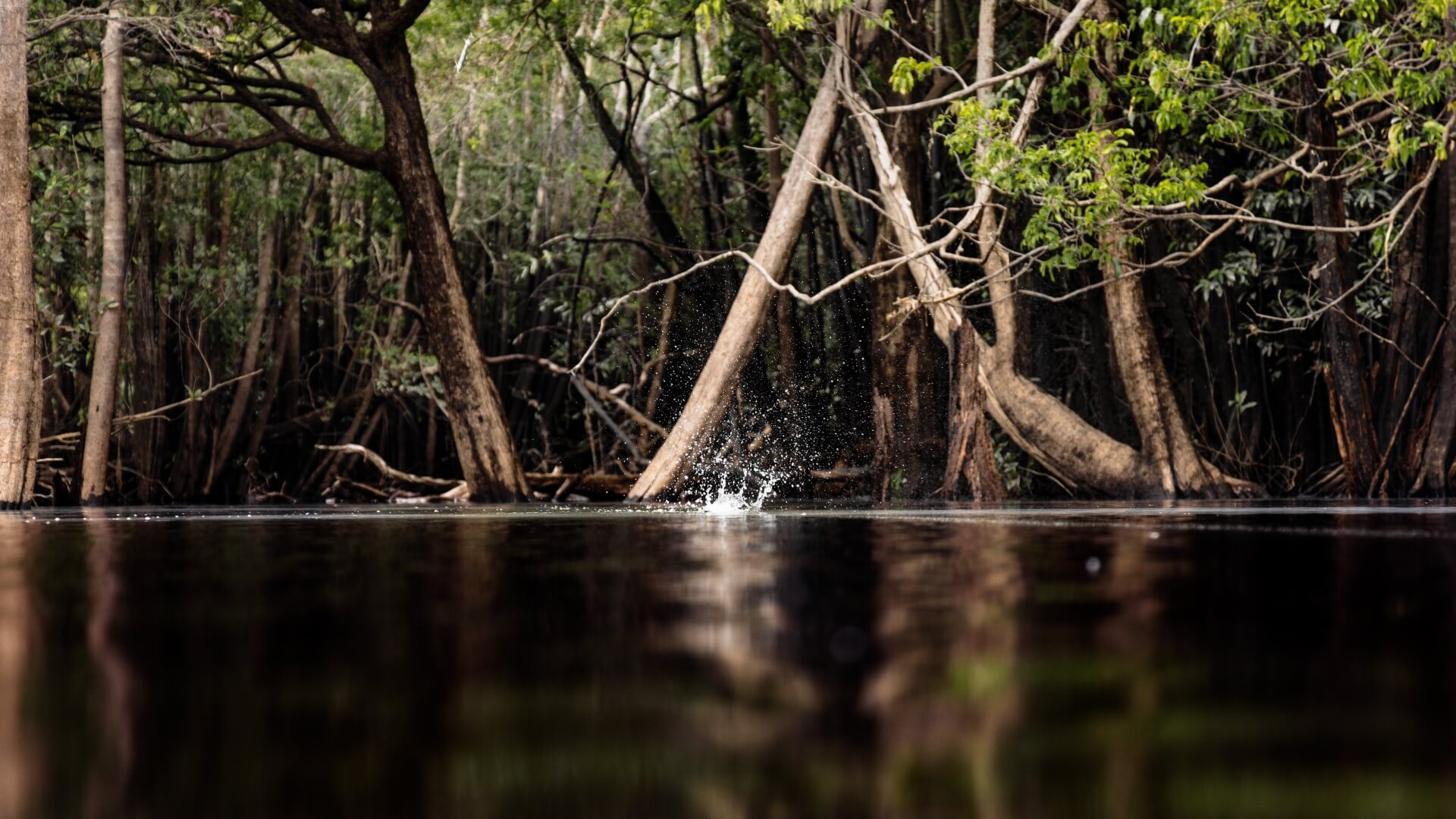
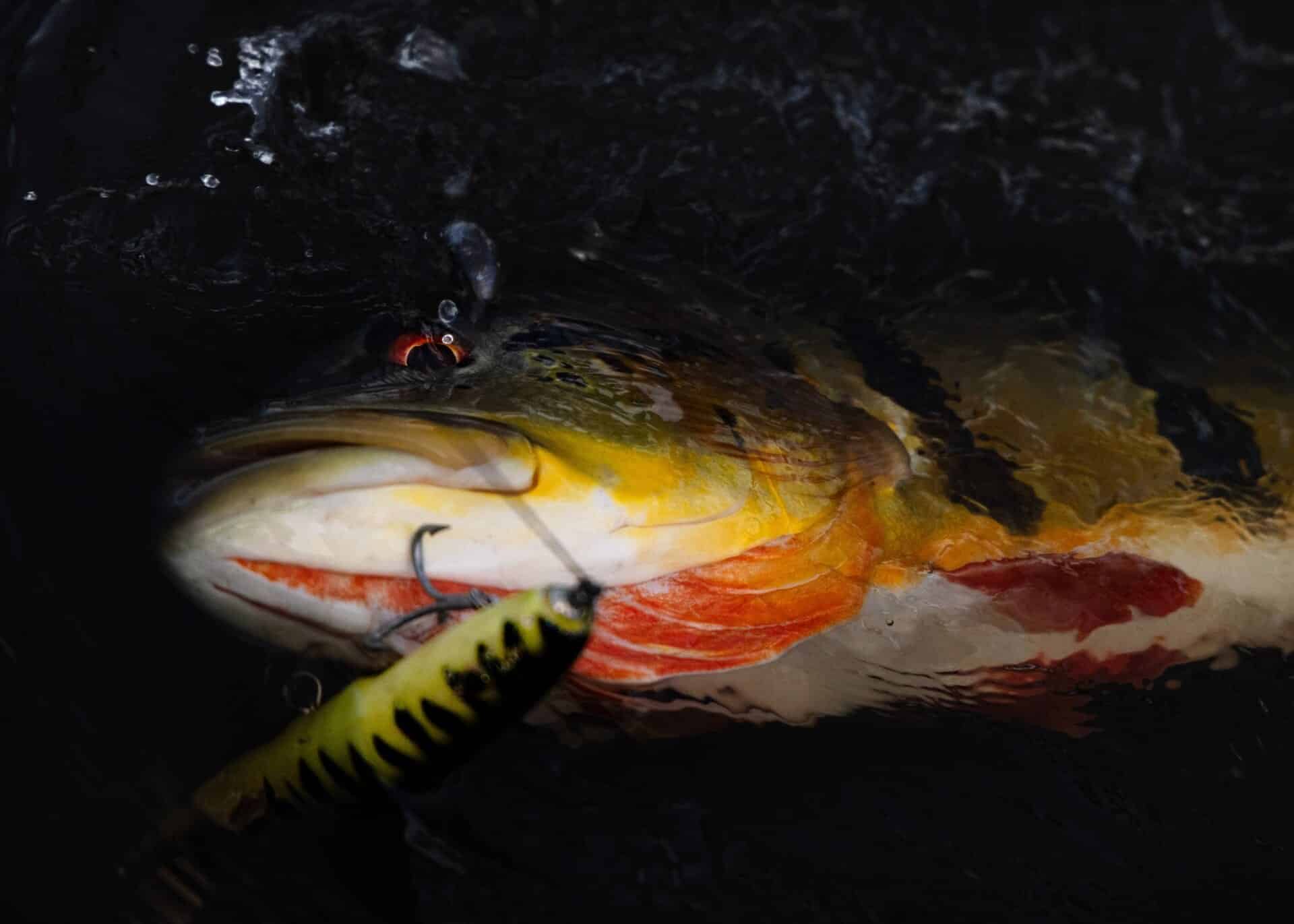
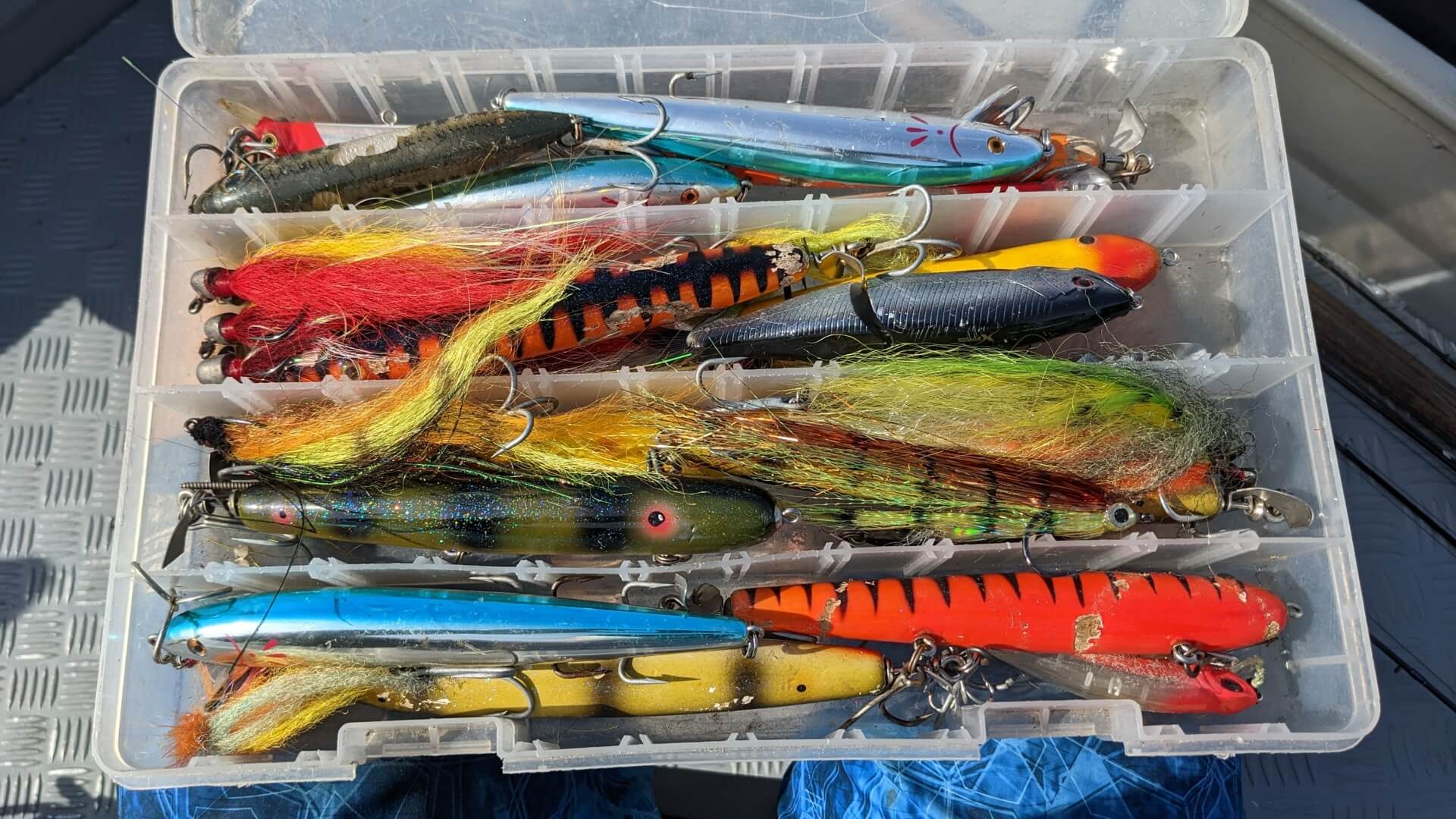
Fly Fishing in the Amazon
The Amazon is also an incredible place to fly fish. Fly fishing tackle is not included in the package however, so all fly anglers must bring their own gear. A 9 wt or 10 wt rod is ideal so you can cast all day long but also have enough backbone to handle the scorching runs of an angry peacock bass. Having two large arbor reels would be ideal: one with floating line and the other with sinking tip so that you can adjust based on the various water levels and conditions you’ll see throughout the week. Large streamers, clousers, and popper flies are all great choices. If you have fly fished for tarpon before, any of those flies will likely work here too.
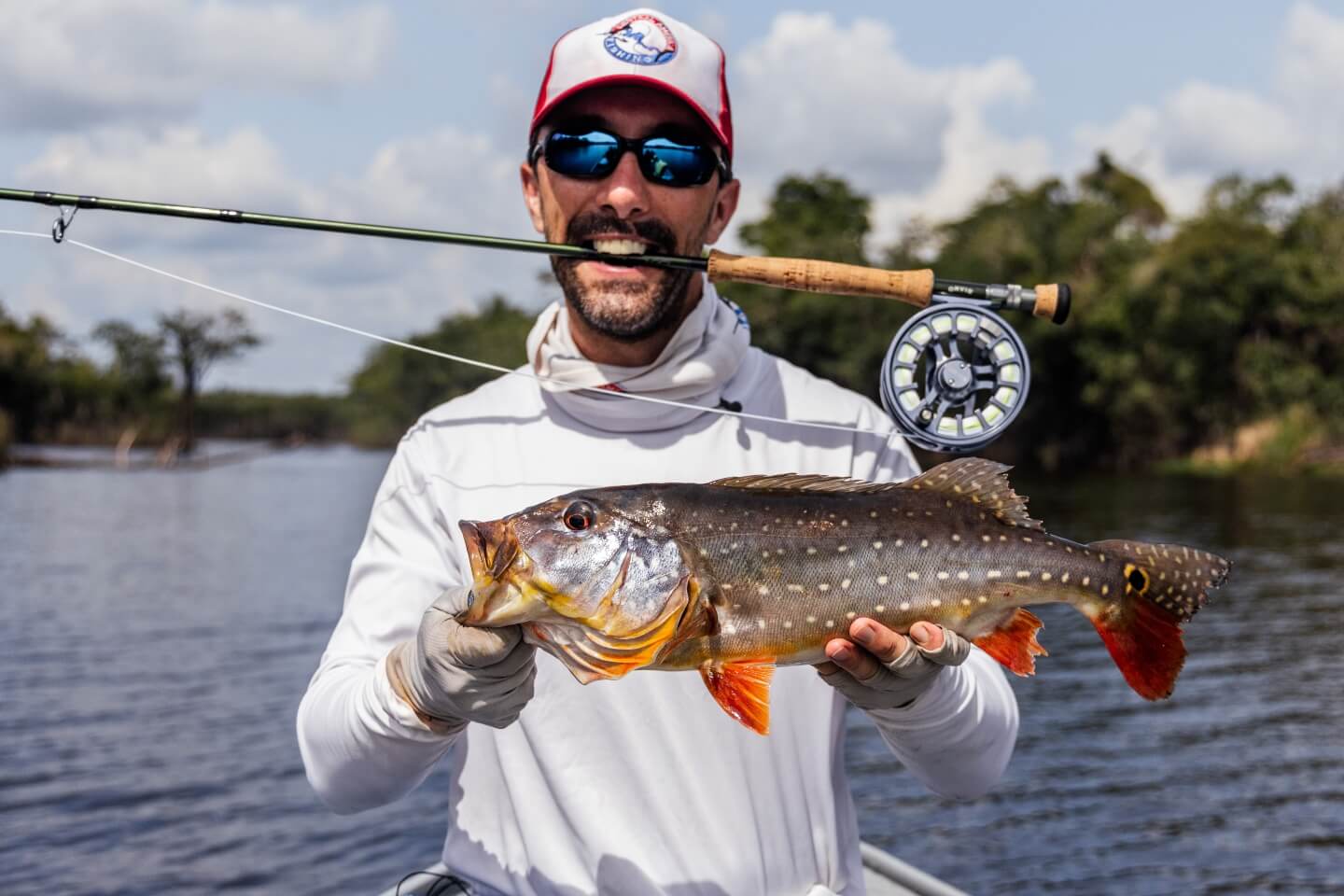
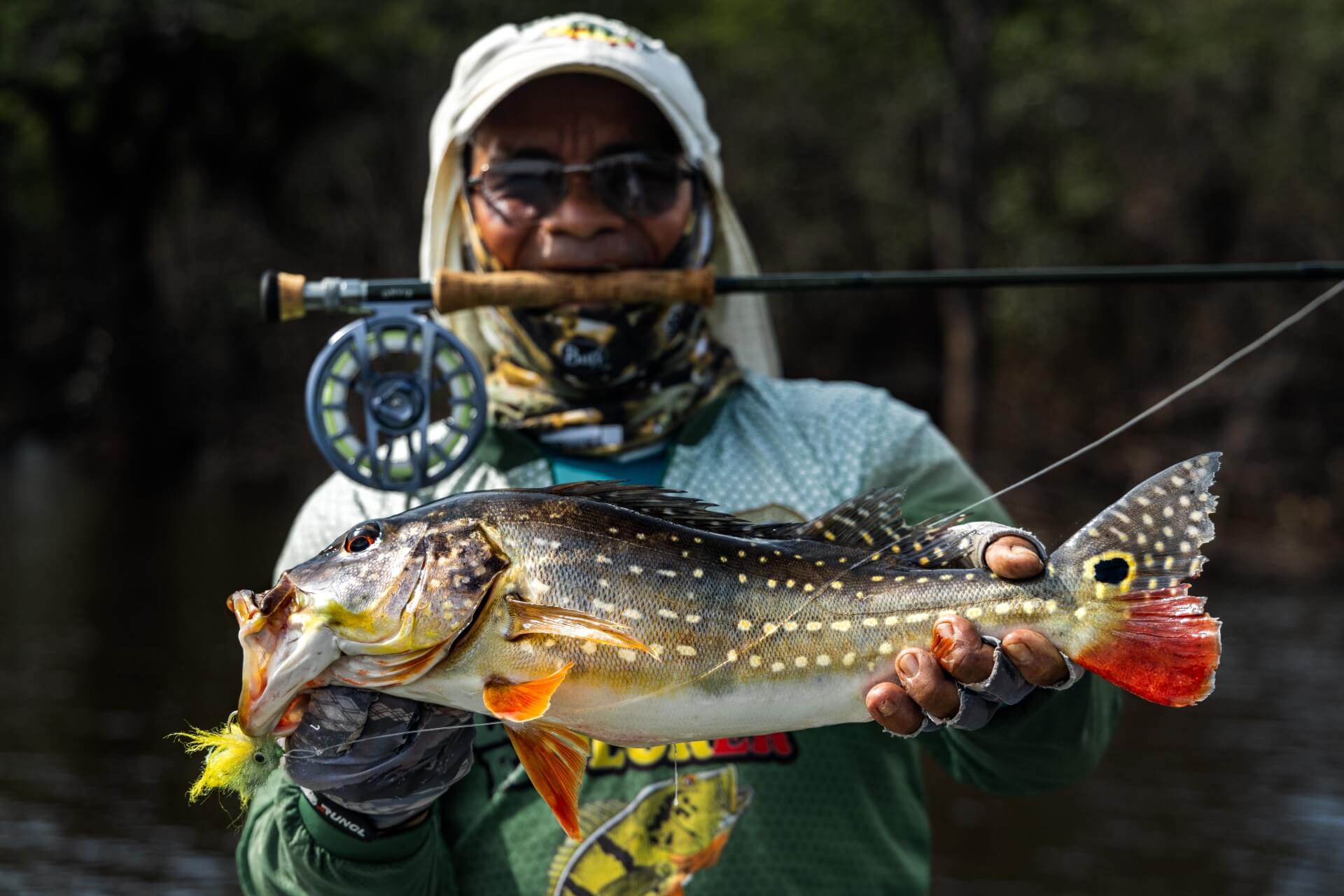
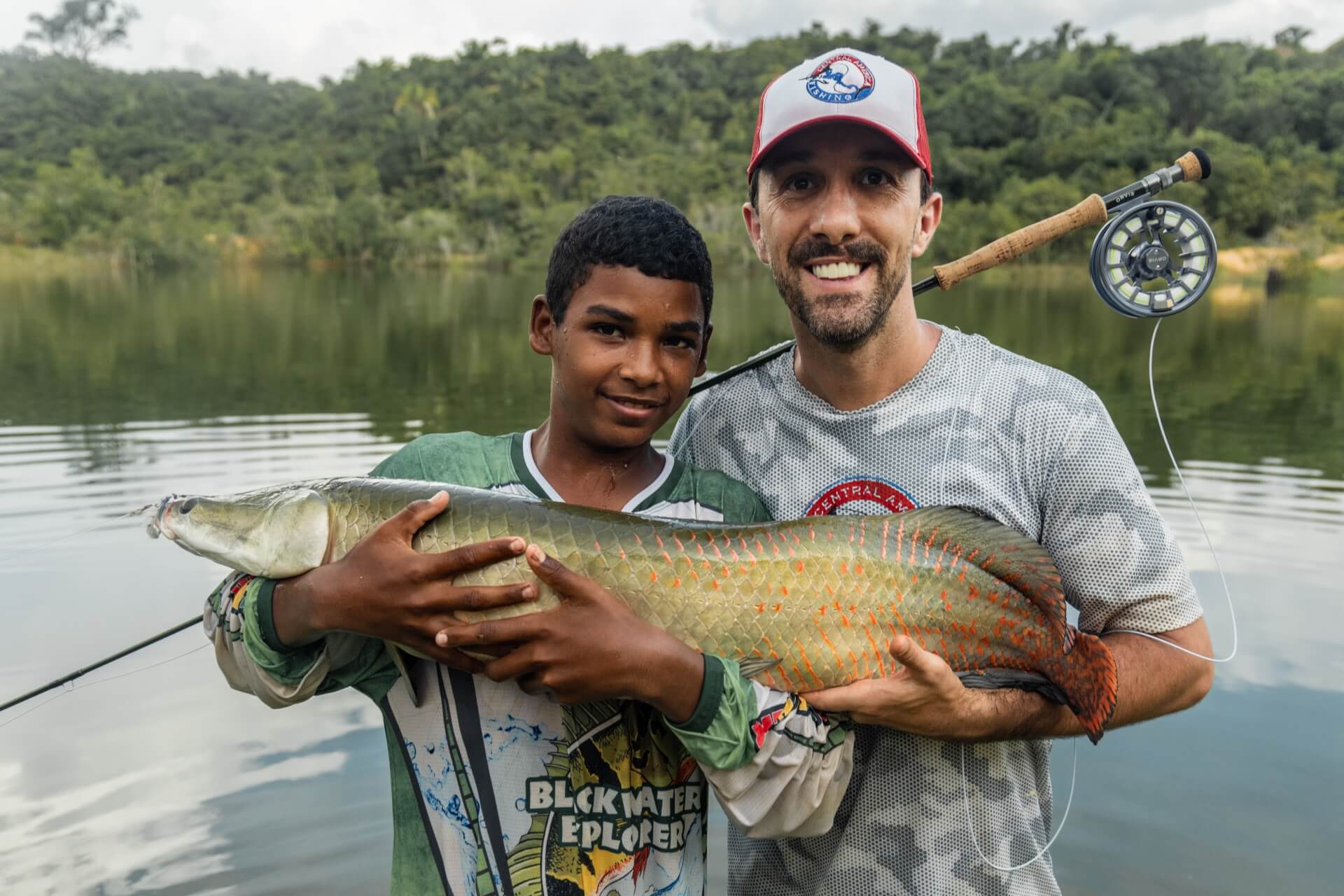
Peacock Bass Fishing in Brazil
While there is no shortage of exotic species to catch in the Amazon, the one at the very top of the list is of course the mighty peacock bass. Peacock bass are of course not bass, but rather cichlids. Native to tropical regions of South America, Africa, and southern Asia, they are admired around the world for their beautiful colorings and sport fishing qualities. Naturally aggressive and territorial, the violent surface strikes and scorching runs make these fish a favorite gamefish for any freshwater angler.
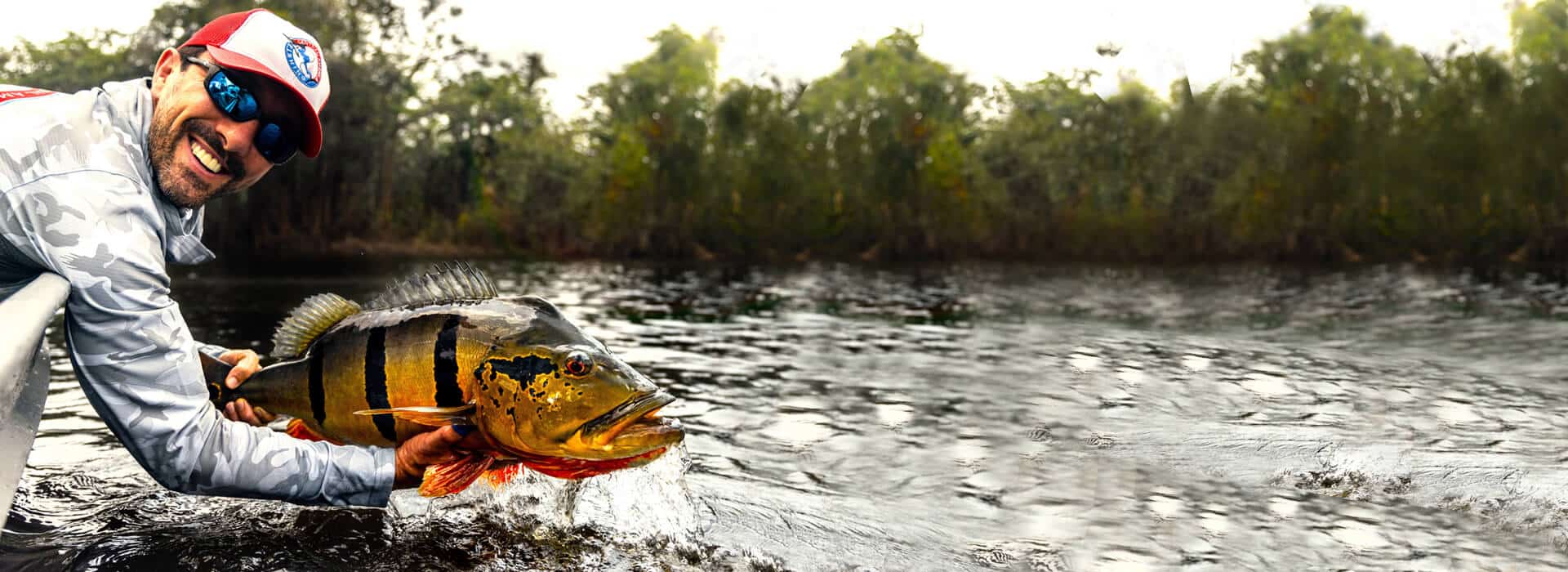
As recently as 2006, scientists only recognized five species of peacock bass. Today there are 16 different species of peacock bass, and they are not all created equal. While some species have been able to survive being introduced to areas like Southern Florida (cichla ocellaris) and the Panama Canal (cichla pleizona), the only place to find the giant peacock bass is in its native home, deep in the Amazon rainforest. Best known as the speckled peacock bass, three-barred peacock bass, or giant peacock bass, the official name is ‘Cichla Temensis’. There is a lot of confusion regarding this particular species of peacock bass because of the drastic transformation it undergoes during its annual life cycle. When they are not busy spawning, their bodies turn brown and are covered in spots, like a fawn in the springtime. Once the water levels drop and spawning season nears, peacock bass begin to feed aggressively and gradually trade those spots for their more common look of three vertical black bars on the sides of their yellow sides. For many, many years it was believed that these were two different species of fish, but in fact they are the same. The pictures below are all of the ‘cichla temensis’ throughout it’s various life cycle changes.
The IGFA world record for the speckeled peacock bass (cichla temenisis) is a whopping 29 lbs 1 oz (13.19 kg). It was caught in 2010 right here in same Rio Negro waters that we fish, so if you are after trophy fish there is no better spot to be than the Brazilian Amazon. Our top fishing guides say that any peacock bass over 10 lbs is notable, anything over 15 lbs is considered a trophy, but catching a peacock bass over 20 lbs puts you in the hall of fame (plus it qualifies for the official IGFA trophy club).
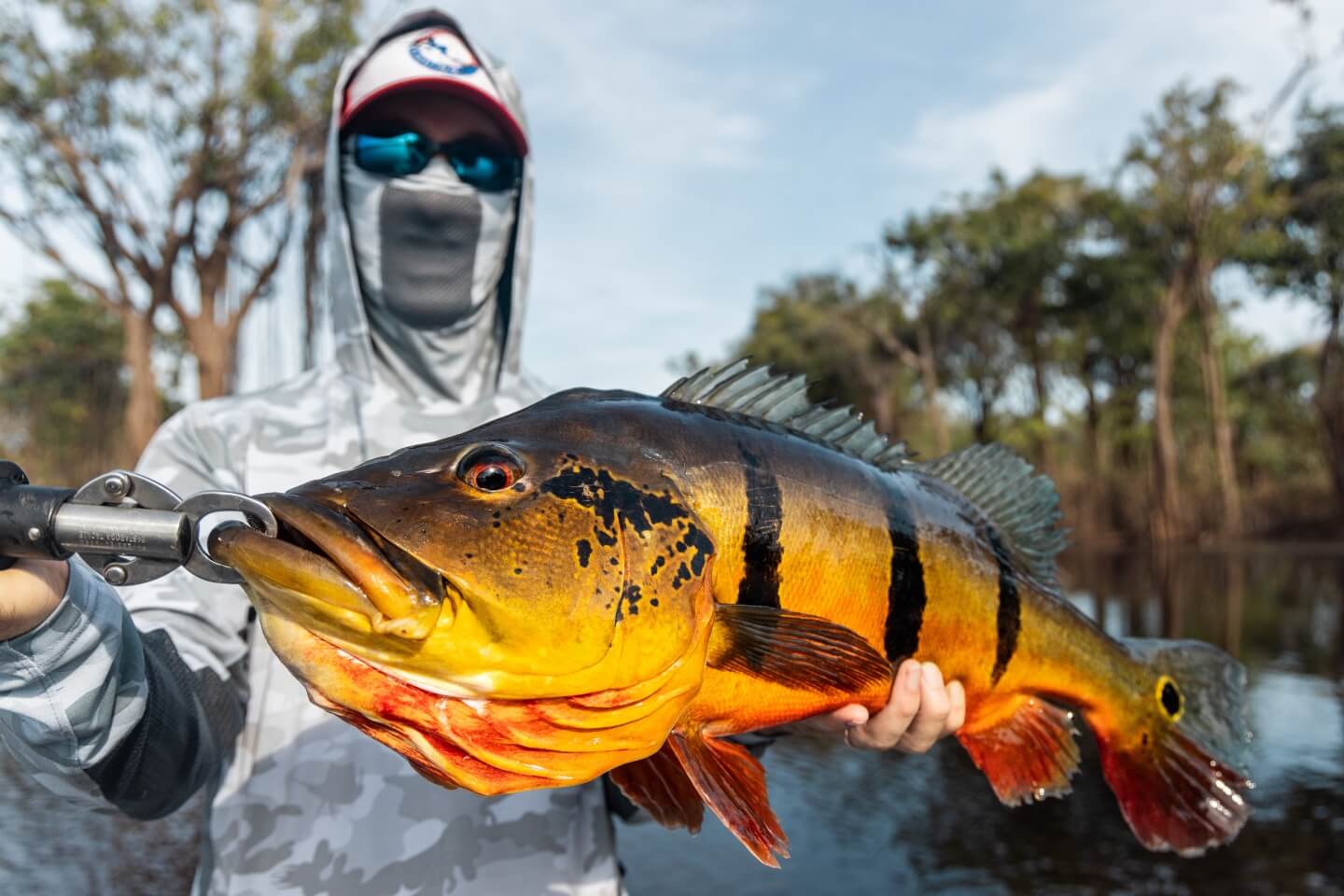

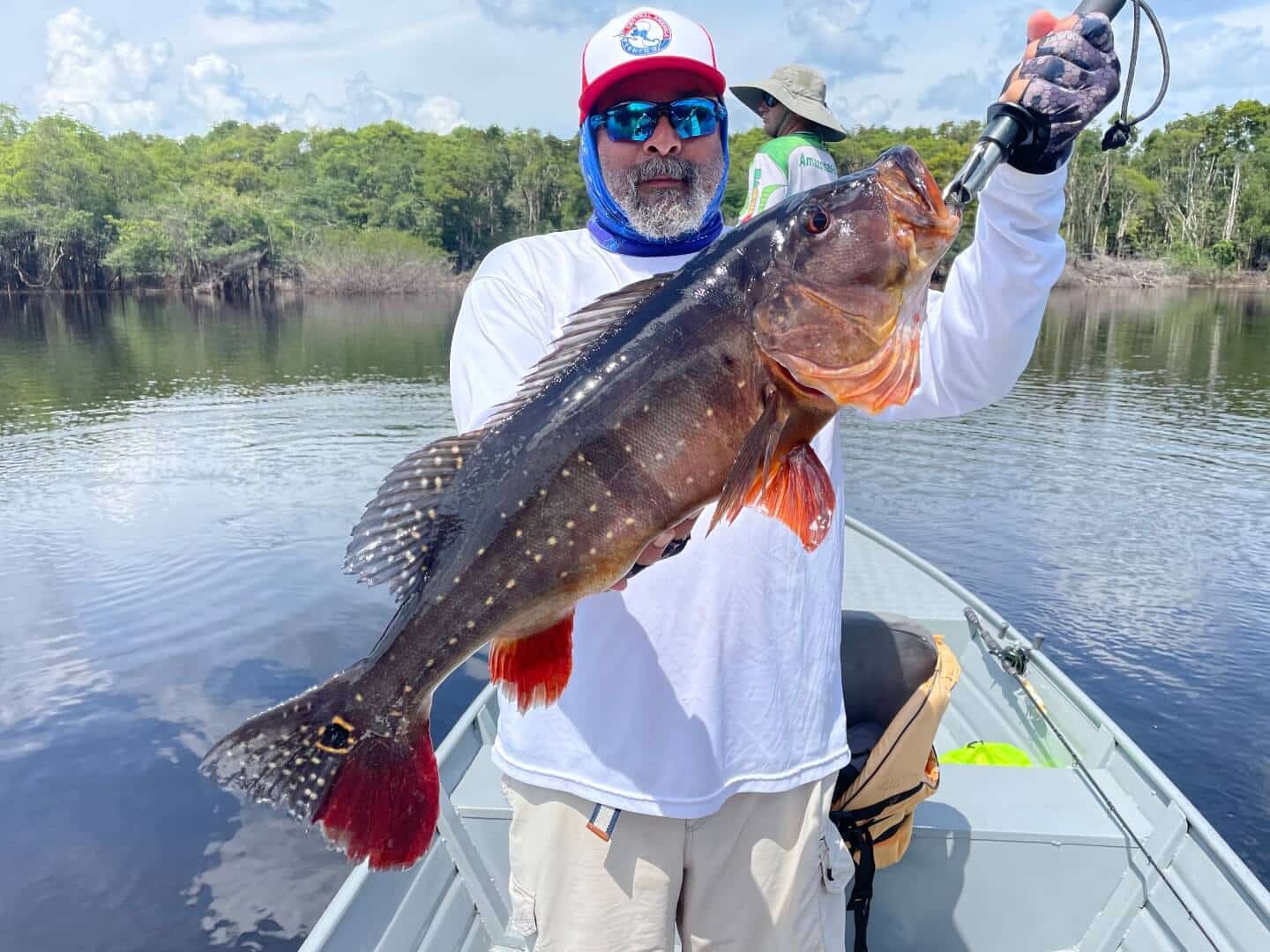
Manaus
All of our Brazil fishing vacations start and end in Manaus. Manaus is the capital of the Amazonas, which is the largest of the 26 states in Brazil at over 606,400 square miles. Located right on the Rio Negro, Manaus’s history dates back to the late 1600’s when a small fort was built by Captain Fransico da Motta Falcao from Portugal. By 1850, Manaus had been named the capital of the Amazonas and was the center for most Amazonian exports. The town exploded in the late 1800’s thanks to the booming international rubber trade and the abundance of rubber trees surrounding the city. Manaus was the first city with electric street lights in Brazil, piped water & gas, and a huge marina of floating docks. The worldwide demand for rubber plummeted in 1910 due to low cost rubber plantations in Asia, and shortly after Manaus experienced a rapid decline in prosperity and its population.
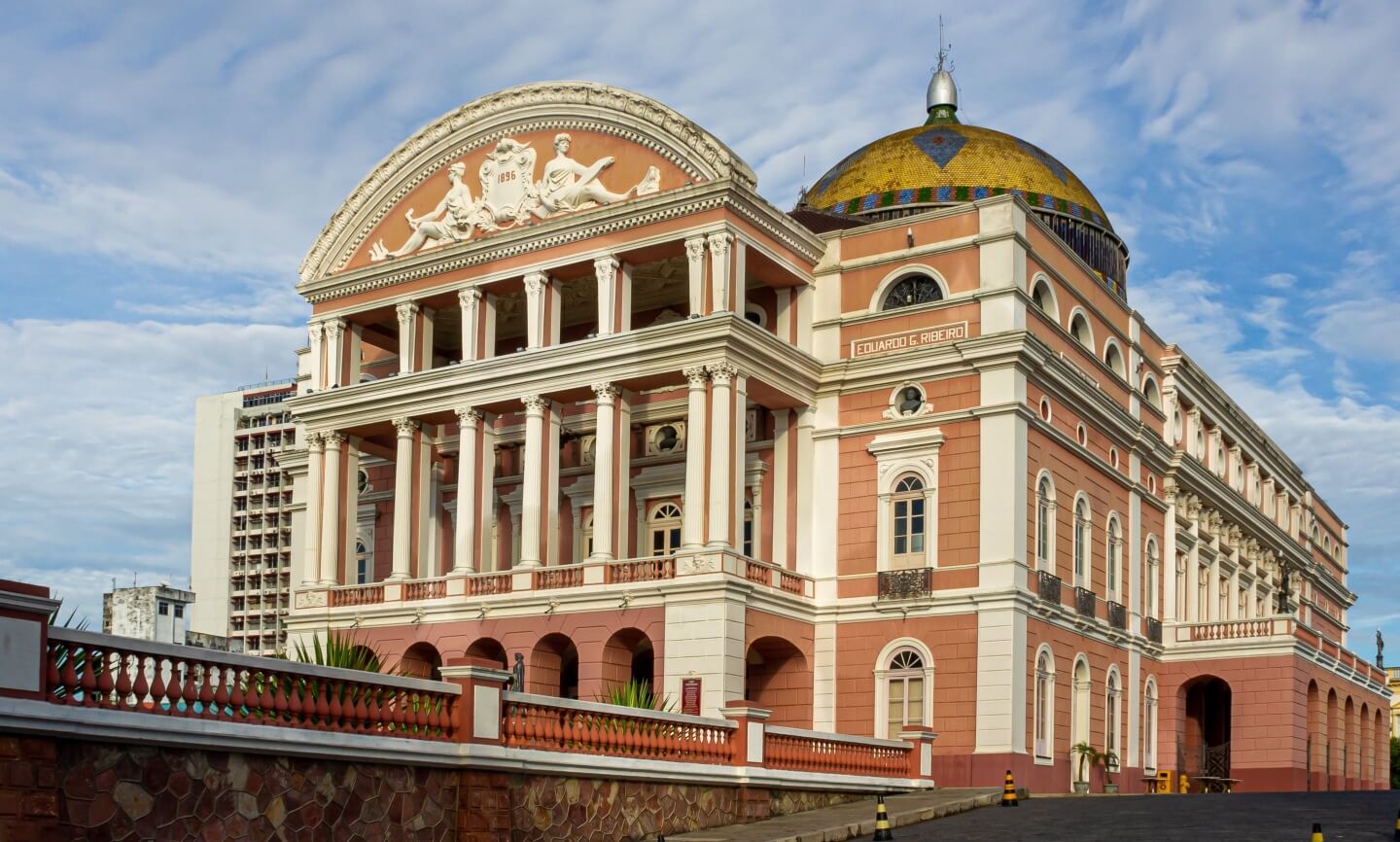
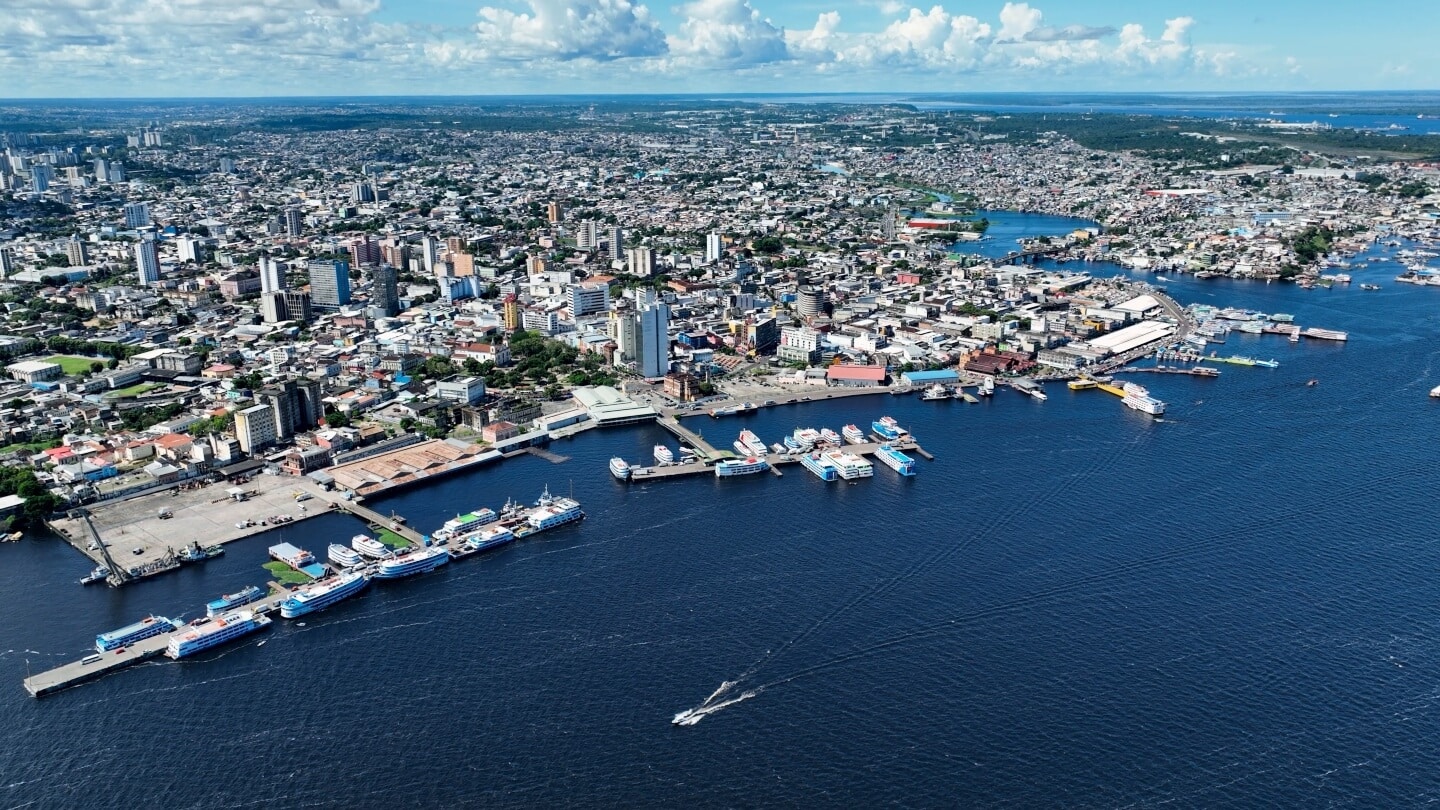
Manaus survived however due to the fact it was one of the only major ports and urban centers found on the Amazon deep in Western Brazil. To breathe life into the decaying city, the government declared Manaus a free port in 1967, and shortly after commercial and industrial development returned. Despite the fact it is over 900 miles from the Atlantic Ocean, it remains one of the Amazon’s most important ports.
Today Manaus boasts a population of over two million people and is becoming as known for tourism as it is shipping. It has earned the nickname “the Gateway to the Amazon” as it is often the starting point for any Amazon adventure in Brazil. It is home to the modern MAO International Airport, which receives nonstop flights from the Southern USA, Panama, and all over South America. The majority of anglers travel a long way to reach Manaus, and once they arrive many want to explore the world’s most famous rainforest and experience local Brazilian culture. It is very easy to add extra nights in Manaus before or after your Brazil fishing vacation, so below is a list of our top day trips from Manaus.
Top 8 Day Tours Available from Manaus
Arapaima Fishing
Exclusive for CAF anglers, we have access to a private farm that has 14 ponds on it – all of them full of hungry arapaima. Fishing for arapaima is illegal on the Amazon River now that they are protected species, so the only place to do it legally is on private farms and indigenous reservations. Spend your day fishing a private farm with 14 private ponds and test your mettle doing battle with one of the world’s largest freshwater game fish.
Manaus City Tour
Enjoy a guided tour of Manaus with your local, bilingual guide. Your day starts by visiting the pride & joy of Manaus, the famous Opera House. Built in 1896, this stands as a symbol of the great wealth brought to the area by the rubber trade at the end of the 1800s. Stroll through downtown as you admire the city and learn about it’s history. Next stop at the famous open-air fish market, which is an eclectic mix of local commerce and some small souvenir stands.
Presidente Figueiredo Waterfalls
Venture outside of Manaus to visit the city of Presidente Figueiredo. Located just sixty miles from Manaus, this area offers visitors lush forests, rivers, and over 100 waterfalls.. The tour includes a visit to the Iracema Waterfall, which is the perfect spot for cooling off with a refreshing swim. Stop to enjoy a local lunch that will be served at the Urubuí Park. After lunch visit the Sanctuary Waterfall, which is accessible after a short walk.
The Meeting of the Waters
Take a boat ride to see the exact spot where the Rio Negro joins the mighty Amazon River. The stark contrast from the black water of the Rio Negro to the yellow-brown water of the Amazon where one of the world’s largest tributaries meets the world’s largest river.
Rubber Museum
Leave Manaus to visit Vila Paraíso (set of the movie “The Jungle”). The tour starts with a visit to the Rubber Master House, a majestic construction that shows the wealth of rubber plantations during the industry’s boom period. The tour follows with a visit to the “Large Tent”, where the tools were kept under control, the “Chapel” and the warehouse for the manioc flour. Following the trail in the jungle, we will see the rubber trees and the process involved to collect the latex. Next we visit a house where the rubber balls were brought to begin the smoking processFinally we’ll end the tour by visiting a very modest house of rubber extractions where employees are portraying the life and habits of the old rubber extraction era.
Amazonian Museum (MUSA)
Just outside of Manaus you can enjoy the open-air museum ‘Museu da Amazônia’, the Amazonian Museum commonly known as MUSA. There you will walk the paths ithrough the forest of the 100-hectare park,, see exhibitions, the nursery of orchids and bromeliads, aquariums, the lake, as well as experimental laboratories of snakes, insects and butterflies. The highlight is climbing the 140 ft (42 meter) tall observation tower for a beautiful view of the canopy of the world’s most important rainforest.
Best of the Rio Negro
The tour starts with a journey to the famous “Meeting of the Waters”, the completely natural phenomenon where the Rio Negro joins the mighty Amazon River. Next we visit the Janauari Ecological Park to enjoy a ritual with indigenous dances where visitors are invited to interact with the natives. Enjoy a local lunch on a floating restaurant and then visit the handicraft shop and Victoria Regia. We’ll end the tour visiting the pink dolphin platform where you’ll be able to view one of the Amazon’s most famous inhabitants.
Jungle Survival Tour
Enjoy a two hour jungle tour near the Tupé Village where we’ll learn all about the local flora and fauna. You’ll learn to identify local fruit trees, medicinal leaves and edible roots as well as find sources for drinkable water. We’ll conclude the tour with a short visit to the home of a local indigenous tribe.
Brazil Fishing FAQs
Do I need a fishing license to fish in Brazil?
YES. All anglers need a fishing license to fish in Costa Rica. These are sold by the Instituto Costarricense de Pesca y Aquacultura, or INCOPESCA as they are known here. Unfortunately their website has functionality and language issues so it’s not easy to use, so you can buy the license in the morning right before you fish for the first time. The cost is $15 for one week or $30 for one month and it must be paid in cash.
How many people will be on my fishing boat?
All fishing charters booked by Central America Fishing are private, so the boat is 100% yours. We do not set up any shared charters.
What is the standard tip for a fishing charter in Brazil?
A standard tip for a charter fishing crew in Costa Rica is 10%-20% of the cost of the charter. Most captains are paid a low salary with the idea they’ll earn more tips the more they fish, but many mates rely 100% on tips for their income. Tipping in USD or Costa Rican colones is fine. We recommend giving the entire tip to the captain and let him divide it up with the mate.
Can I bring my own fishing gear?
OF COURSE! Even though our private charters provide all the fishing tackle and bait you’ll need, you are always welcome to bring your own lures, reels, and even rods if you want to catch fish using your own tackle. Fly anglers are always encouraged to bring their own fly gear.
Which fish in Brazil are catch and release and which ones can I keep to eat?
By law, all billfish in Costa Rica are strictly catch and release. While not a law, we also strongly encourage releasing all roosterfish, tarpon, and cubera snapper as they are such prized inshore species. Other species like tuna, dorado (mahi), wahoo, snappers, groupers, corvina, snook can be kept and enjoyed for a fresh seafood dinner.
Can I bring fish back home with me to my own country?
If you really want to enjoy your catch our best advice is to eat it while it’s fresh here in Costa Rica. We understand many of you love the idea of a Costa Rican seafood dinner in the comforts of your own home, so the good news is there is no law against it and people do it all the time. However – we do not have the final say in this so there are some things you need to keep in mind:
1 – Unlike some other popular fishing destinations, in Costa Rica there is no service that will package and ship fish home for you. If you want to bring fish home with you you’ll have to do it yourself in your own luggage. Our best advice is to bring down a soft sided, leak-proof cooler, have your fish frozen completely solid, wrap them in newspaper, and then check your cooler as part of your luggage since it will stay cooler in the cargo hold of the plane versus in the cabin as a carry-on. If you don’t have a cooler or forget to bring one, you can purchase affordable plastic coolers here in local grocery stores.
2 – While Costa Rica does not prohibit you from bringing fish fillets home with you, your international airline might. We strongly recommend you confirm this with your airline (in writing if possible) or you may have the fish confiscated from you at the airport check-in.
3 – Even if your airline lets you fly the fish home, your local customs may have an issue with you bringing in meat products from a foreign country. In our experience most customs agents don’t seem too interested in you bringing back frozen fish fillets from your fishing vacation to Costa Rica, but it can depend on the agent and depend on the day.
What if there is bad weather on our fishing day?
First of all, it is extremely rare to have a fishing day cancelled due to bad weather. Costa Rica is too far south for hurricanes, and on top of that we custom design every single one of our Costa Rica fishing packages to factor in not only where you’ll have the best fishing but also the best weather & sea conditions for the time of year you visit us.
It does happen every once in a while however, so if the captain, local marina, or government deem the conditions are unsafe the trip will be cancelled. The first course of action is to try and reschedule you, but if that is not possible you will be refunded in full.
Please note that rain and dark clouds are not considered bad weather. We are in the tropics and rain is a common occurrence here so that is not a cause for cancelling the trip. Many great fishing days happen in the rain – as they say the fish are wet anyway!
What Our Guests Love
About Brazil
The Amazon River is one of the world’s most exotic fishing destinations that anglers dream about having the chance to experience. To be able to not only spend a week deep in the Amazon rainforest, but also catch exotic species on one of the world’s biggest and most famous rivers, is the definition of a bucket list trip.
All of our Brazil fishing packages are all inclusive, so all of your meals, alcoholic & non-alcoholic drinks, and in country transportation & domestic flights are included in the package price. The food is delicious and plentiful, and you have a full open bar, so a week deep in the Amazon doesn’t leave you wanting for much.
All of our Brazil fishing packages have local, bilingual hosts to make sure your vacation is as easy and stress-free as possible. Your fishing guides will speak limited “fishing English”, but the host at your lodge or on the mothership will be able to answer any questions you have and be your expert local resource.
The majority of our anglers come to Brazil to catch peacock bass, and the world’s best peacock bass fishery never disappoints. Whether you are trying to catch over 100 fish in a day or are just targeting the trophy 20 pounders, the Amazon rarely has “off” weeks that don’t send anglers home happy.
What We Love
About Brazil
With various options for our Brazil fishing packages, we have the ability to customize your experience to focus on higher numbers of fish, smaller numbers but bigger trophy fish, or a multi-species trip that offers shots at payara, piranha, arowana, and huge catfish
Flying to a different continent where you don’t speak the language, and then taking a charter flight deep into the Amazon rainforest so you can spend a week on a mothership, naturally generates some butterflies and pre-travel nerves. We love seeing our anglers be surprised at the level of comfort and the quality of the food and service on these trips. Our peacock bass fishing trips are exotic, yes, but that doesn’t mean you need to rough it!
We’ve been fishing outfitters for 20 years, so we have enough experience to know that you can never guarantee fish on any of our trips. Mother Nature takes orders from no one, so sometimes you truly never know what to expect in terms of fishing conditions or fish behavior. That said, the Amazon River is the world’s best peacock bass fishery so there is almost zero chance that you can spend a week here and not catch peacock bass. On any given day, your next cast could entice a 20 lb monster to attack your lure.
Our favorite add-on to our Brazil fishing packages is a day of fishing for the mighty arapaima on Pastor Odali’s private farm. Located about an hour outside of Manaus, his farm has 14 different ponds that are full of huge arapaima ready to crush a lure. Best of all, the majority of the fishing fees on this day go to help Pastor Odali’s works in local orphanages and foster care.
Why Fish With CAF?
We have been fishing, living, and traveling around Central America since 2003. Plan your trip with local experts to make sure you are in the right place, at the right time, and on the right boat. We’ll help you fish for what you want, the way you want.
Free vacation planning + the best direct rates. No booking fees!
Personalized service from pre-arrival to 24/7 in-country support.
Hand-picked accommodations, fishing captains, expert guides for the best vacation experience.
Nearly 40% of our anglers are repeat & referral guests. CAF puts you on the fish!
We are proud to have a global reach and have hosted anglers from 14 different countries here in Central America!
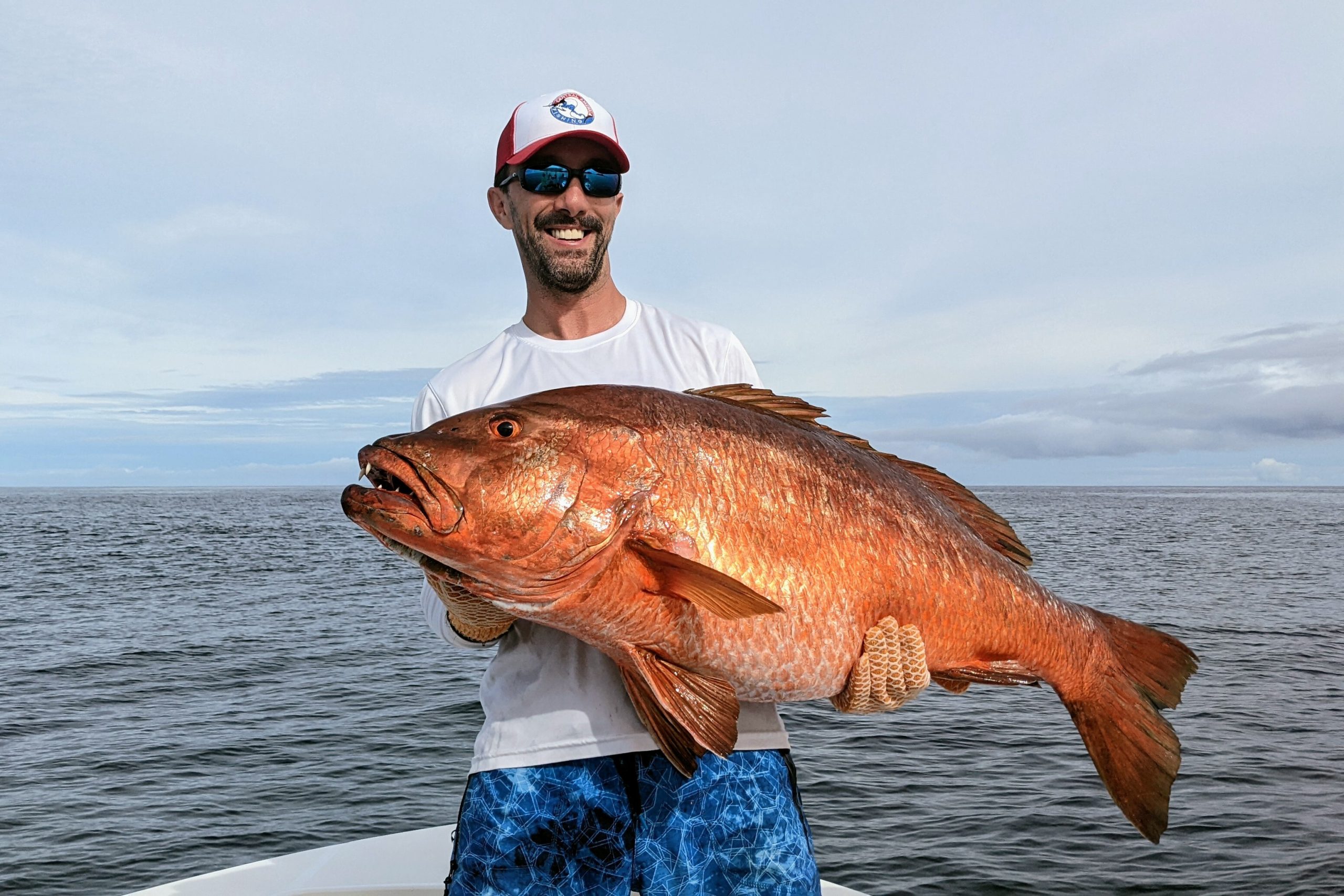
About the Author
I first visited Costa Rica during a semester abroad in 2003 and instantly fell in love with the language, culture, and natural beauty. I caught my first roosterfish on that trip, and ever since then I knew that I wanted to live here. After graduating in 2004, I worked for a year in the corporate world, but I was unhappy and unstimulated, so I returned to live in Costa Rica full time in 2005. Today I can proudly say that I’ve been in Costa Rica for half of my life, I met my wife here, and my two boys were born here so they are “Ticos”.
I’ve been working in the sport fishing industry in Central America for twenty years, I’ve had articles published in fishing magazines, hosted fishing TV shows, fished in several tournaments, and I’m a four-time IGFA trophy club member. I am however most proud to say that 40% of our anglers are repeat and referral guests. I’ve personally visited every destination, hotel, and fishing lodge that we partner with so that your next vacation with us is one of the best you’ve ever had.
Chris Atkins - Angler & Owner of Central America Fishing
All fishing vacations booked with Central America Fishing include the following:
- Free Vacation Planning (no fees + direct rates)
- VIP Airport Meet & Greet upon arrival into SJO
- Private, air-conditioned transfers with English speaking driver.
- Luxury, private accommodations hand-picked and customized for your group. Choose between private condos & villas, luxury beach resorts, exclusive boutique hotels, and fishing lodges.
- Private fishing charters
- All eco / adventure tours you’d like to include
- All Costa Rican taxes
- Free quotes on travel insurance
- Pre-arrival assistance with dinner reservations, tee times, pre-stocking your condo or villa, hiring a private chef, and special requests.
- 24/7 support once you are here in country
